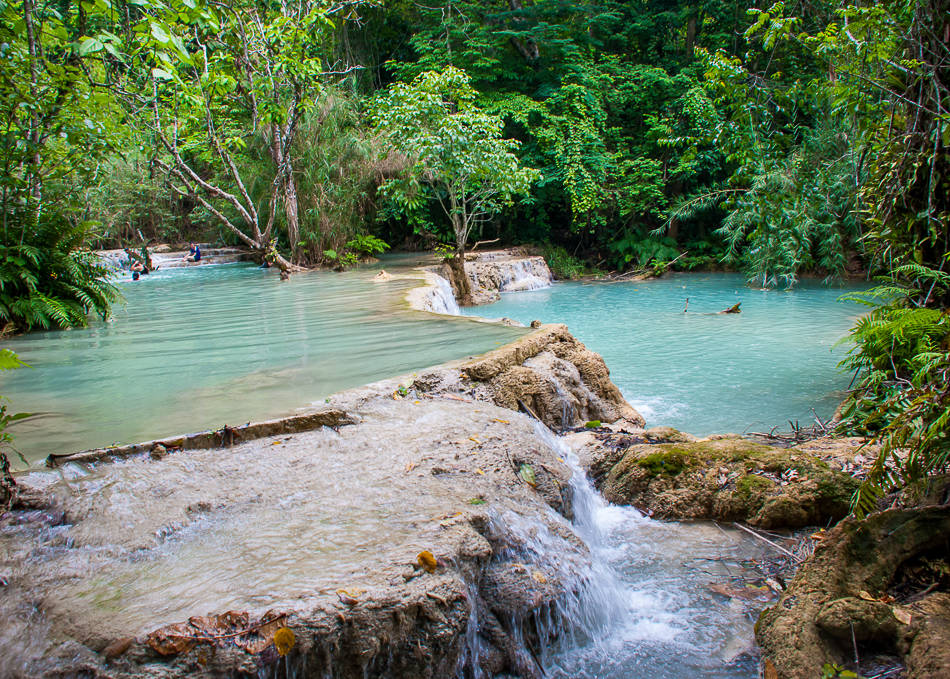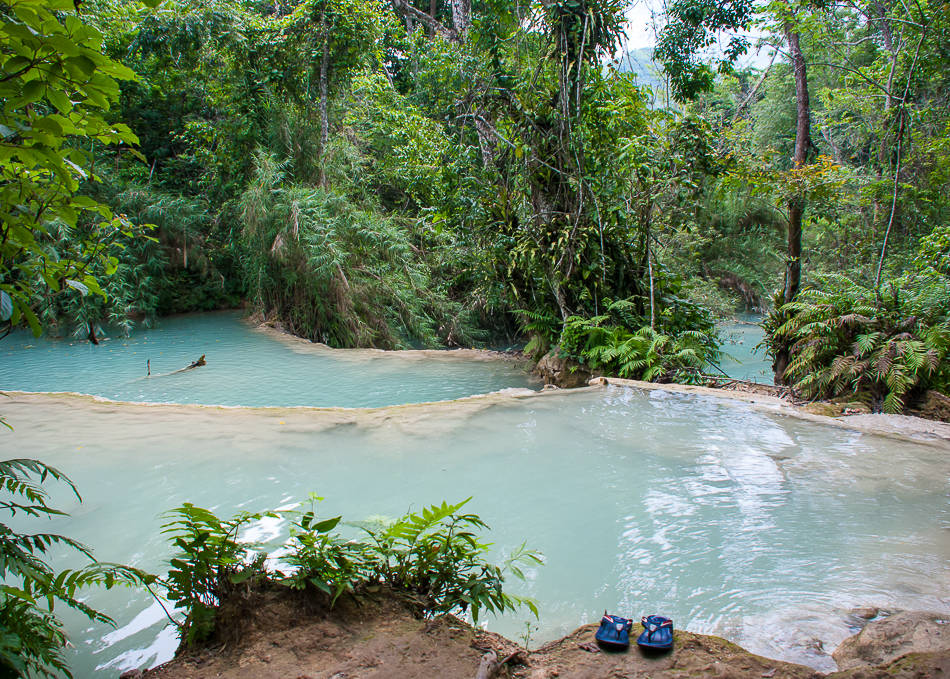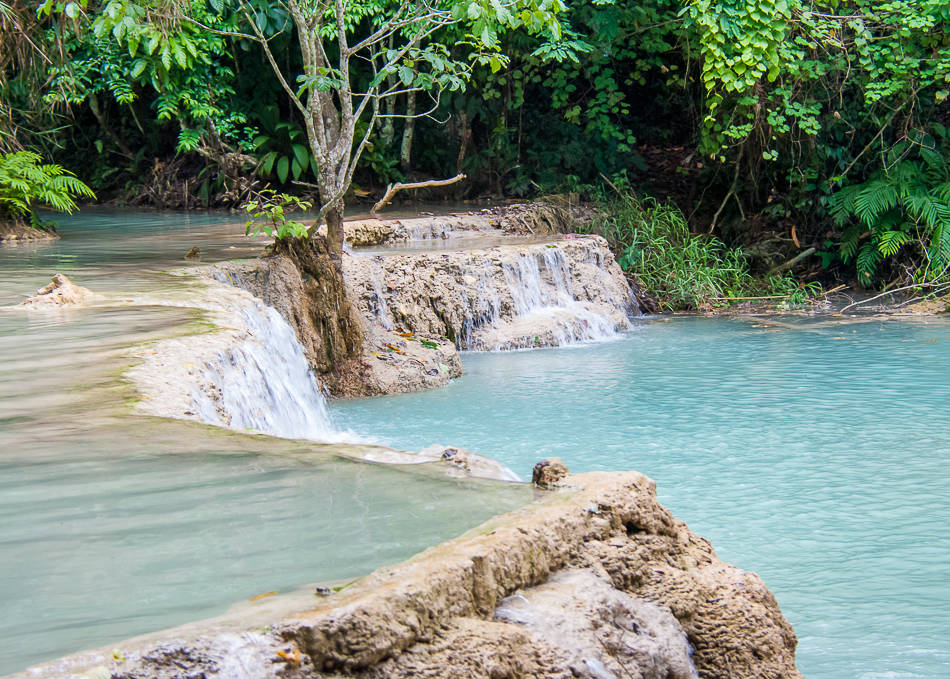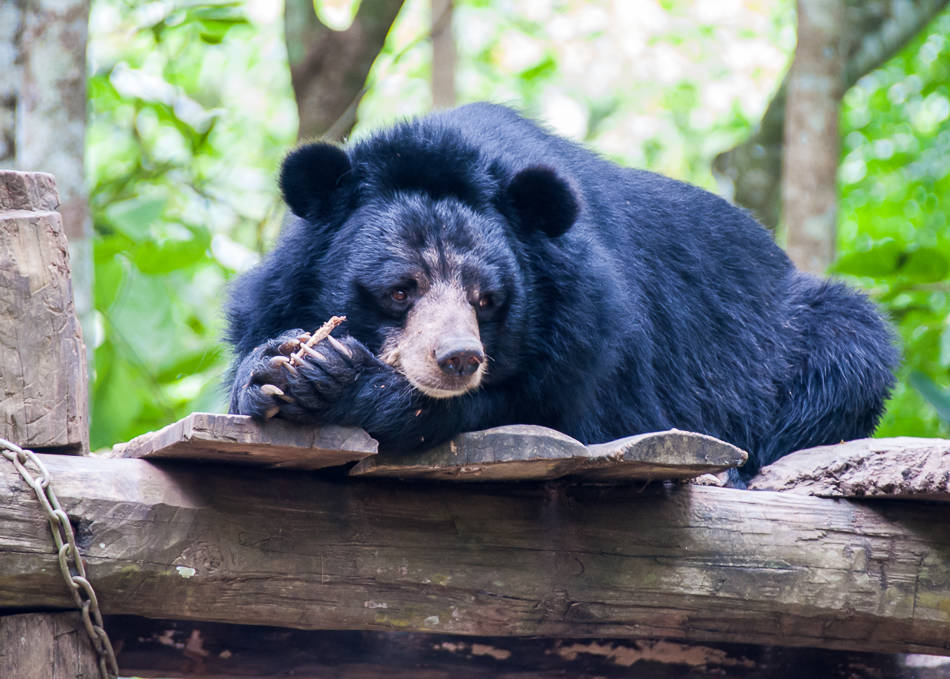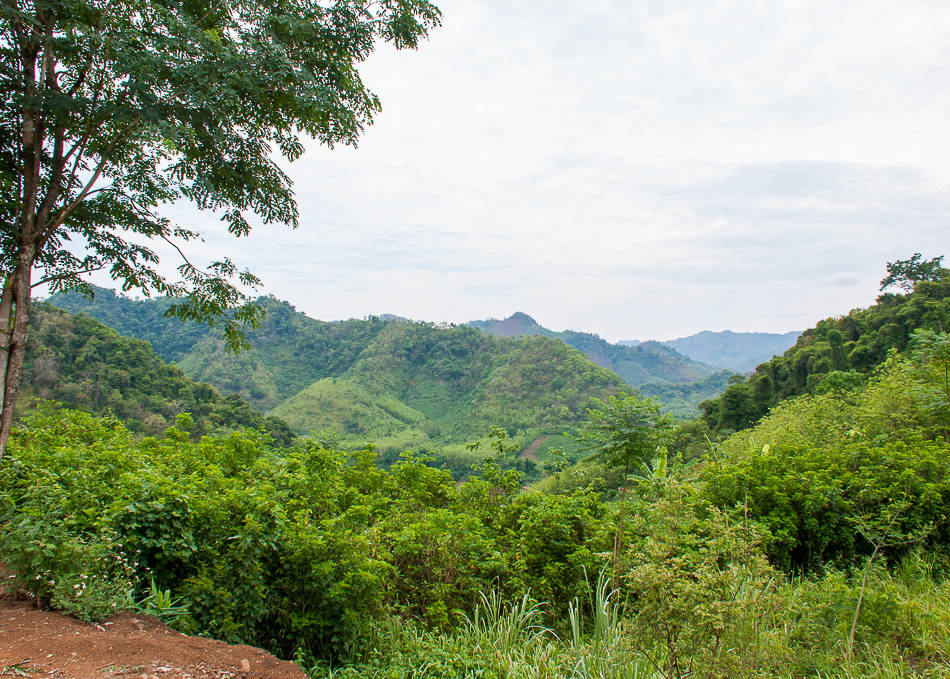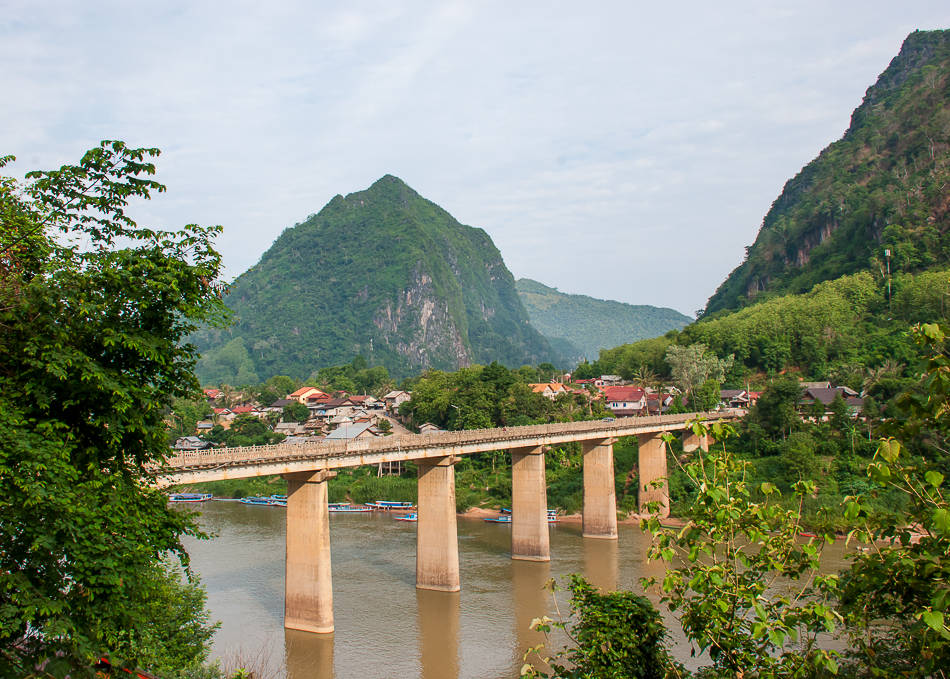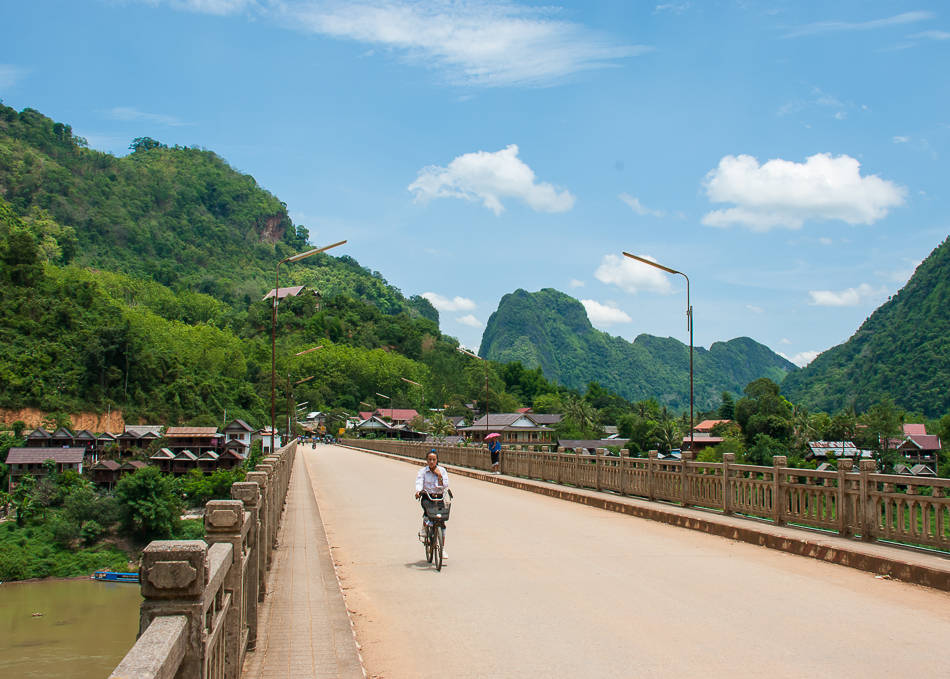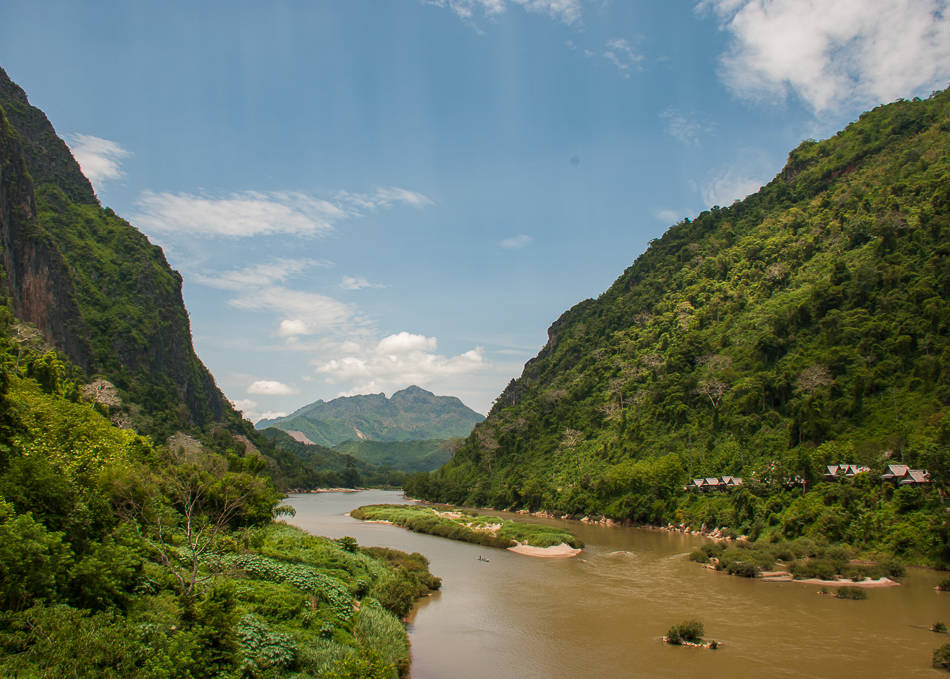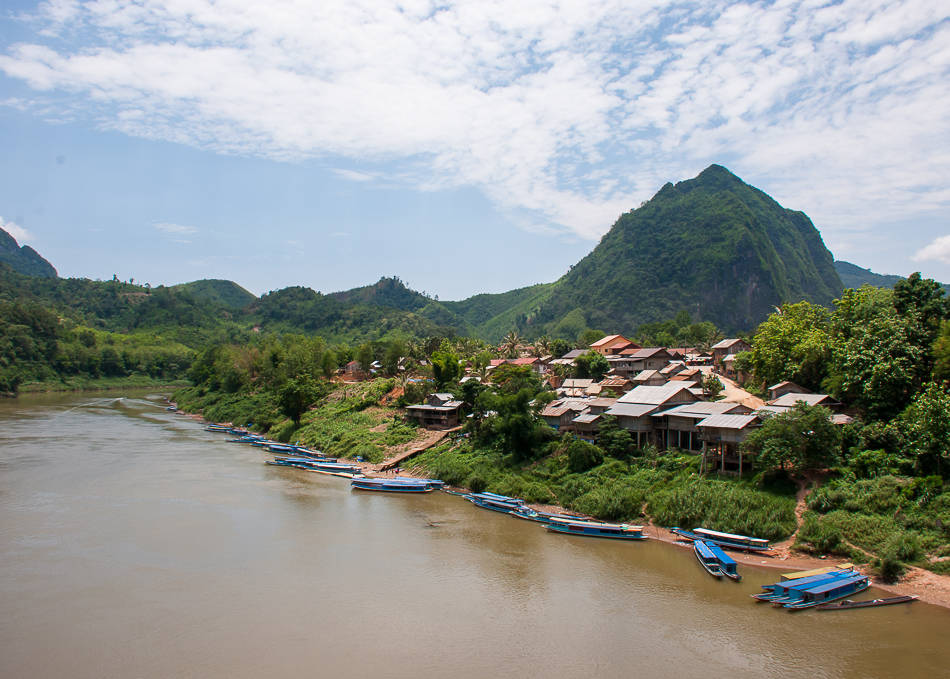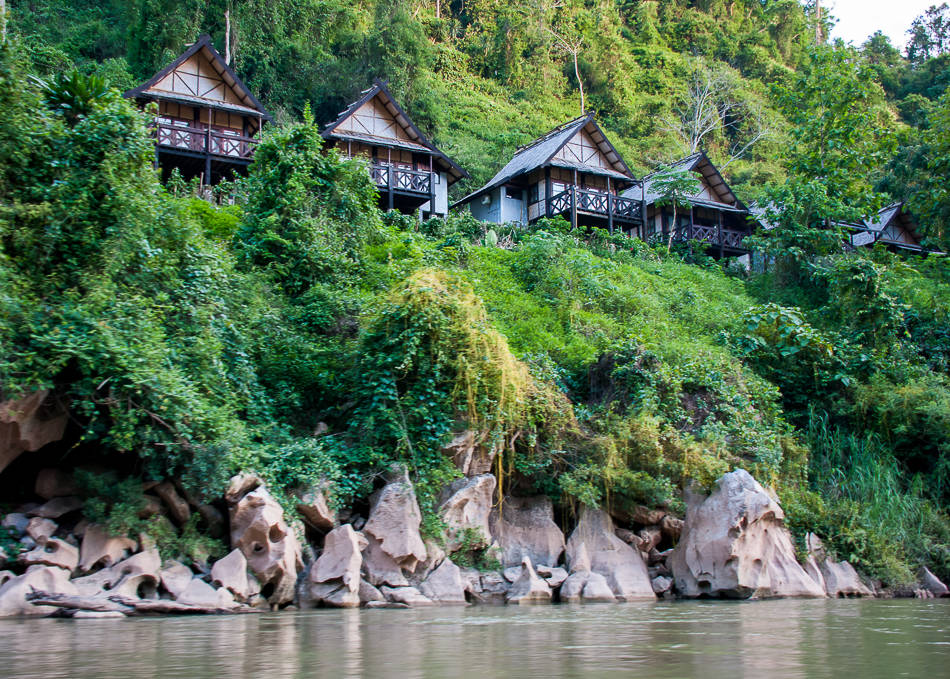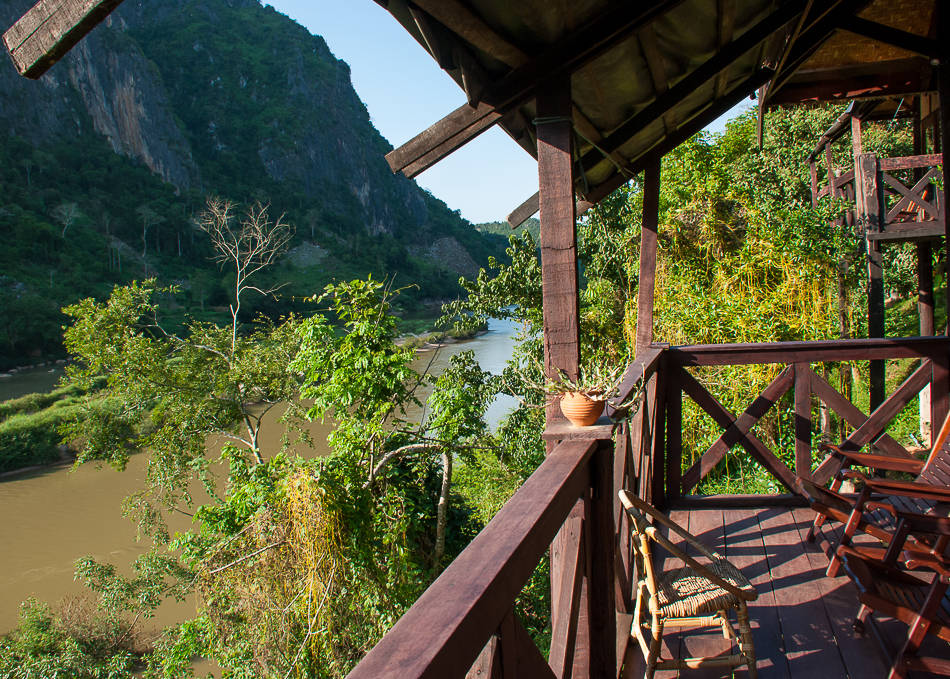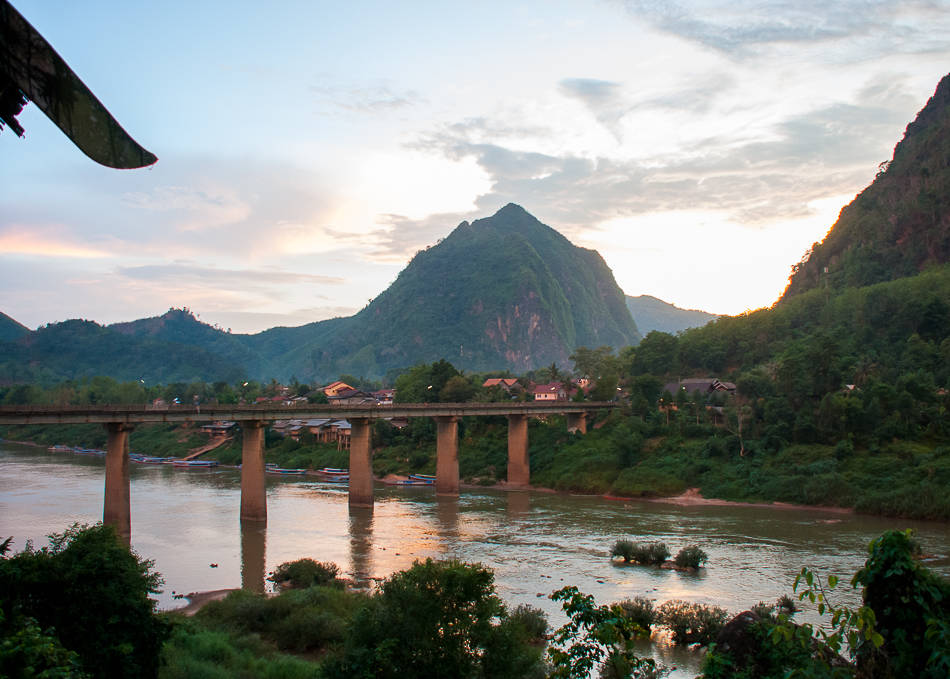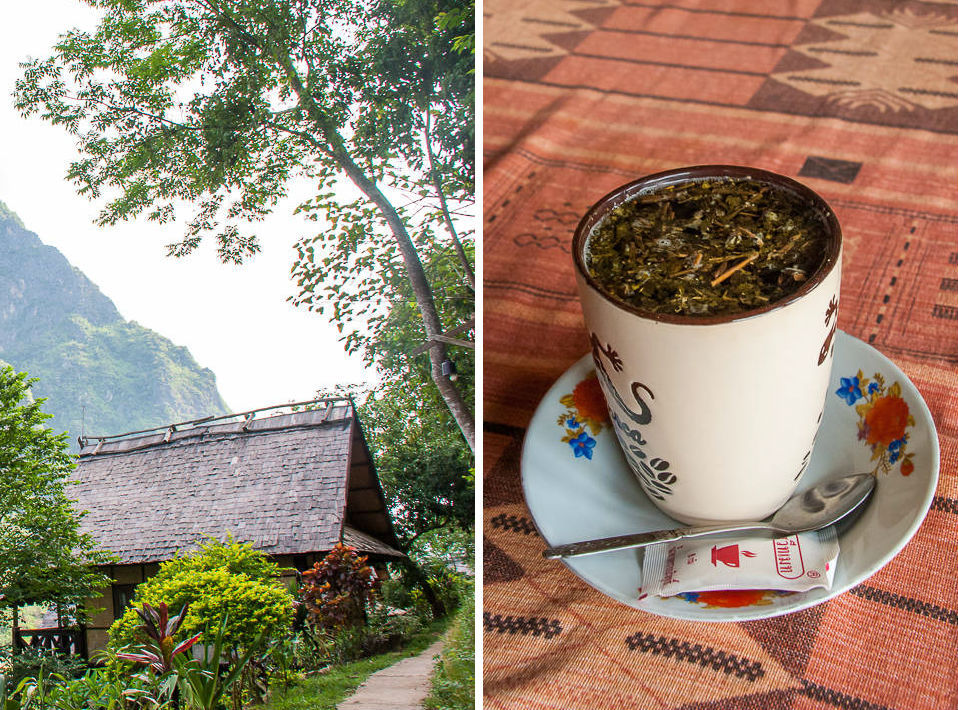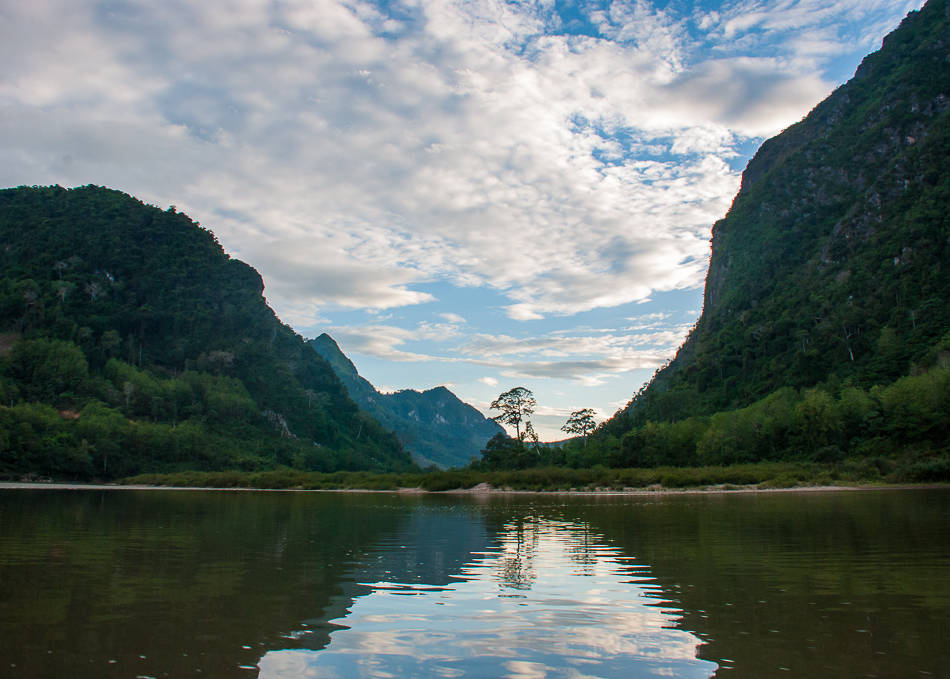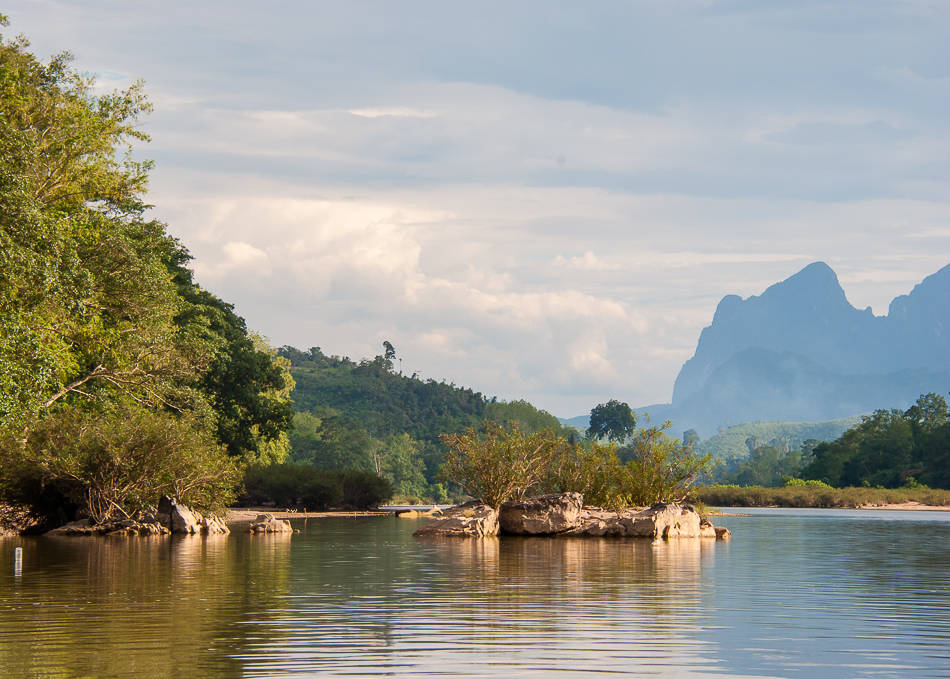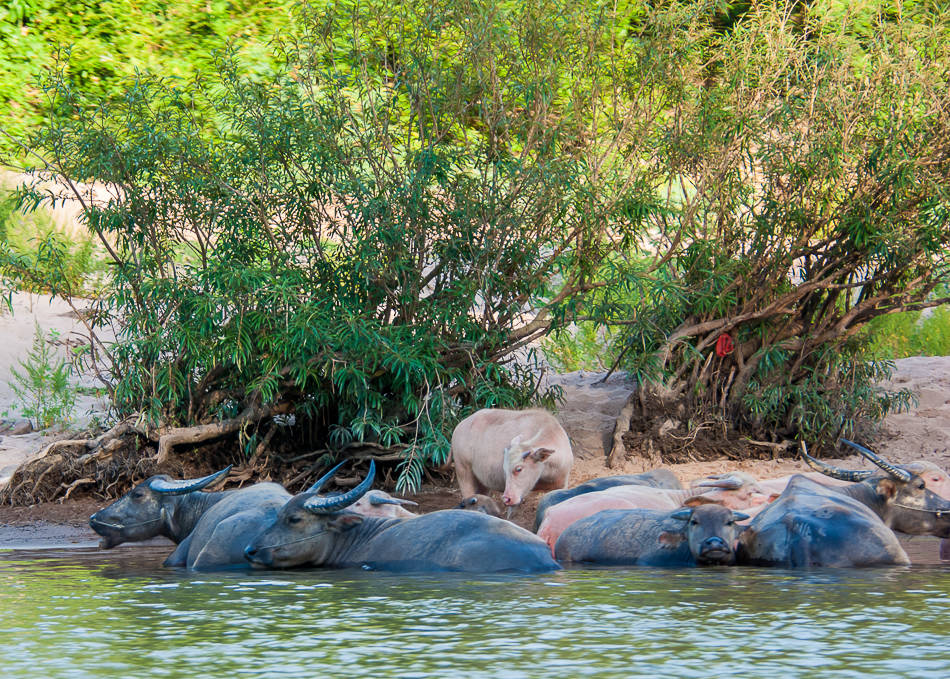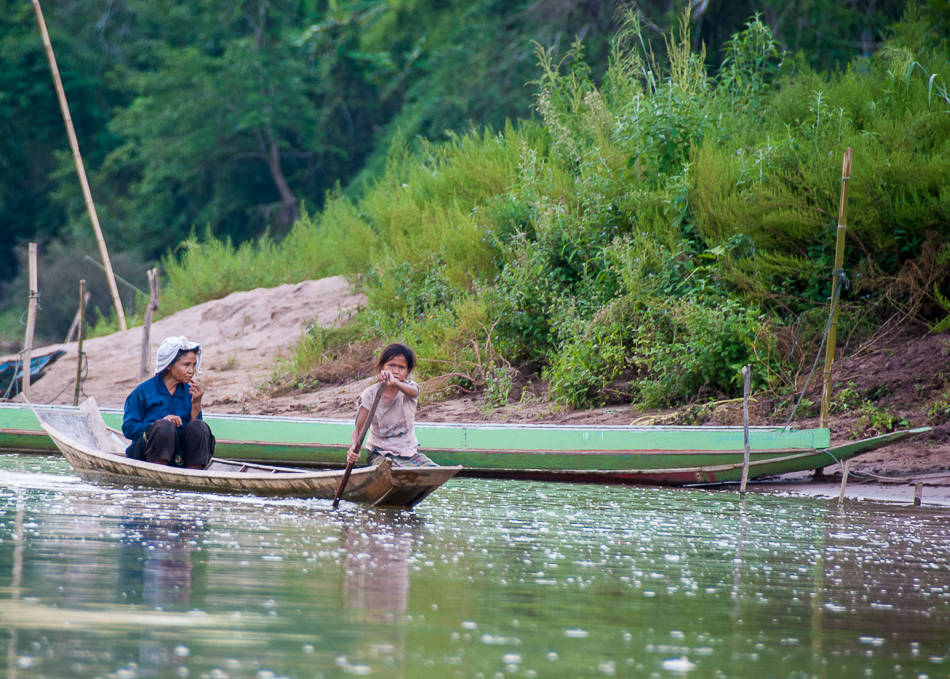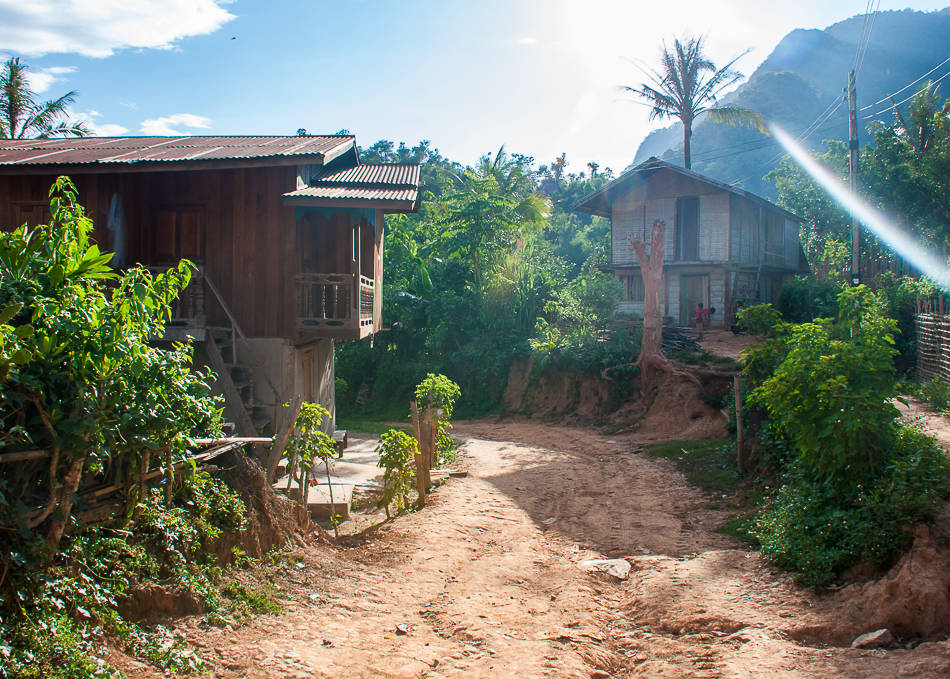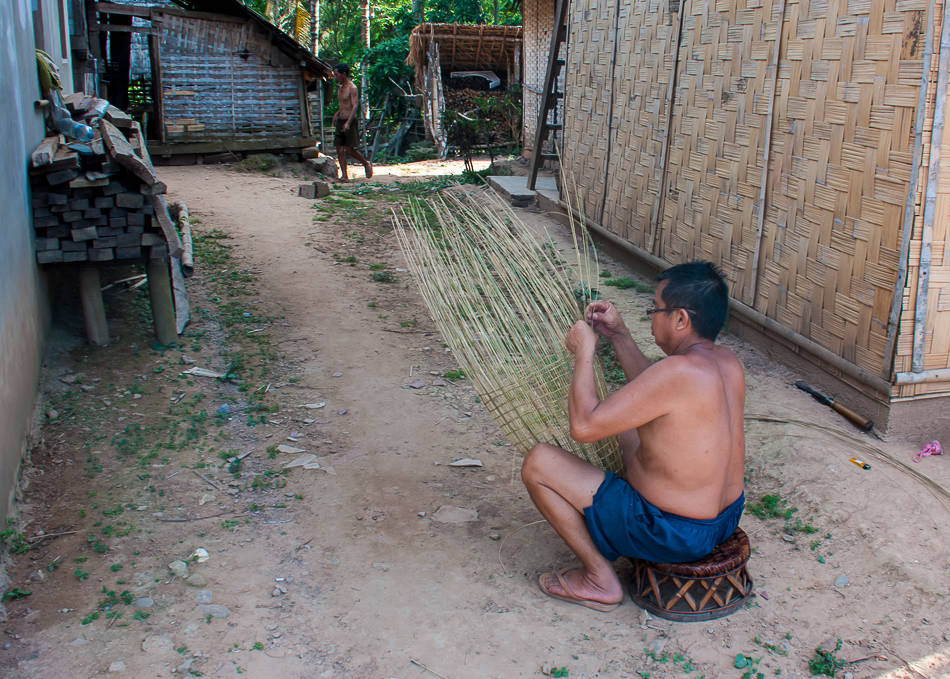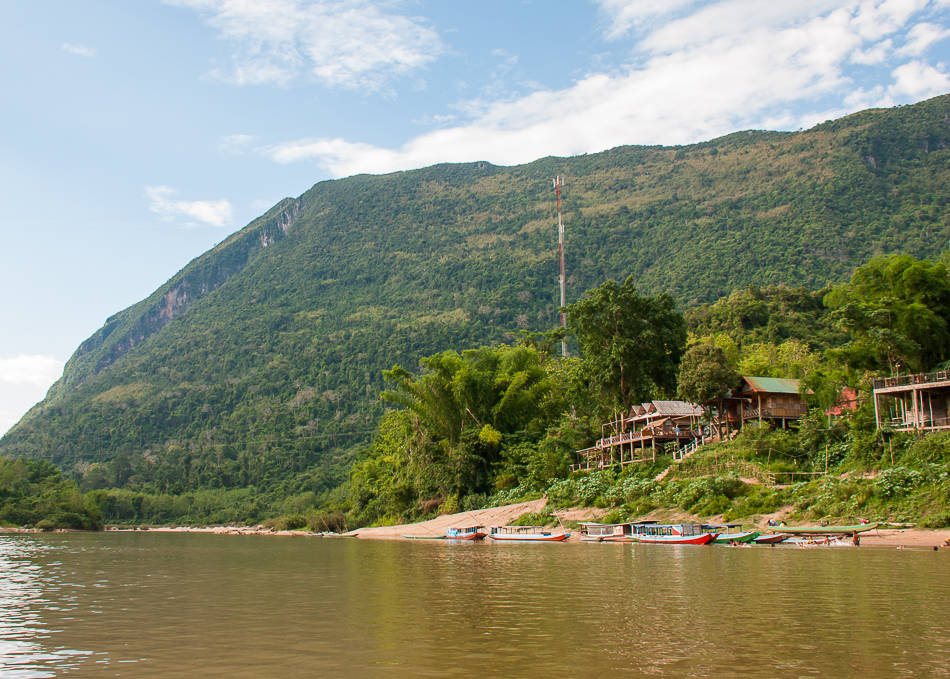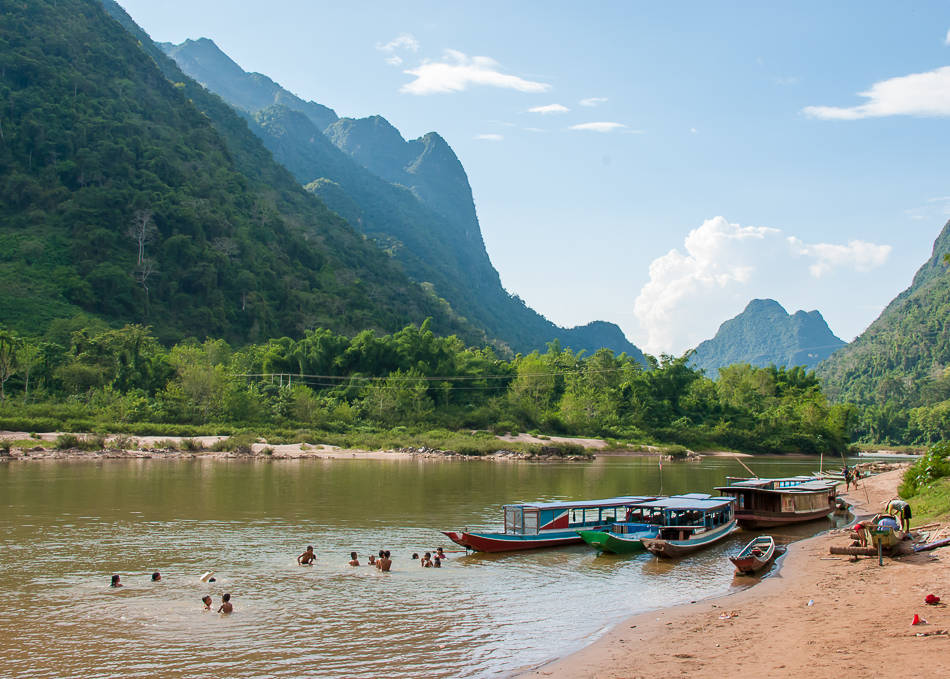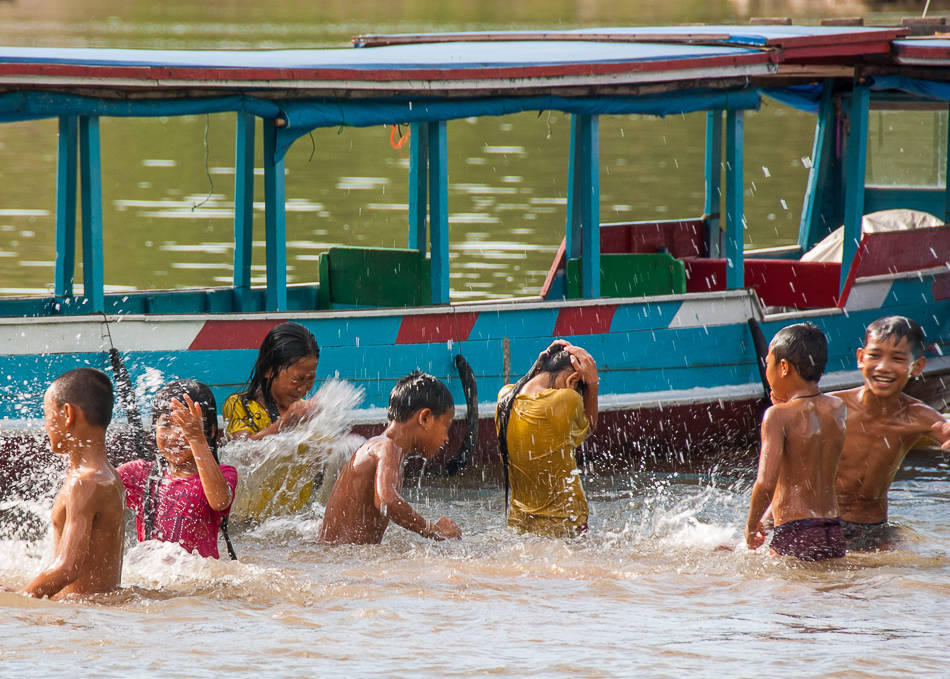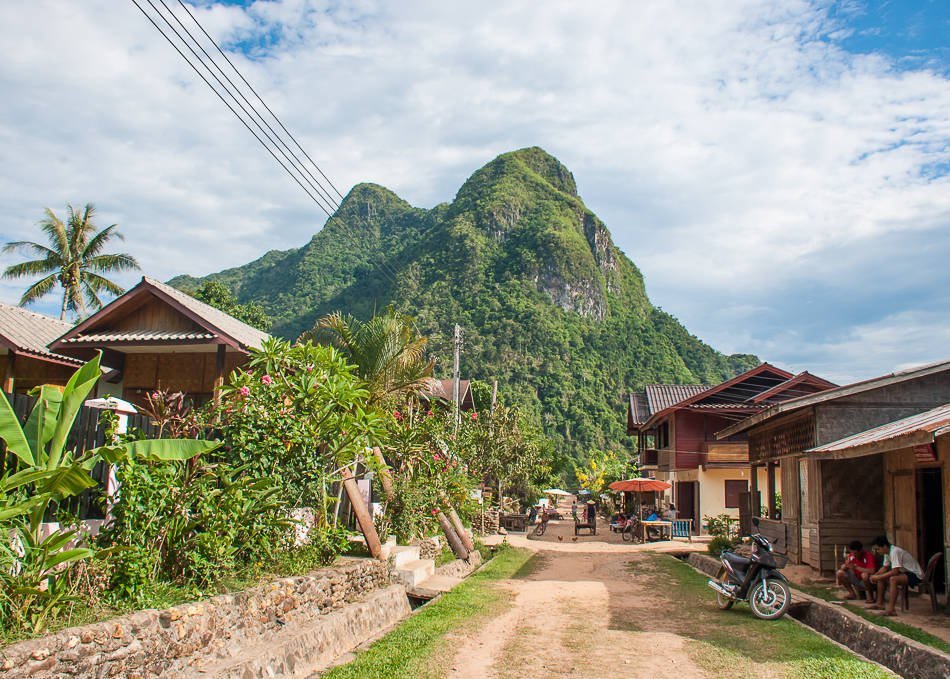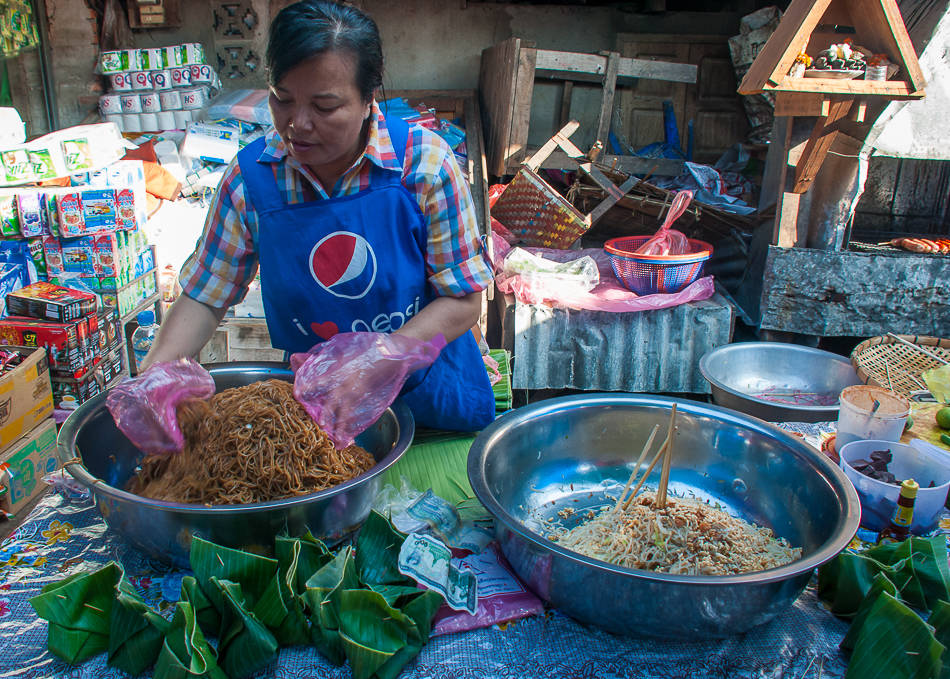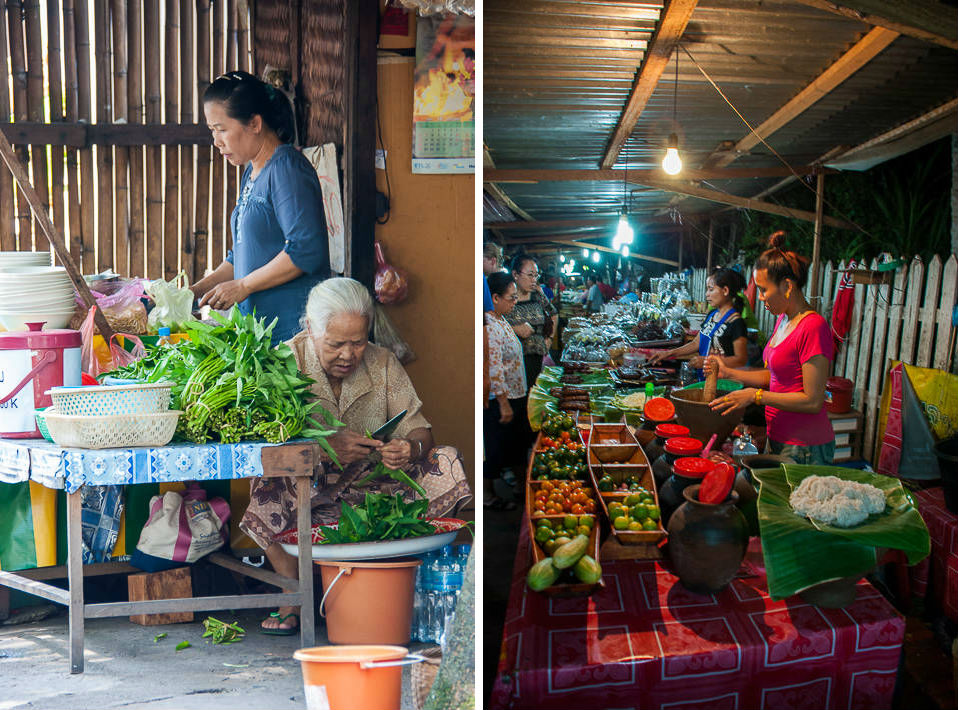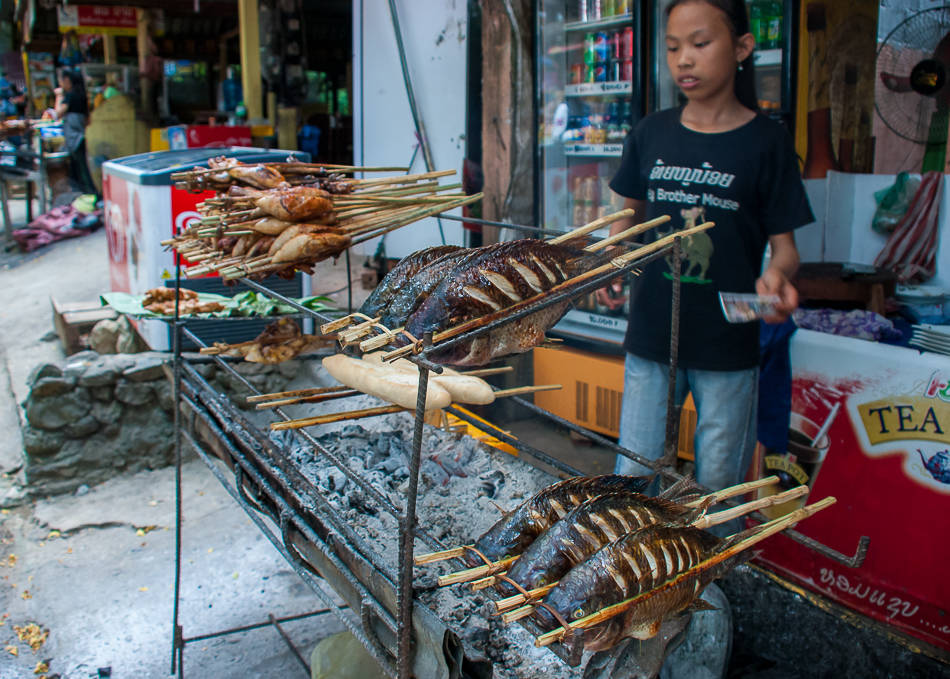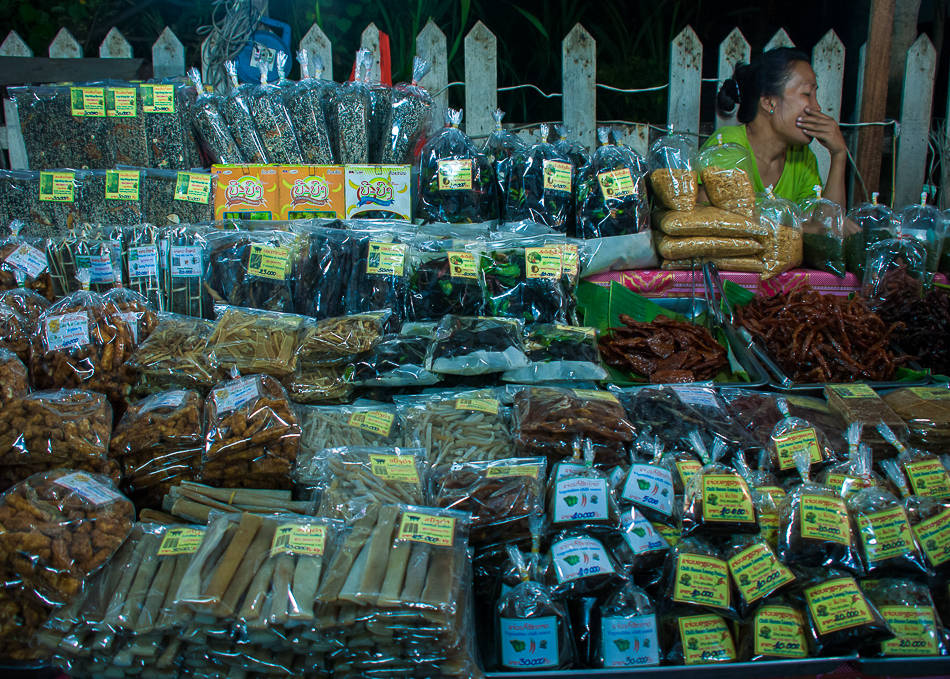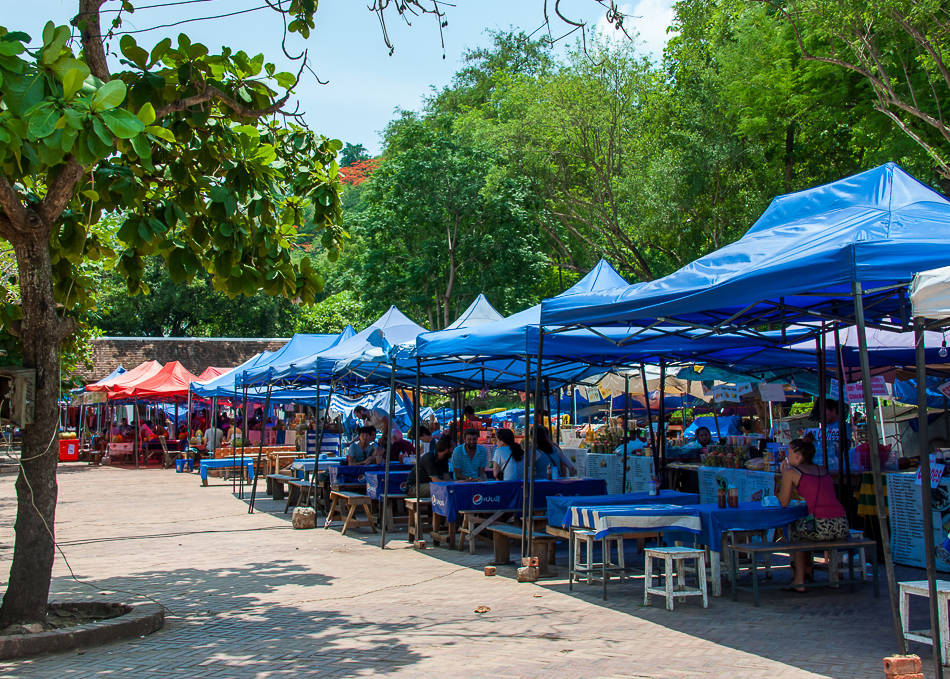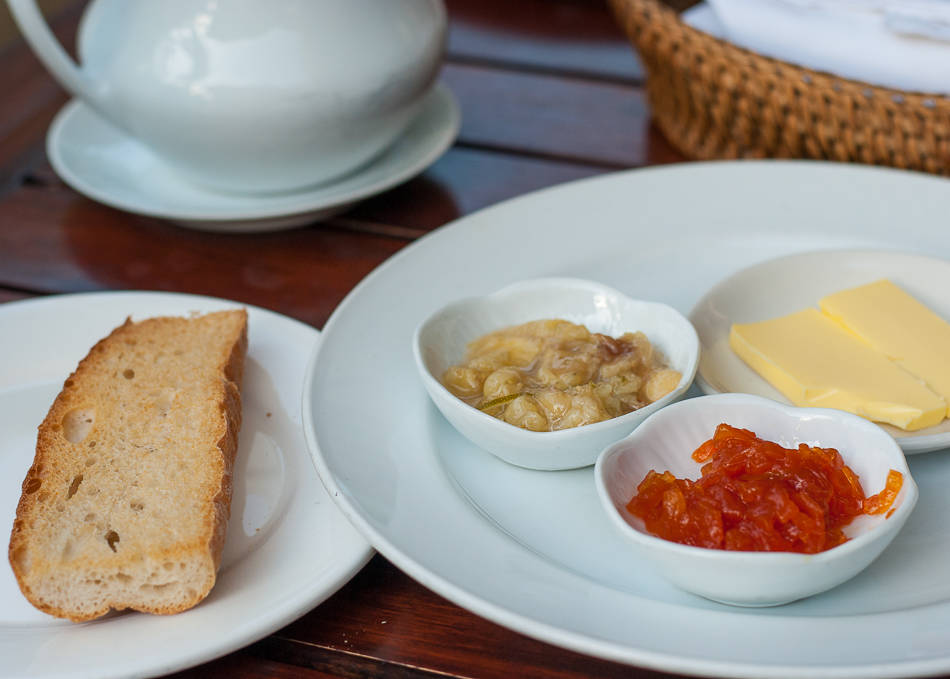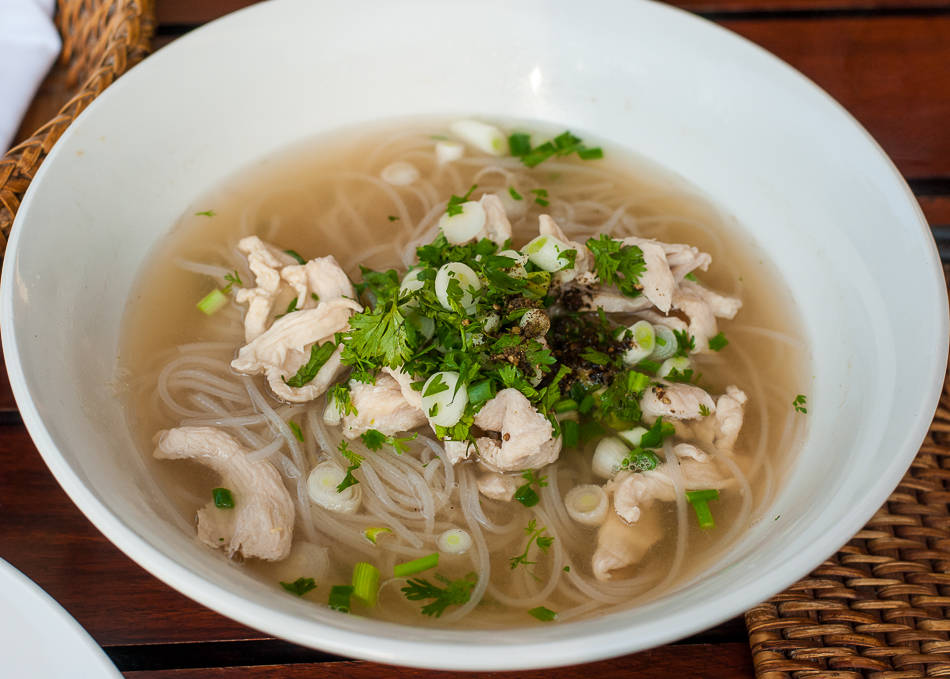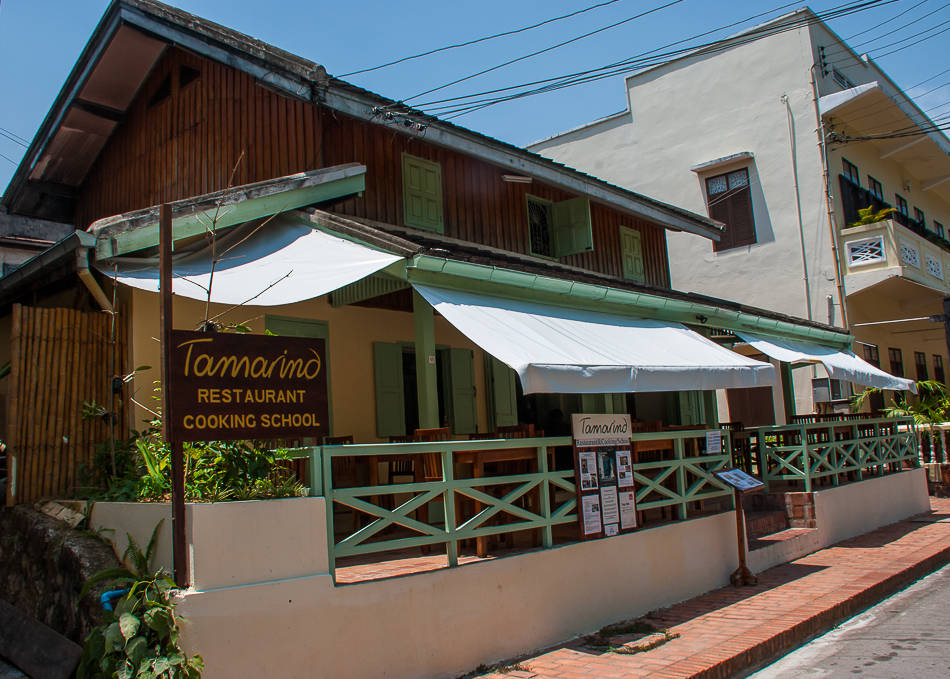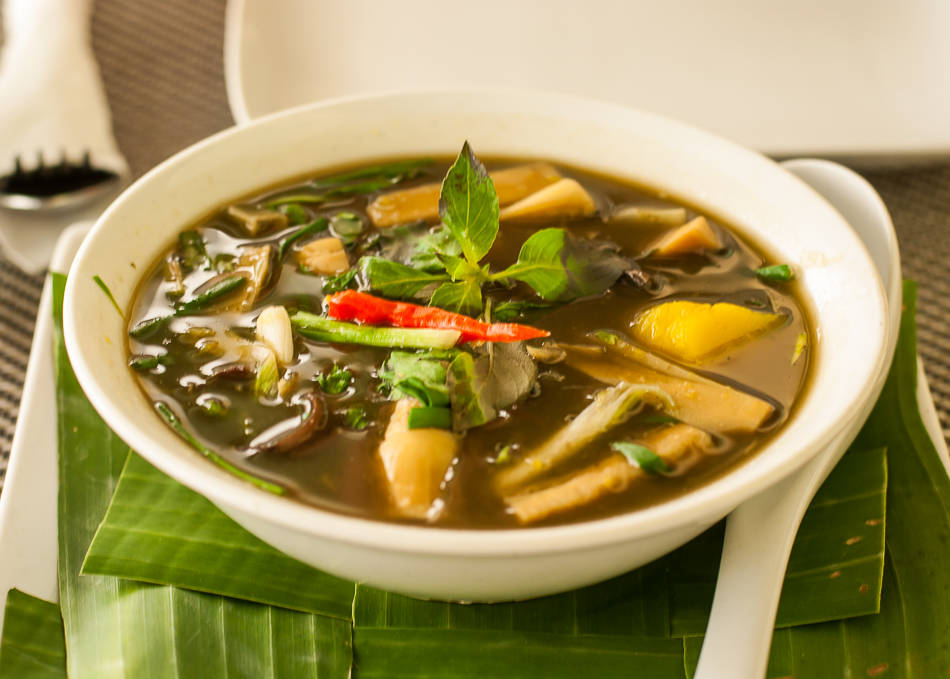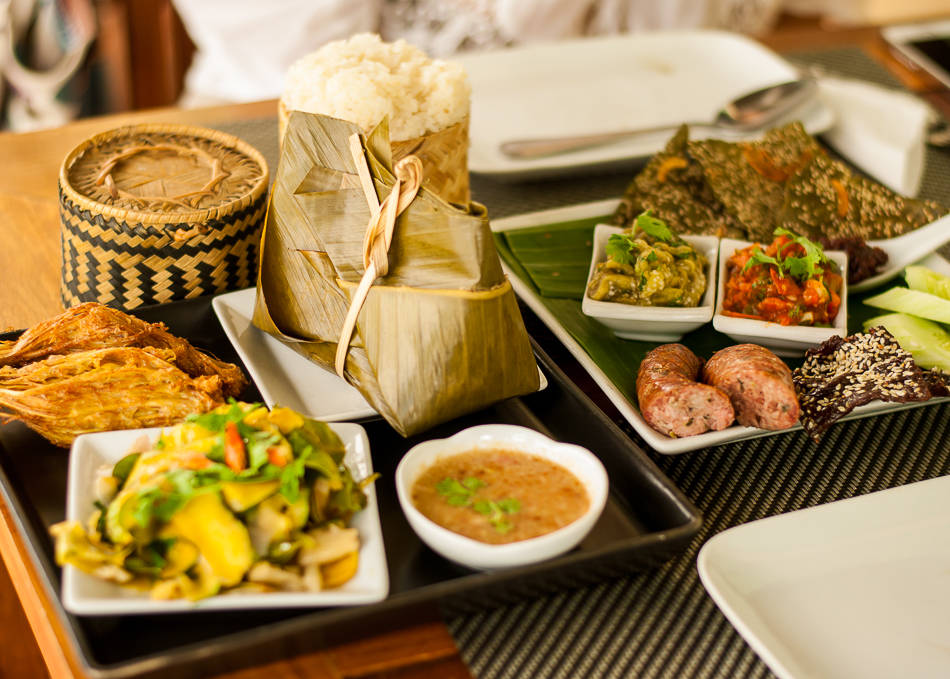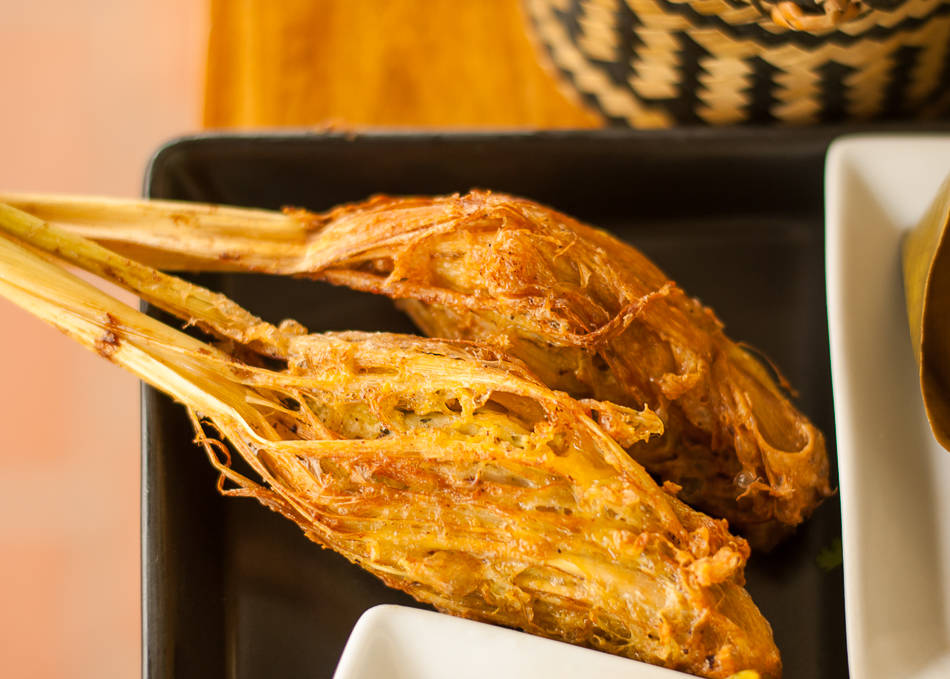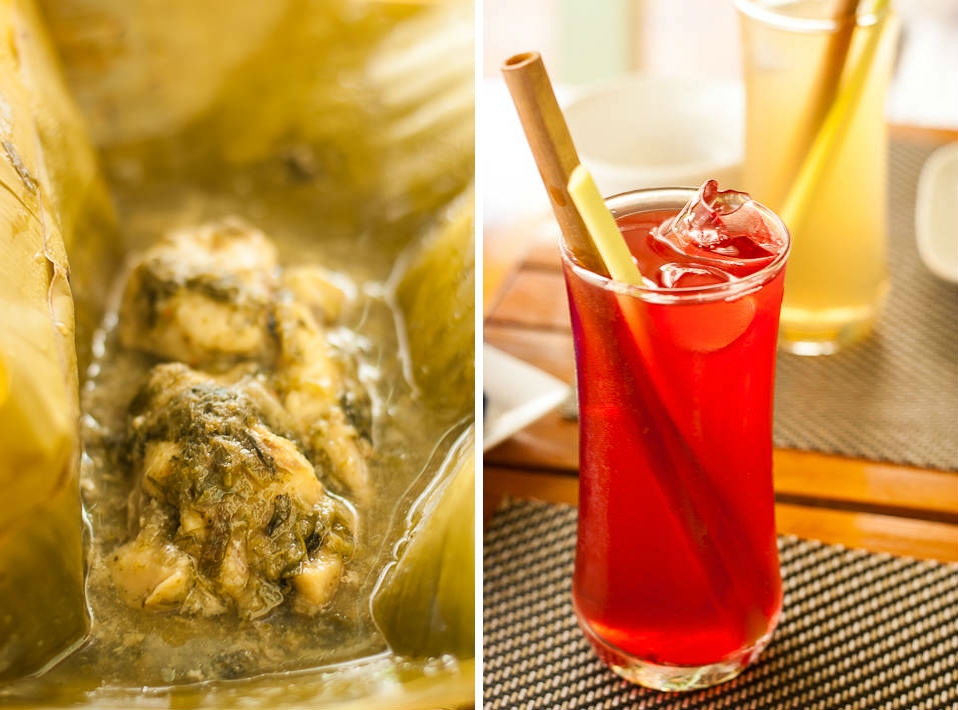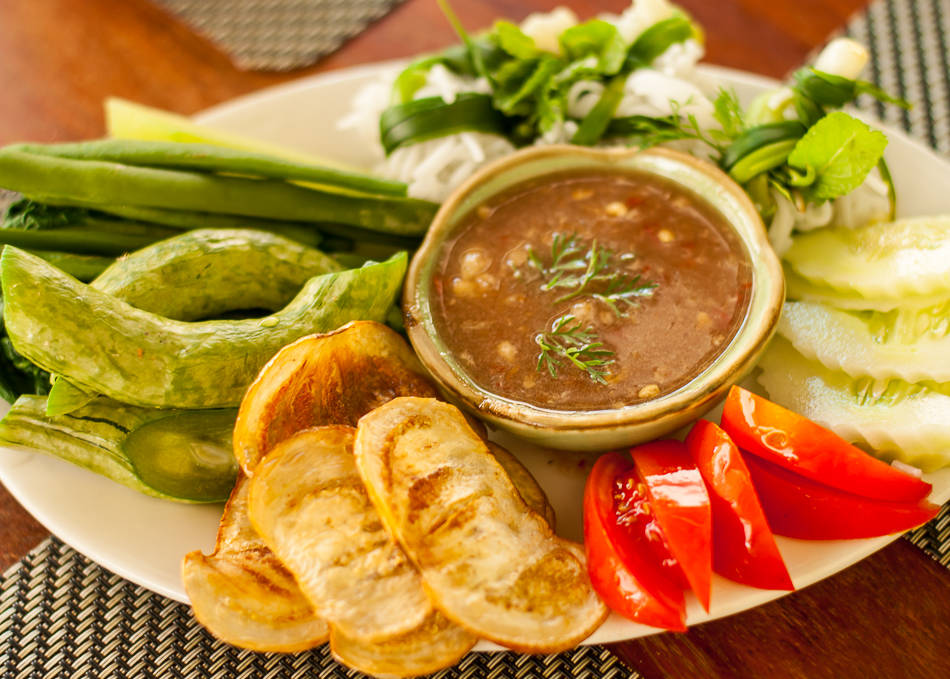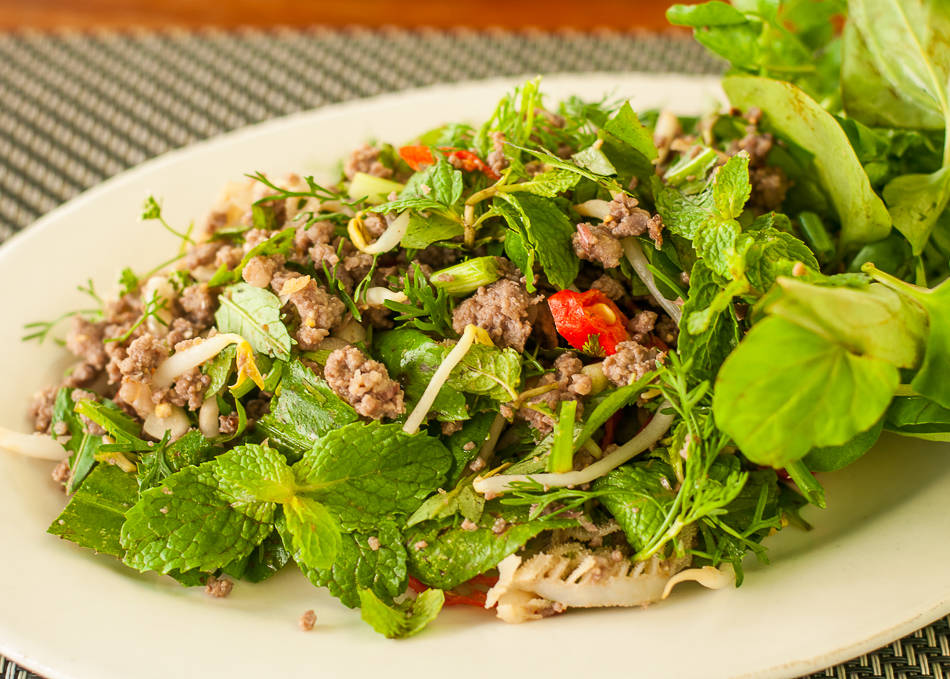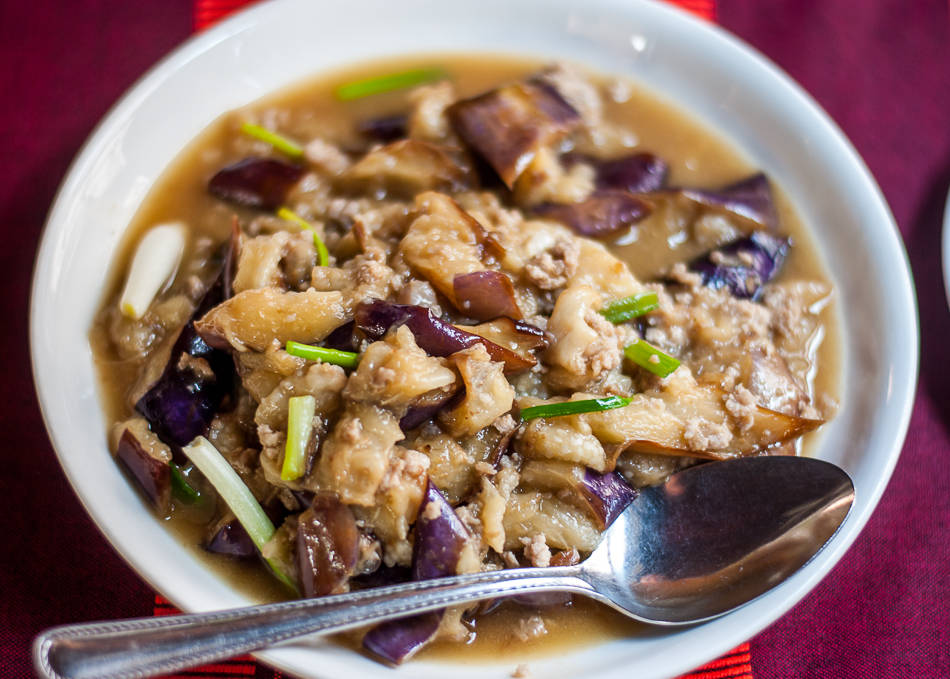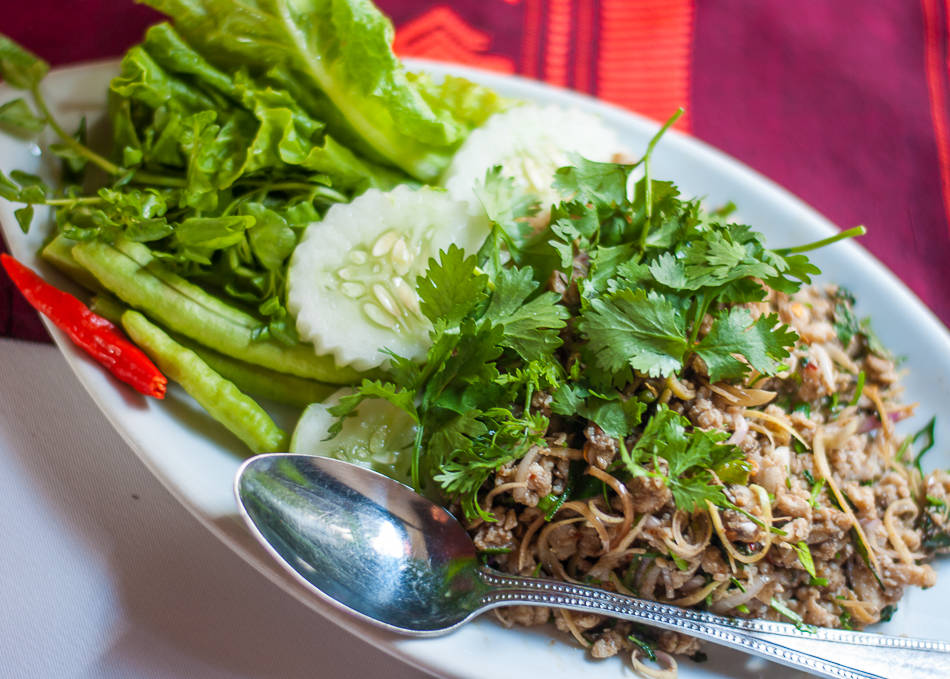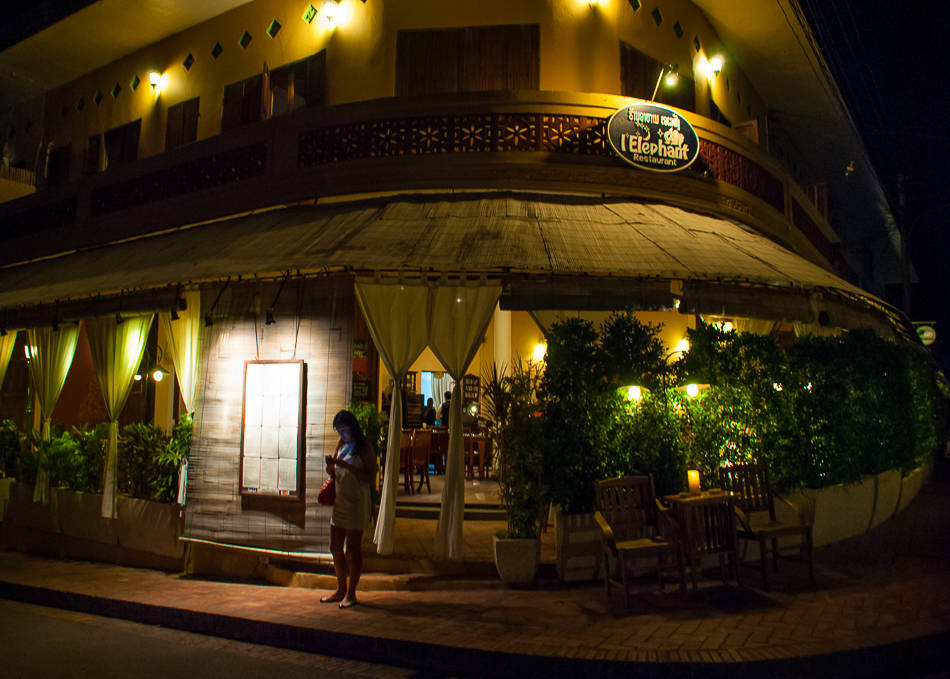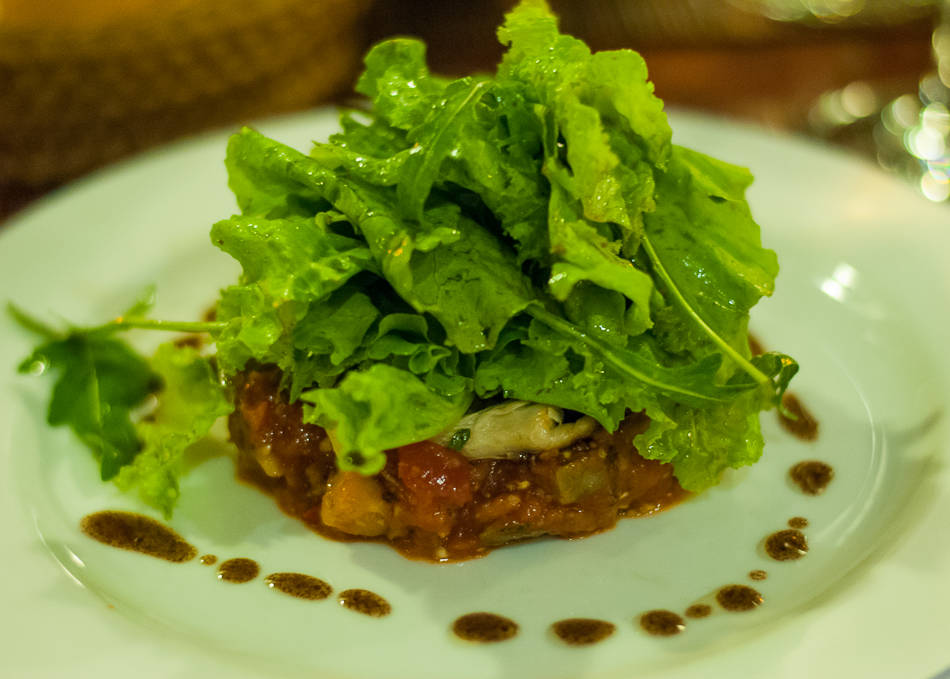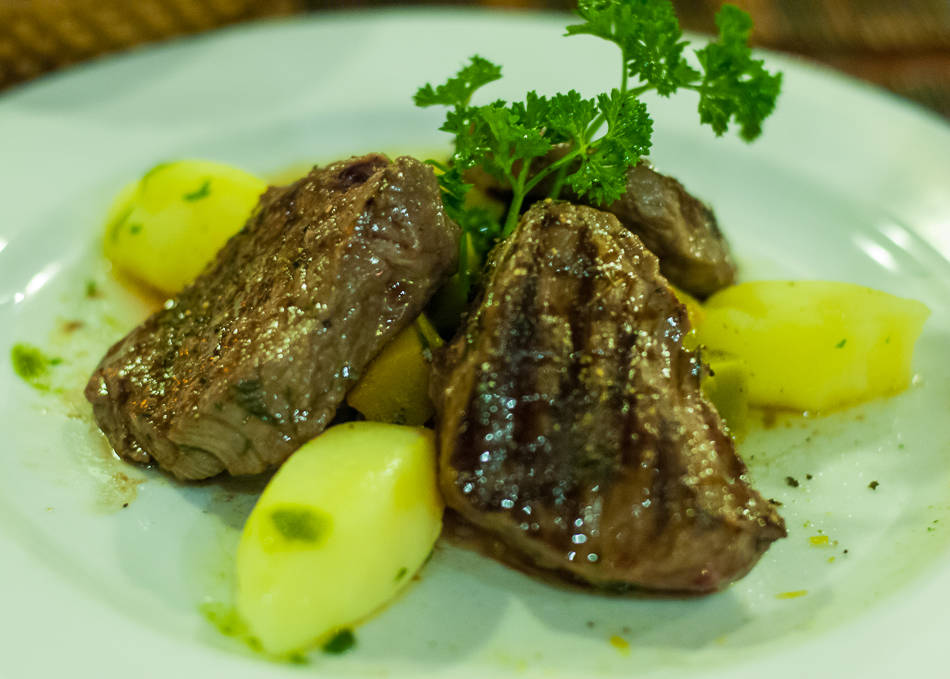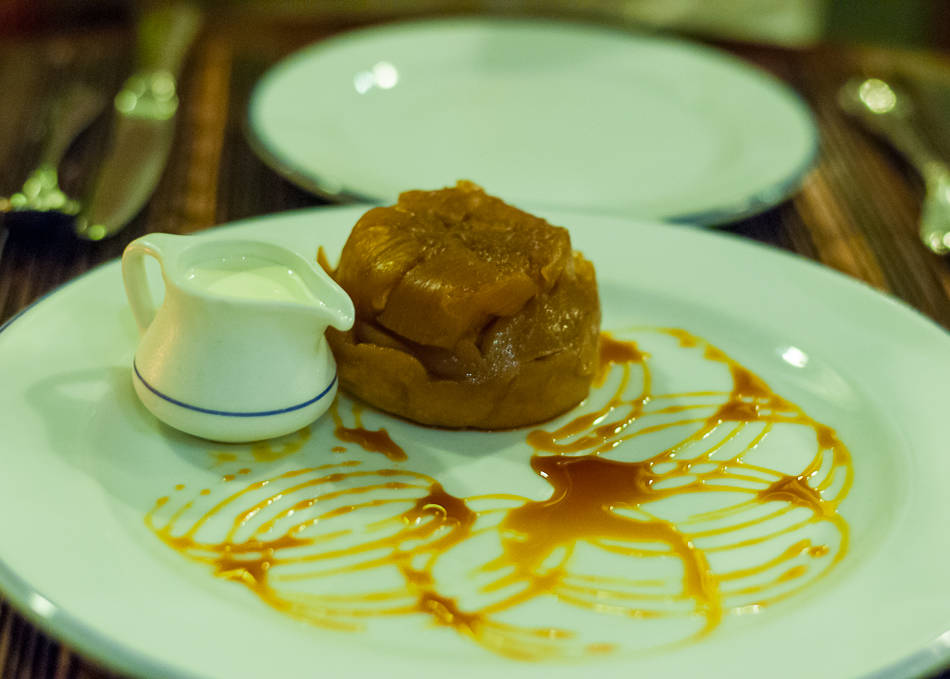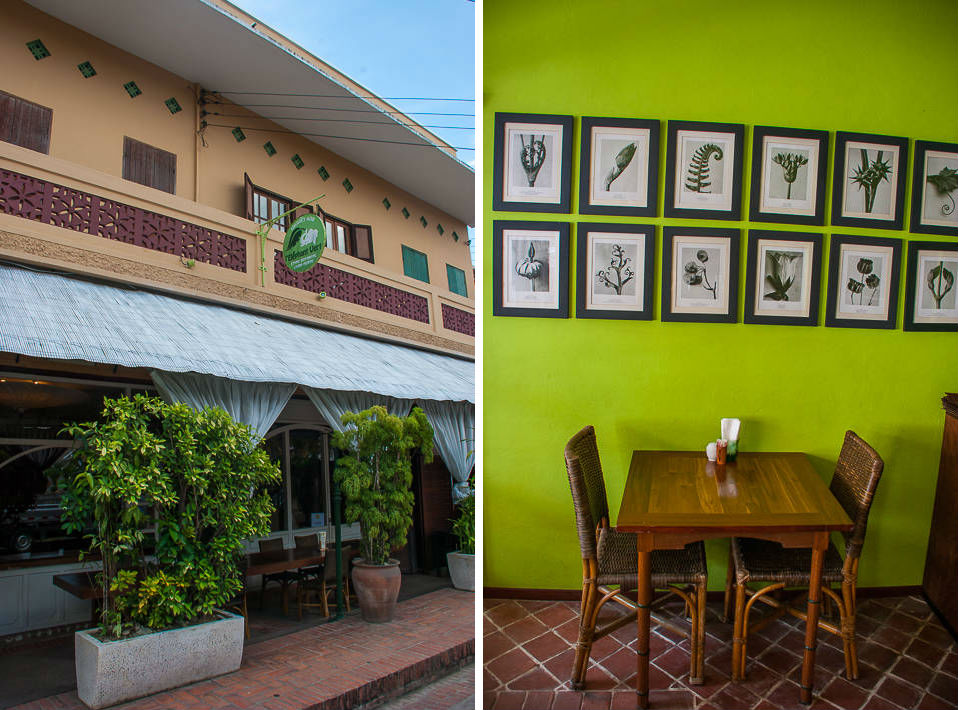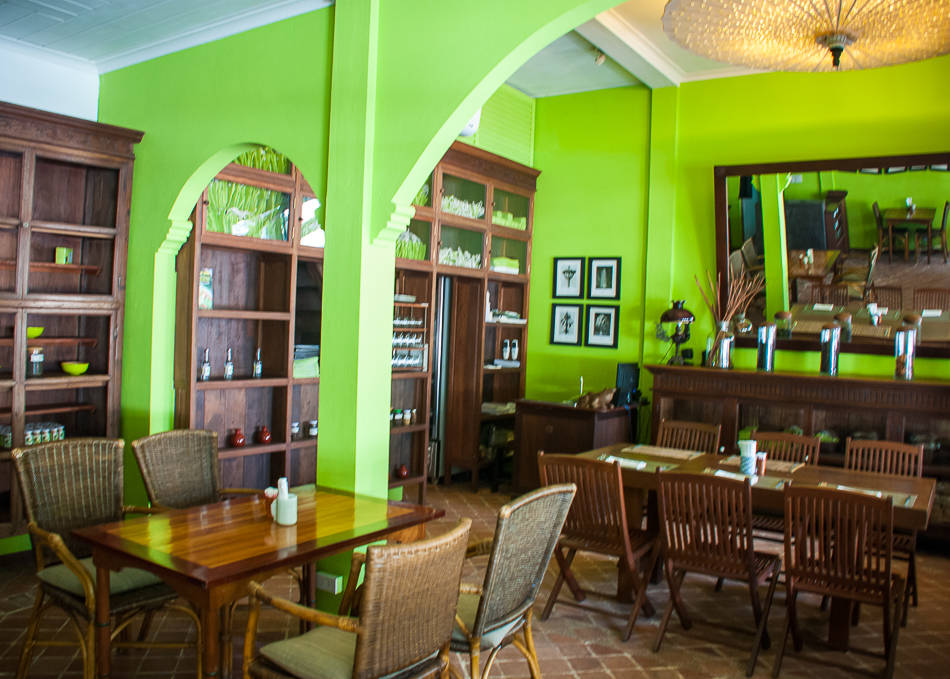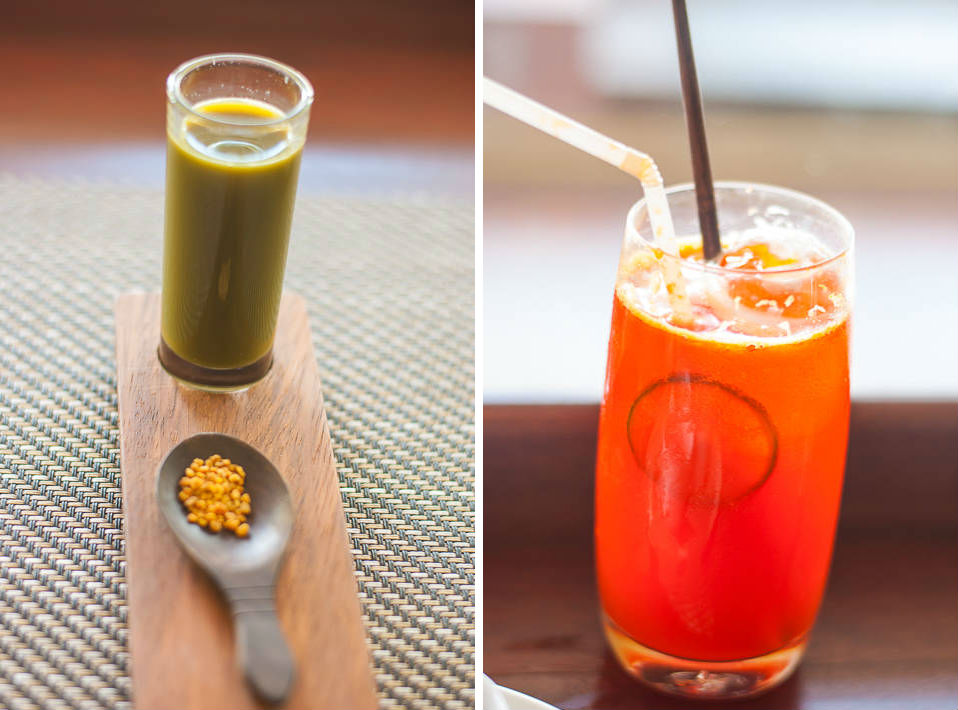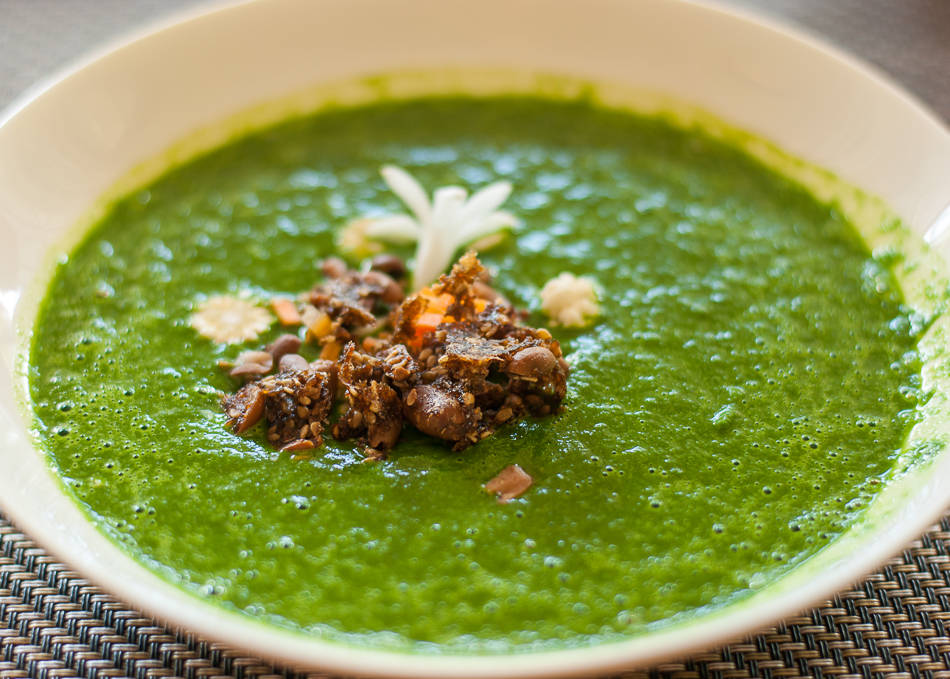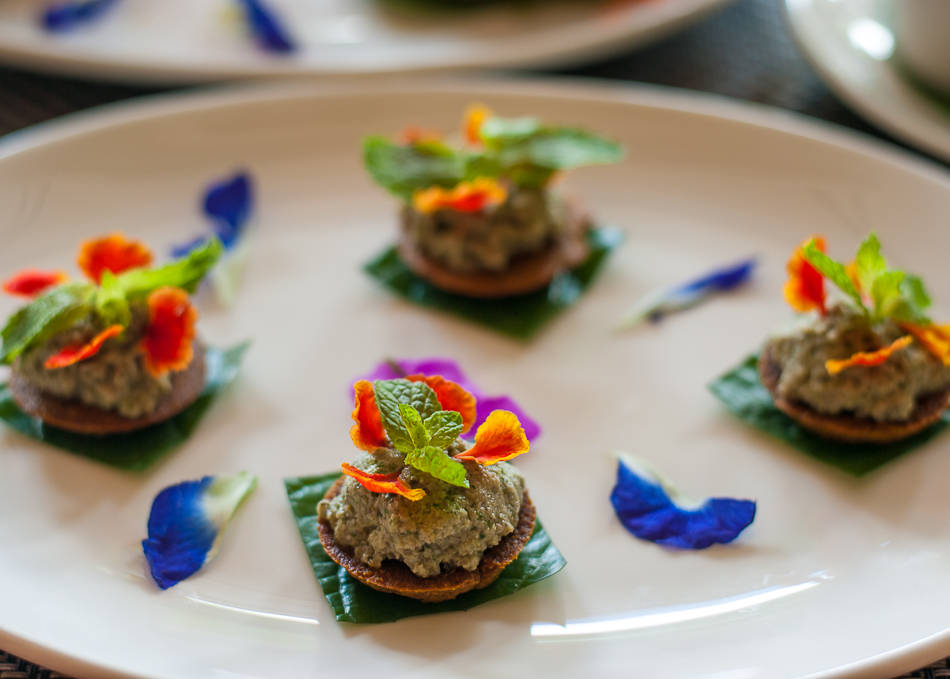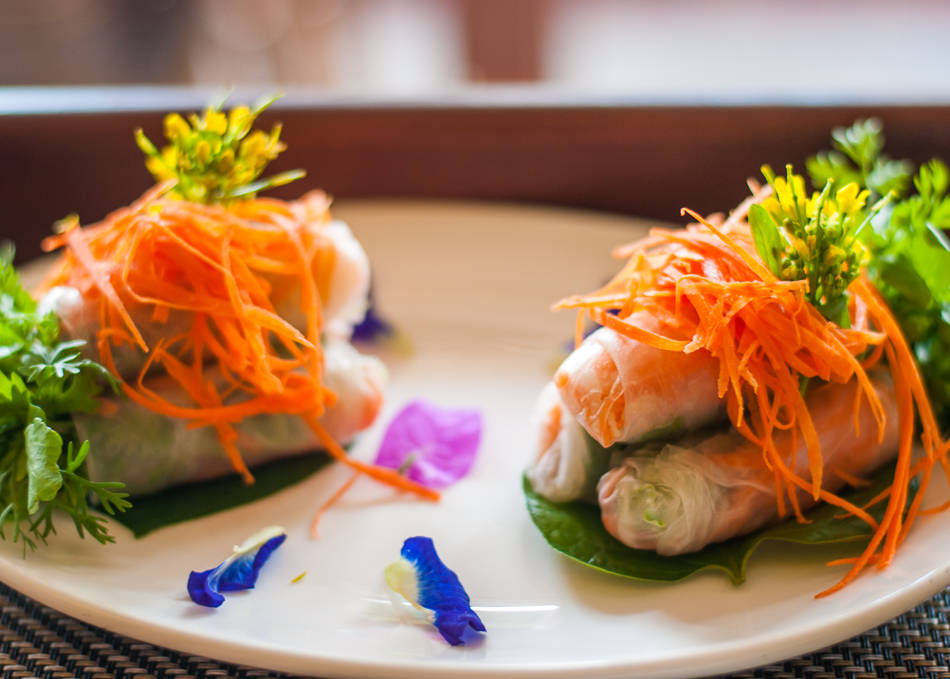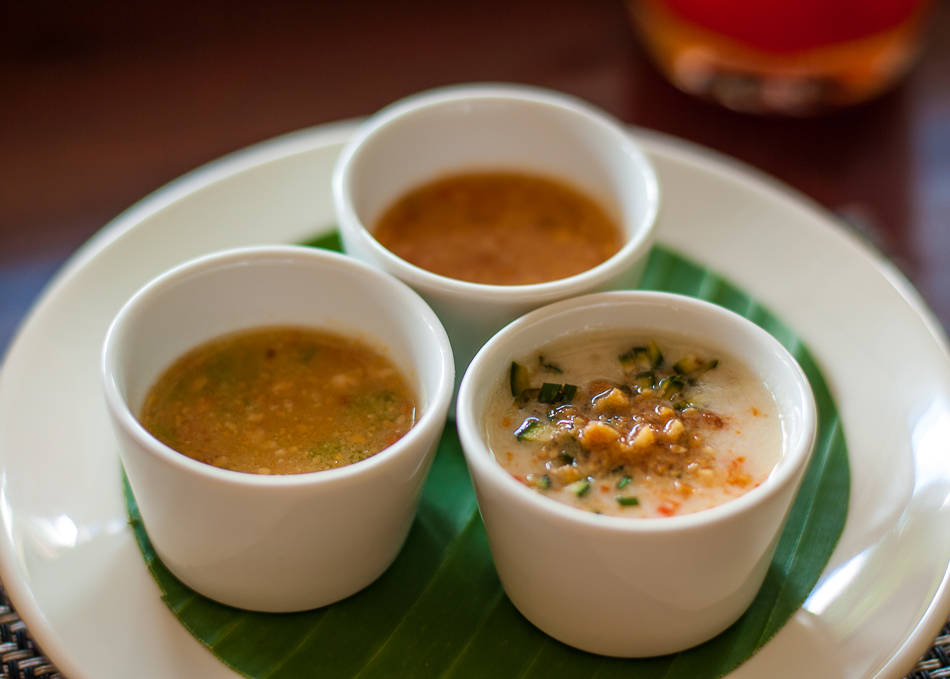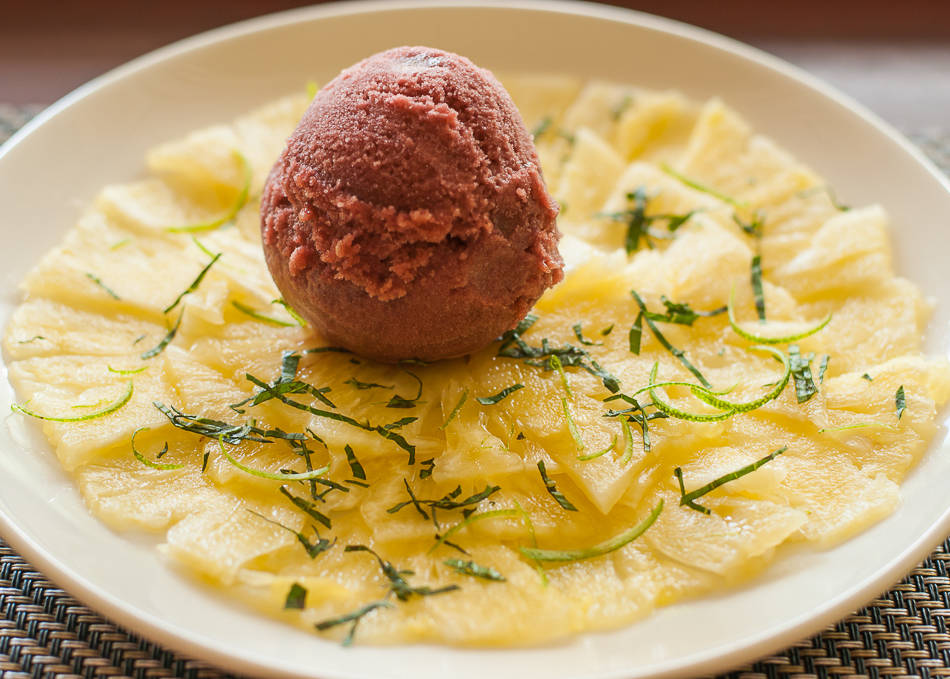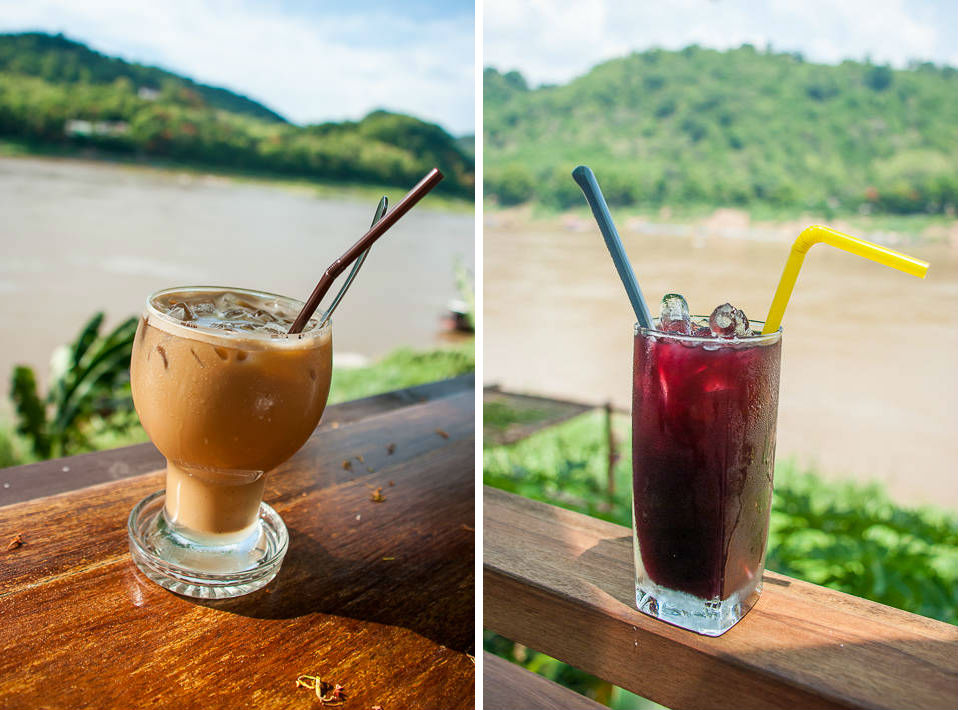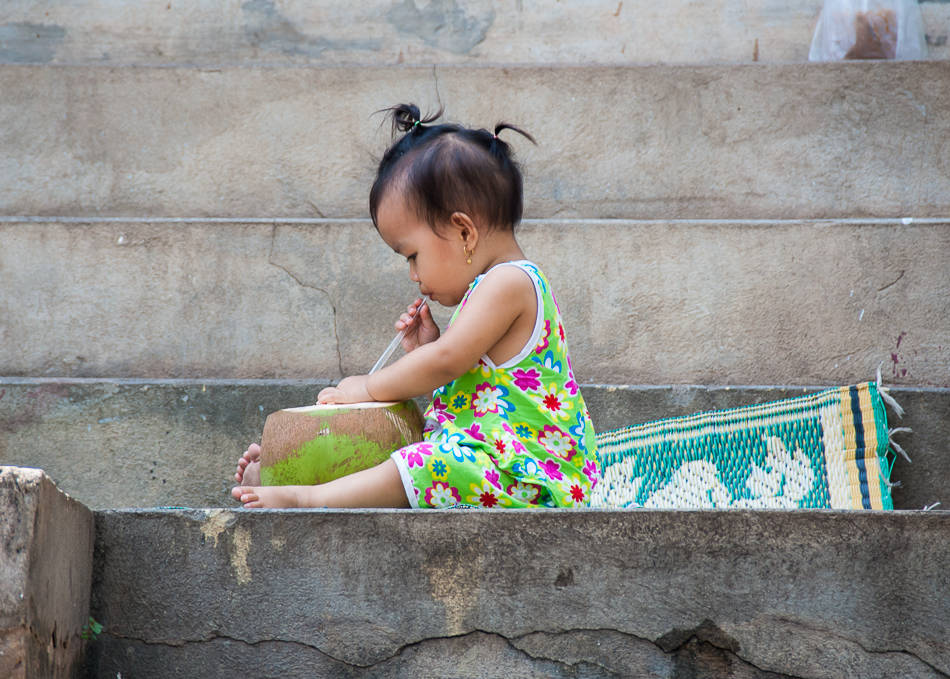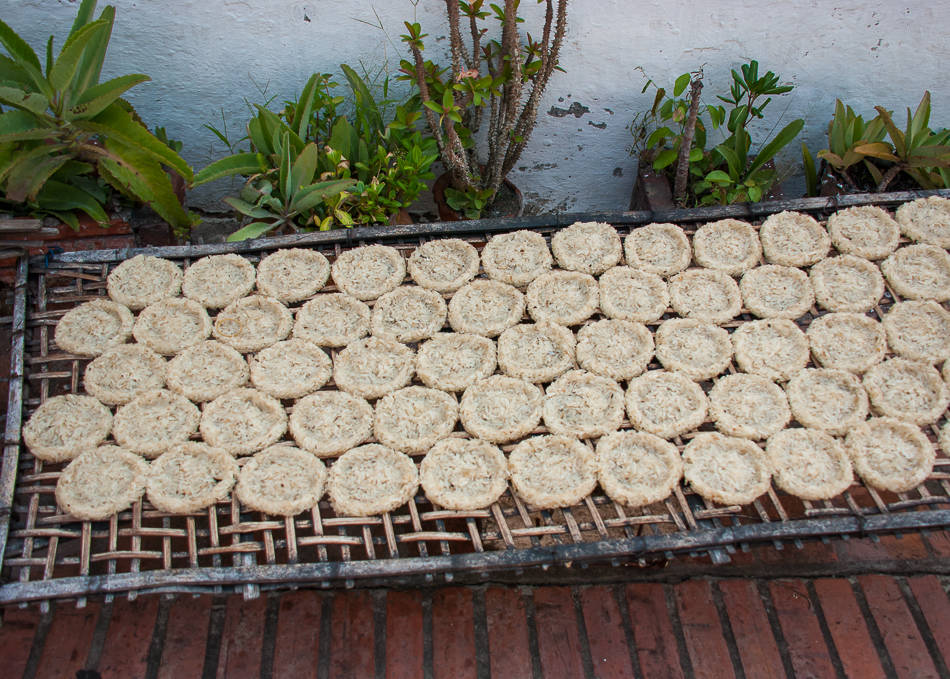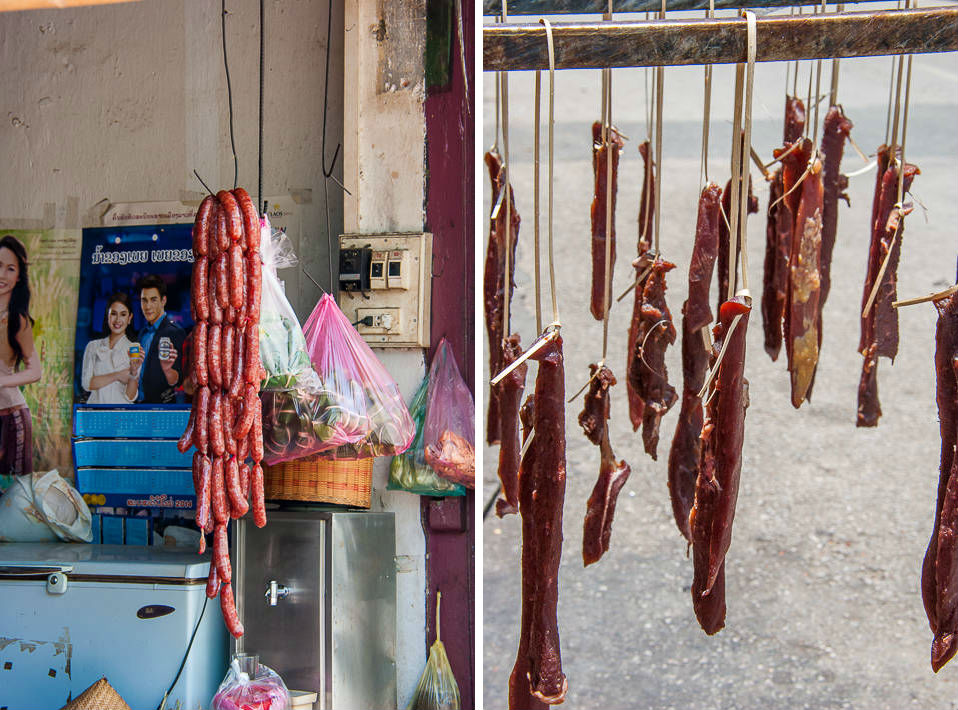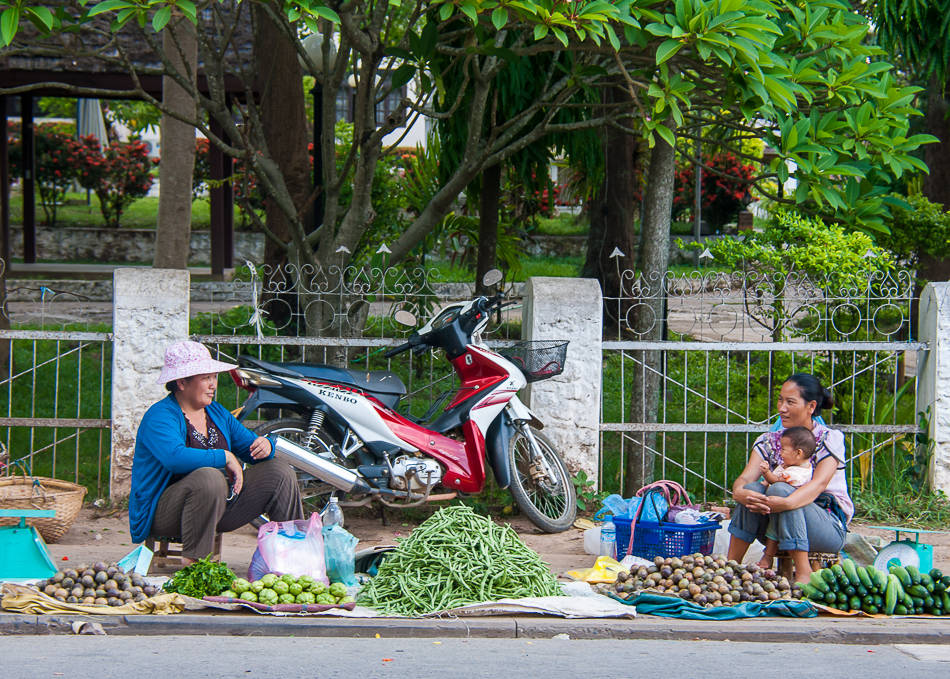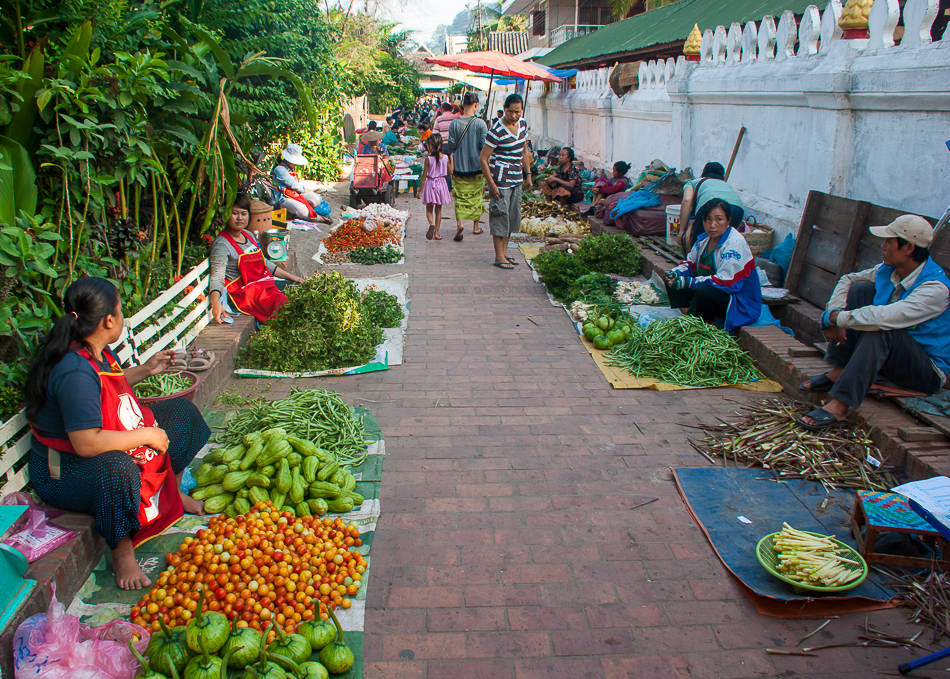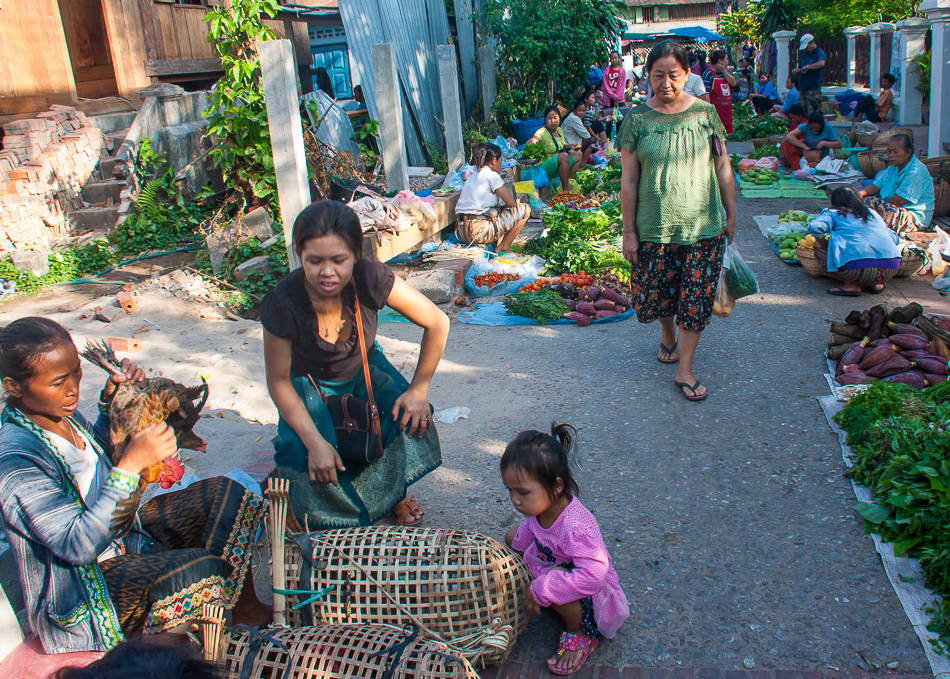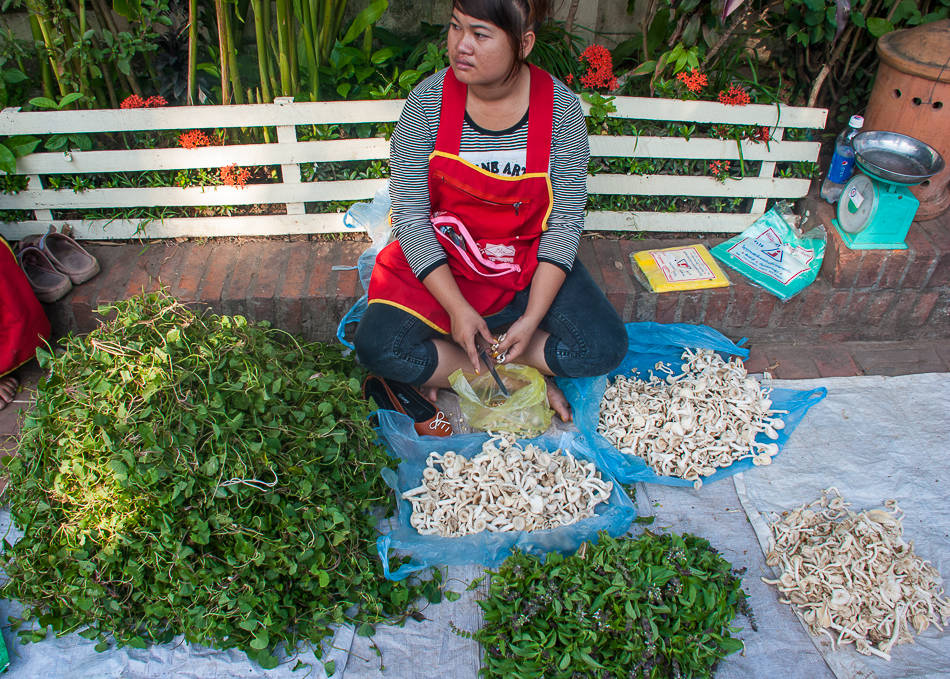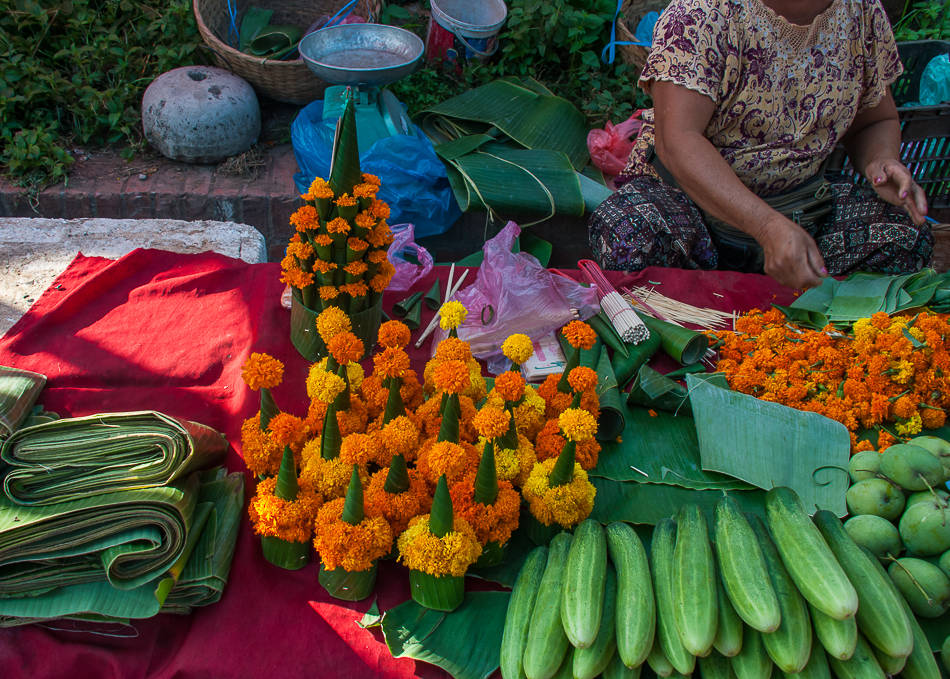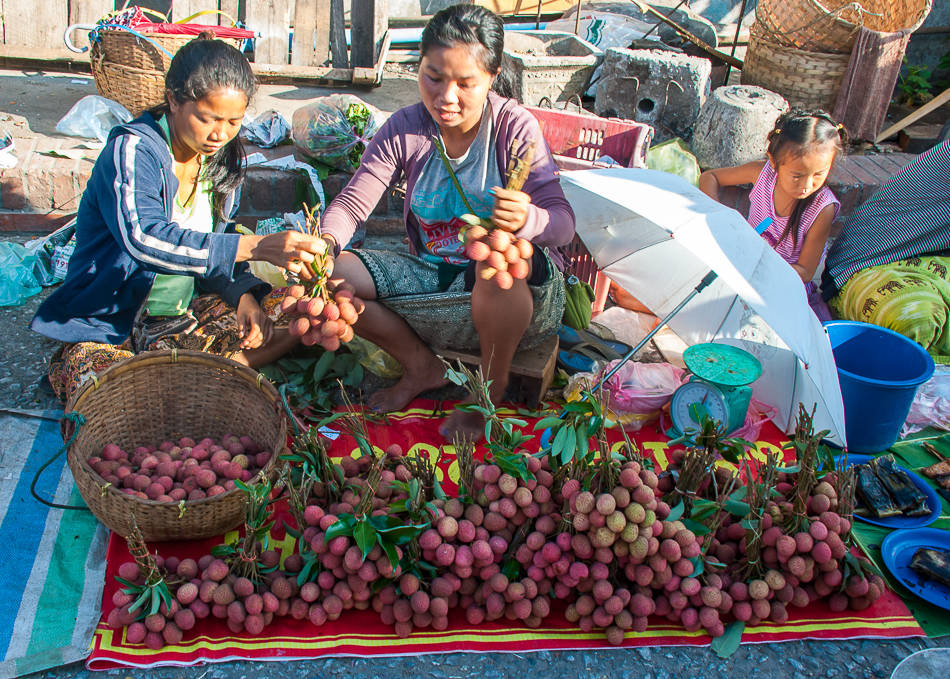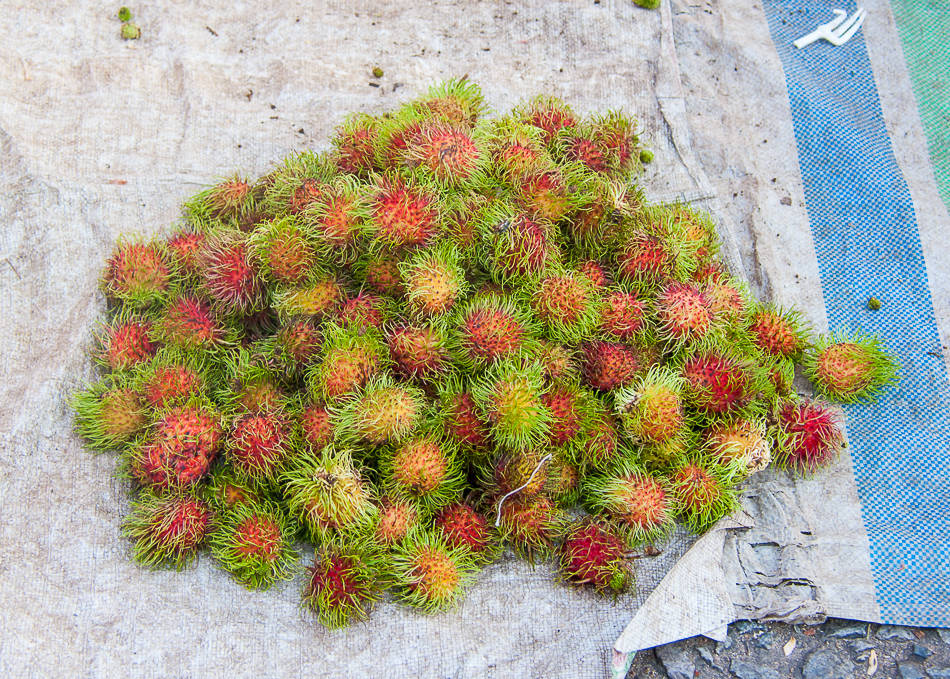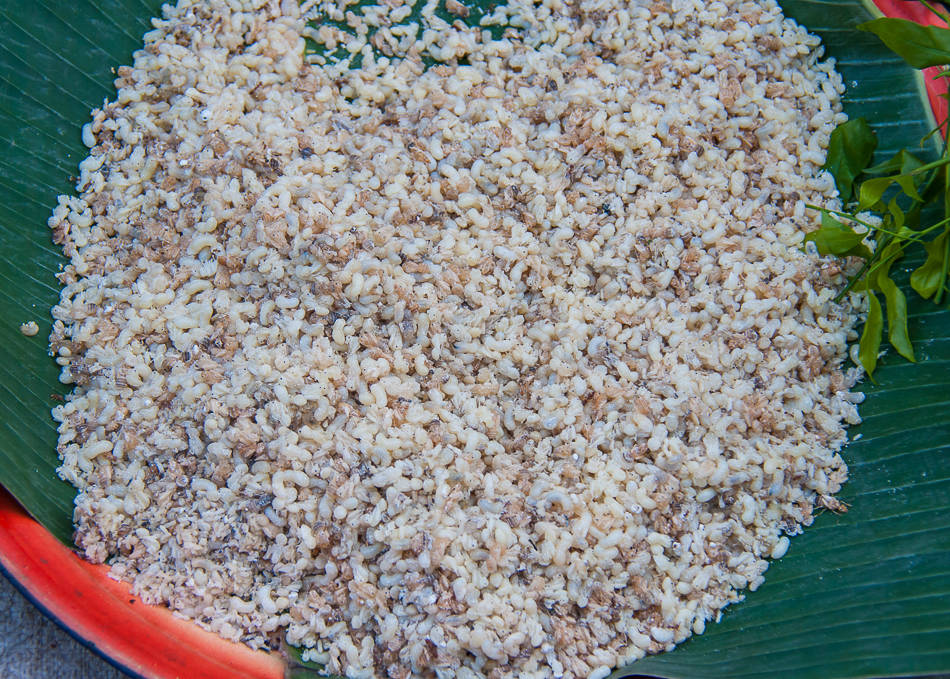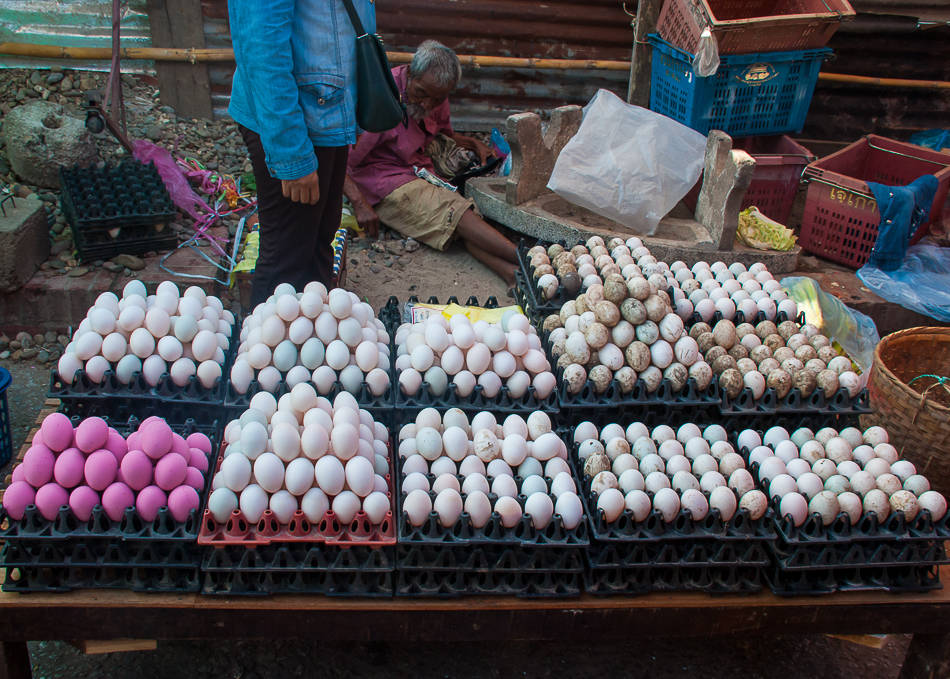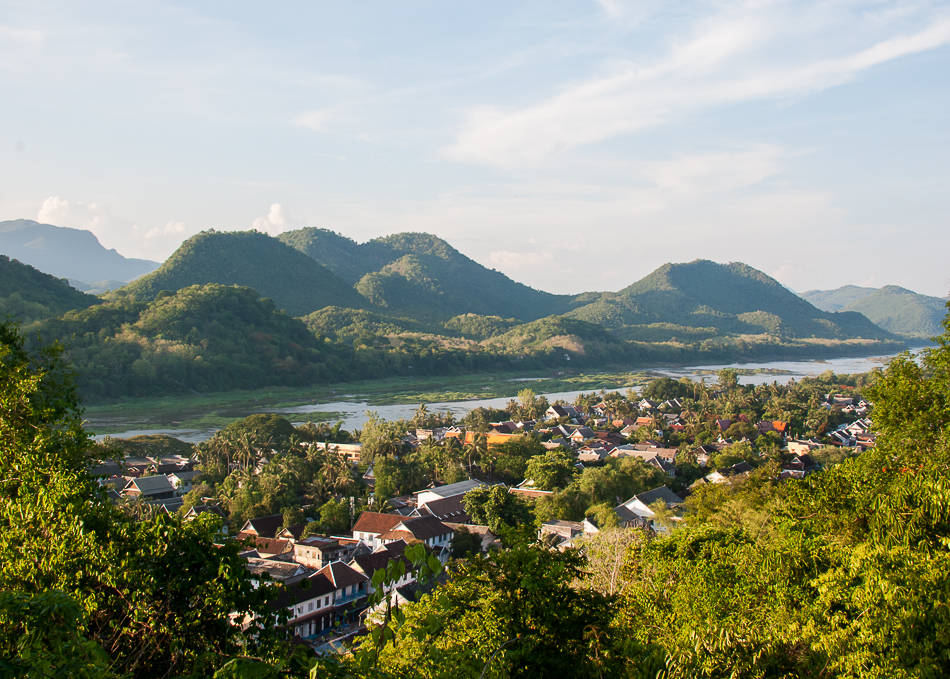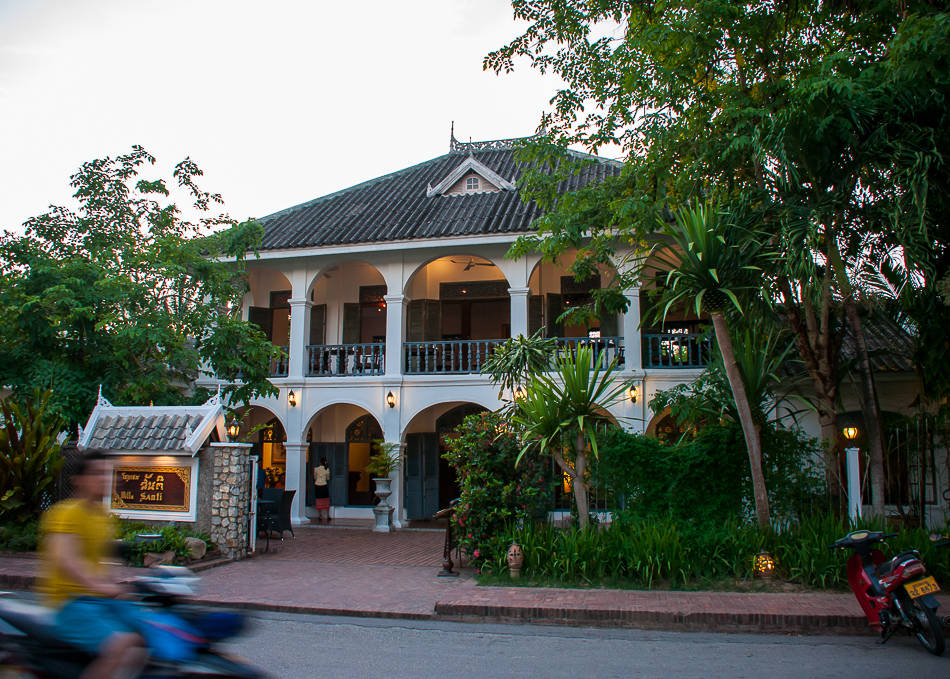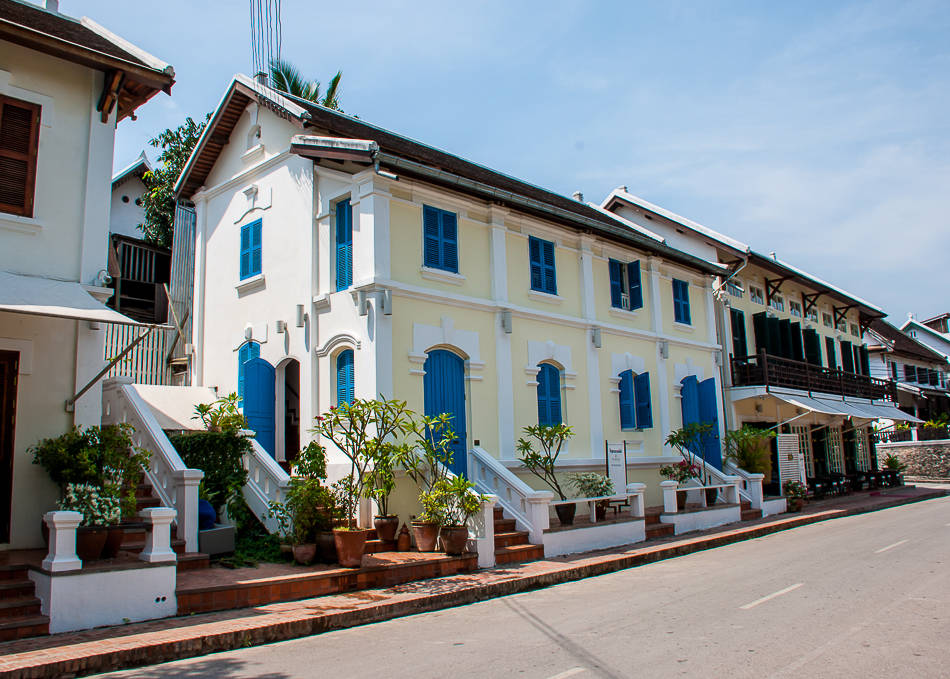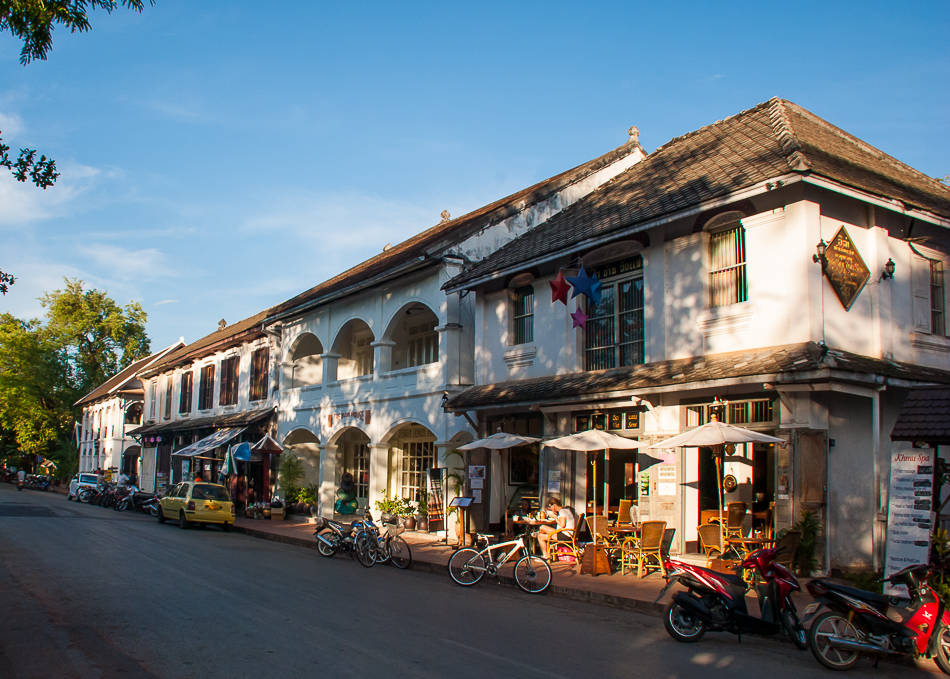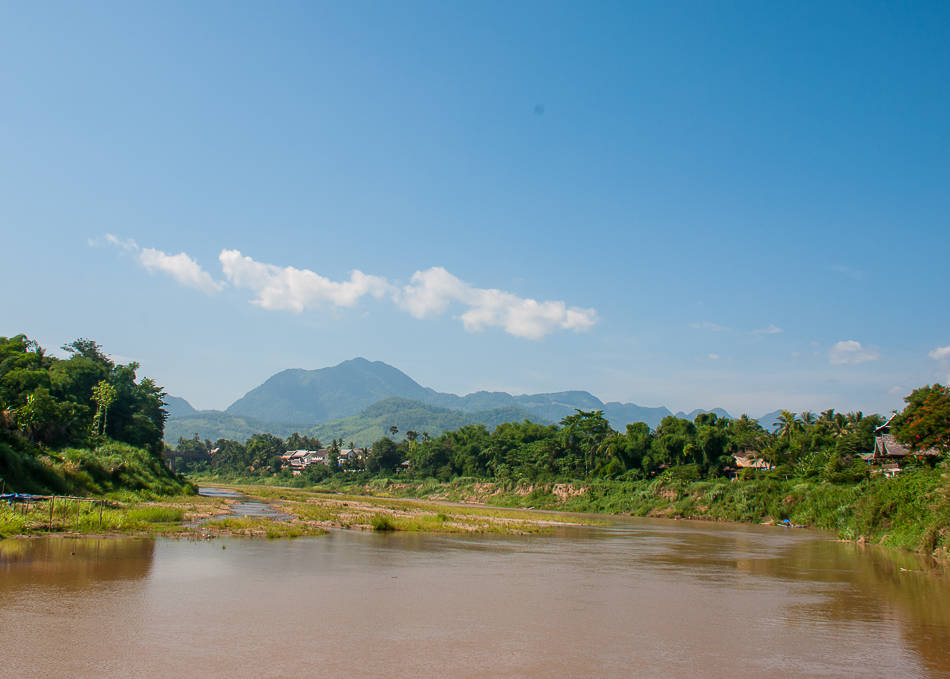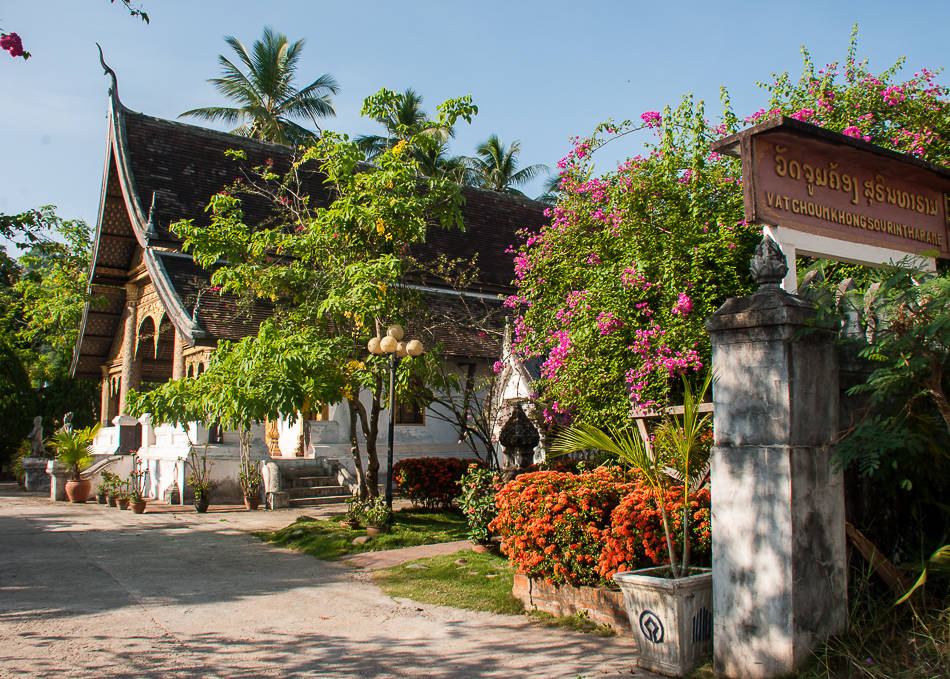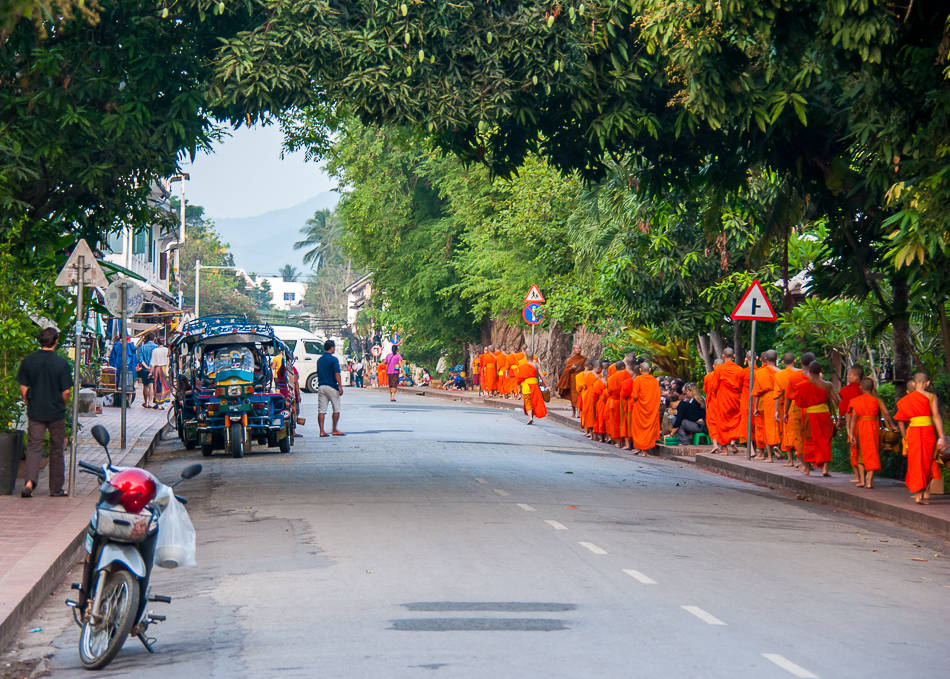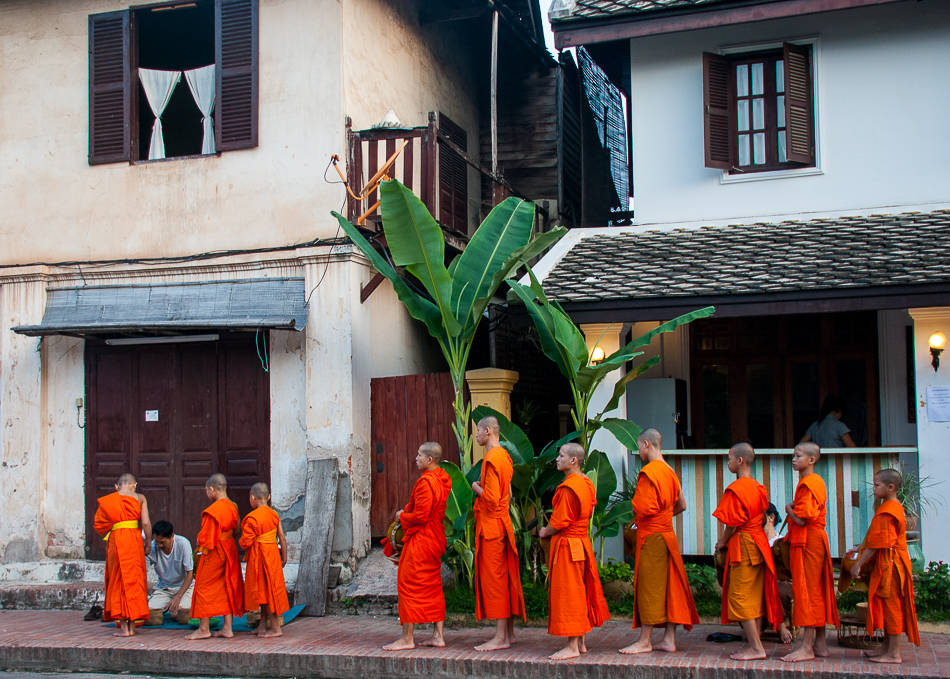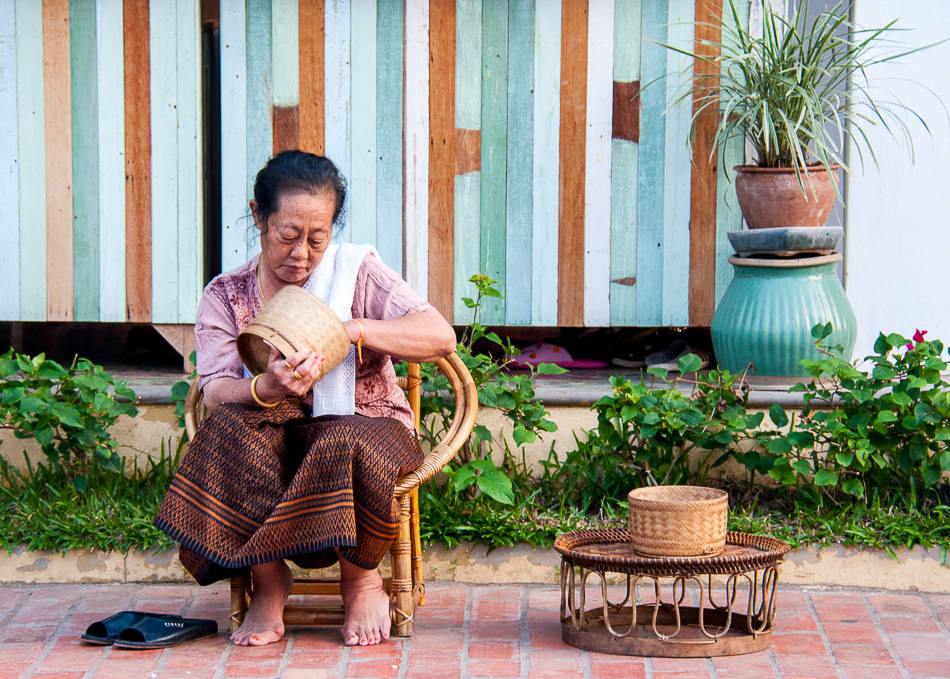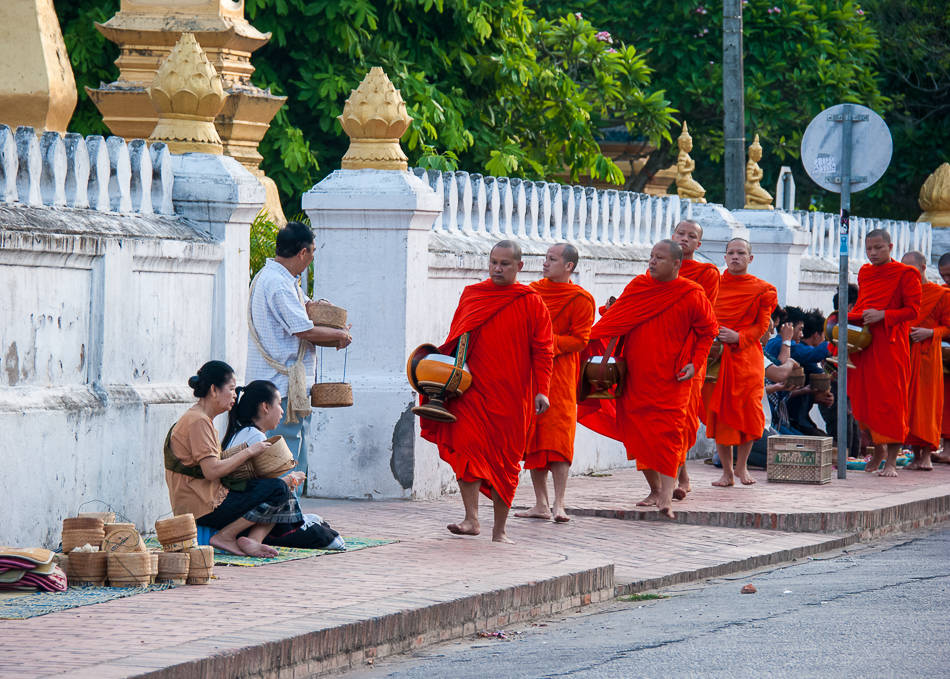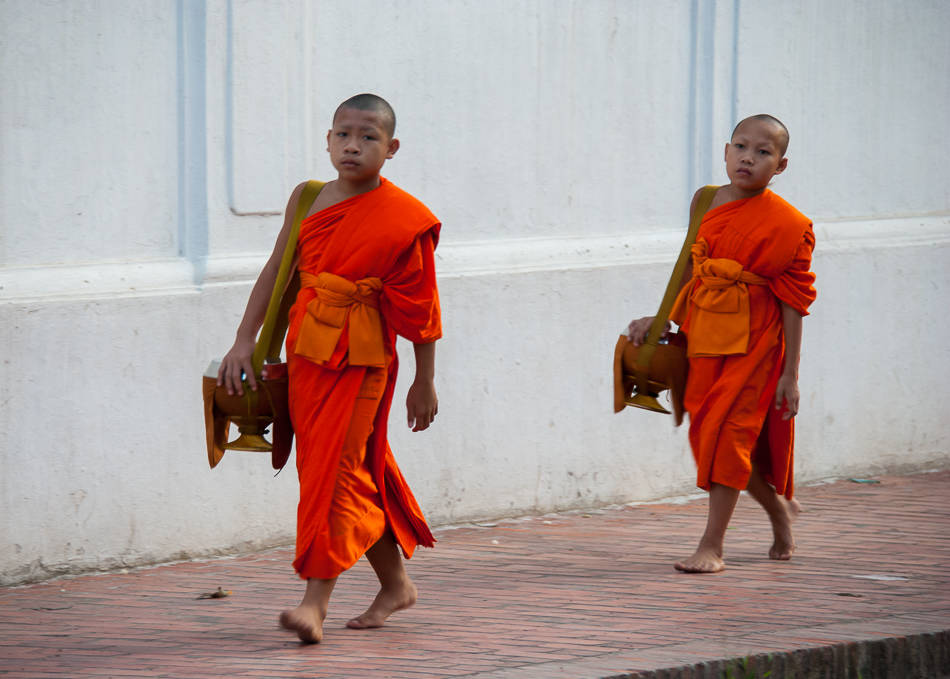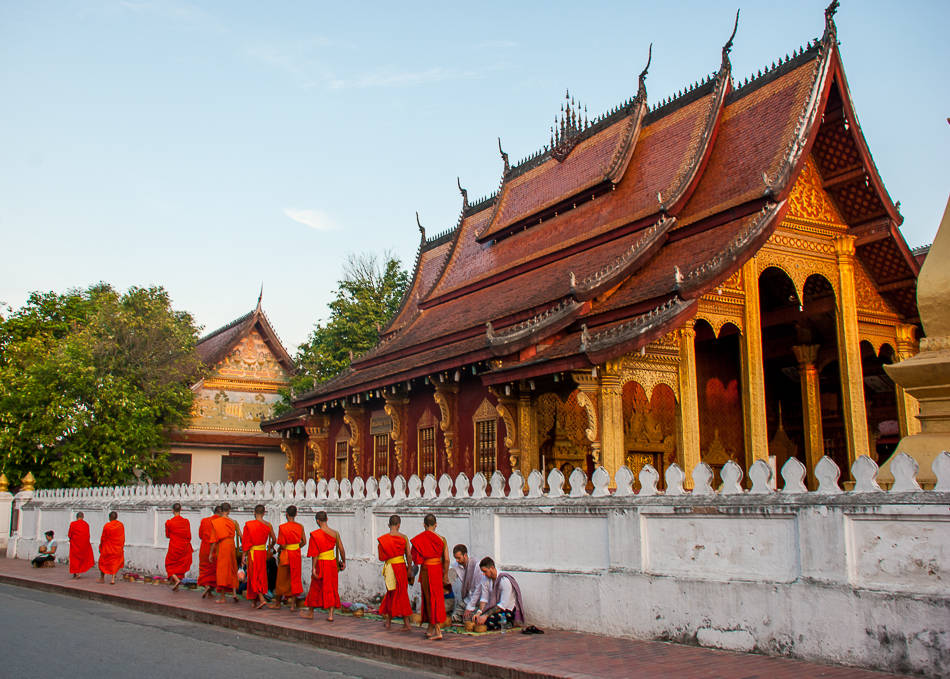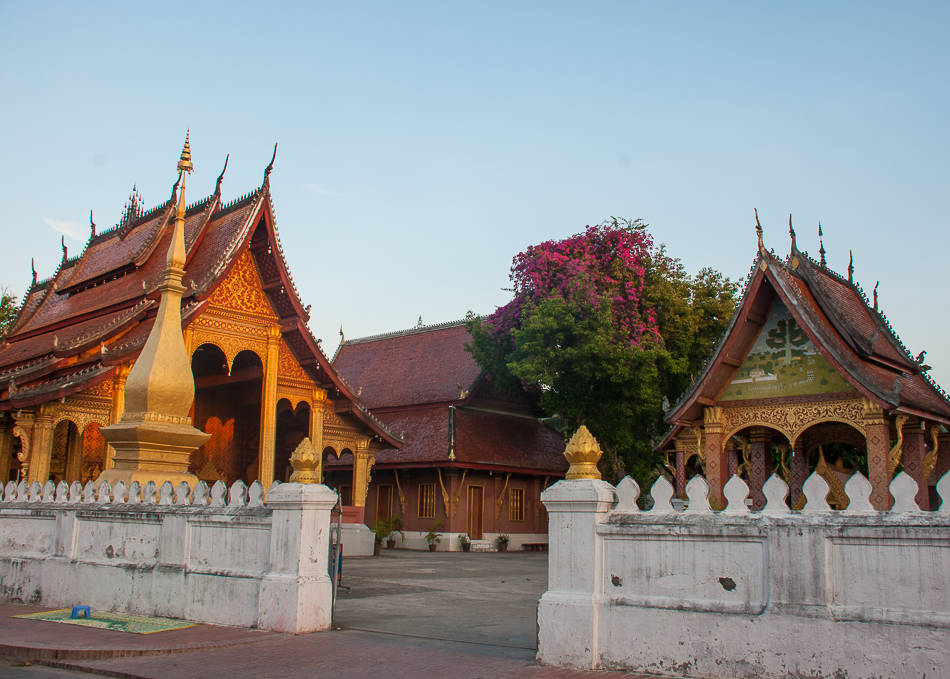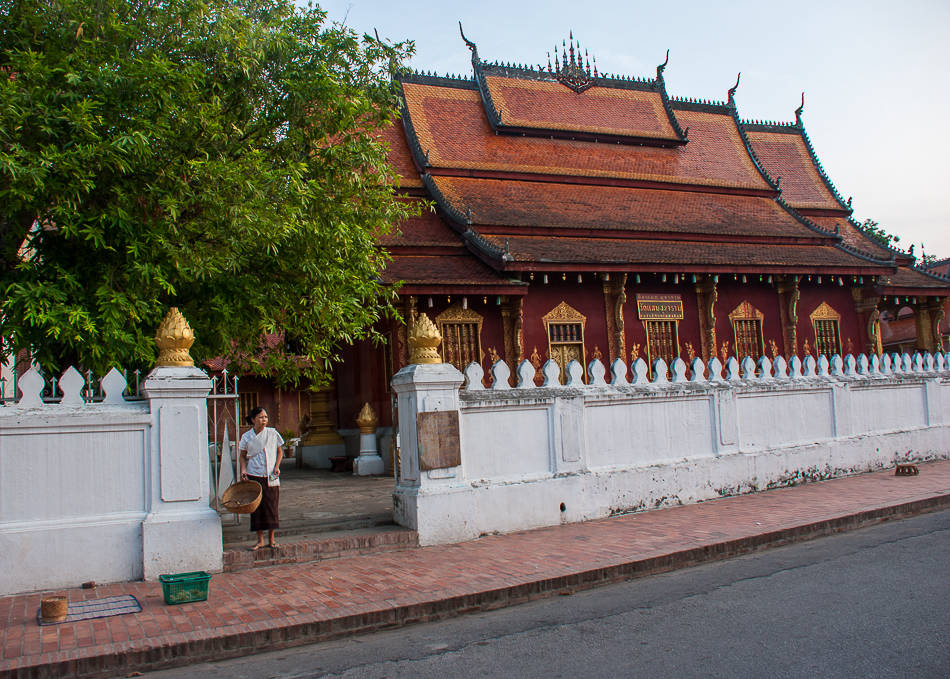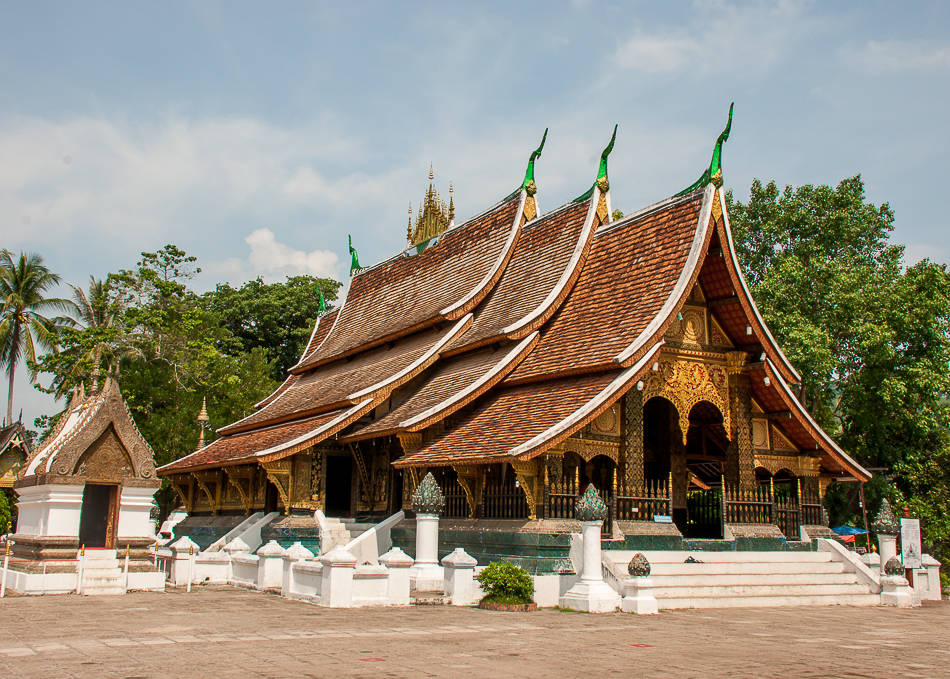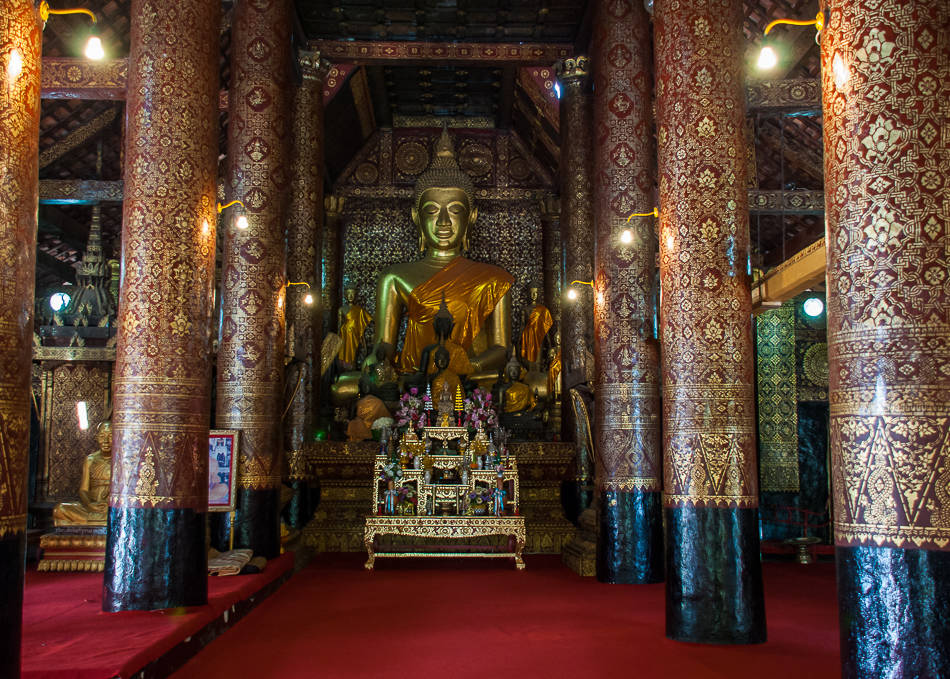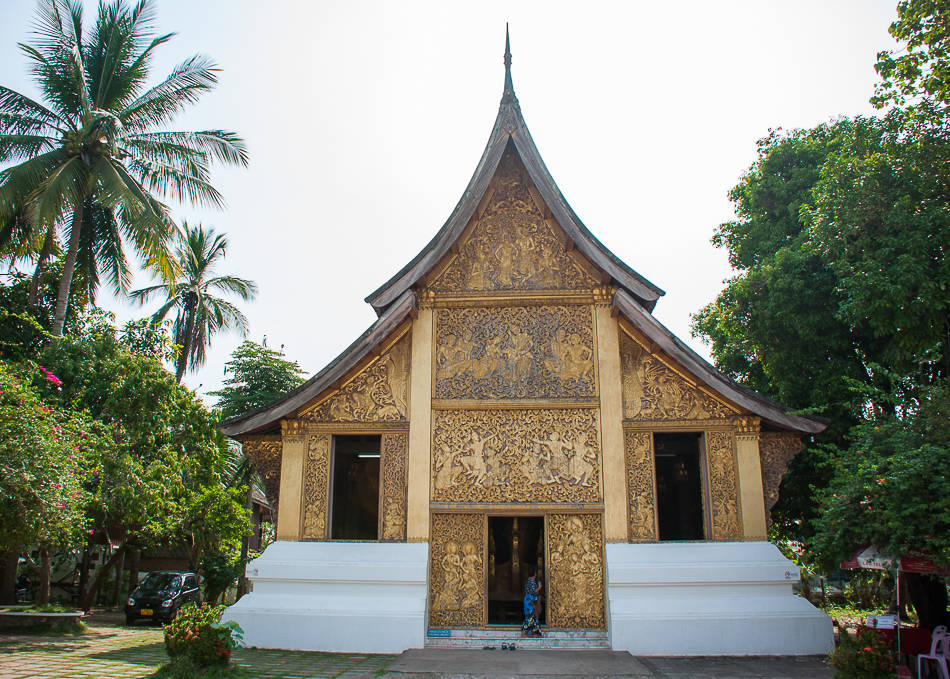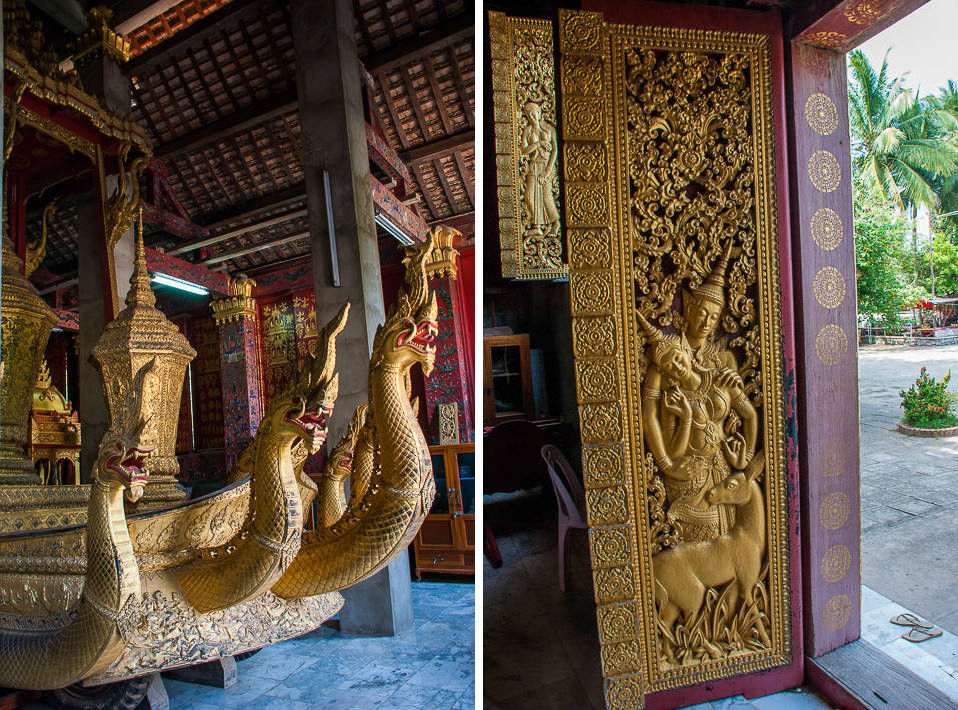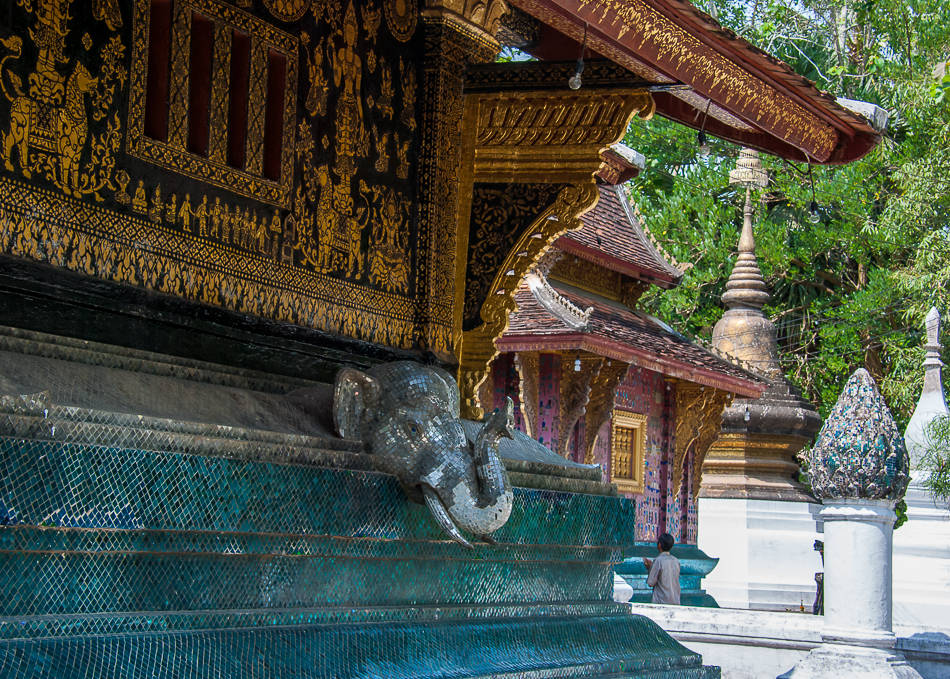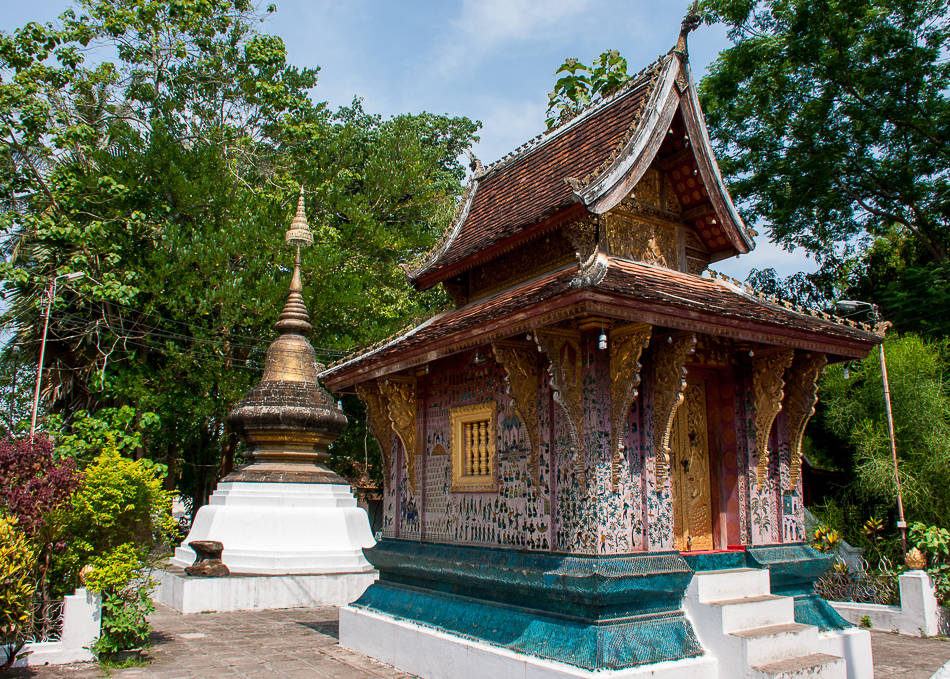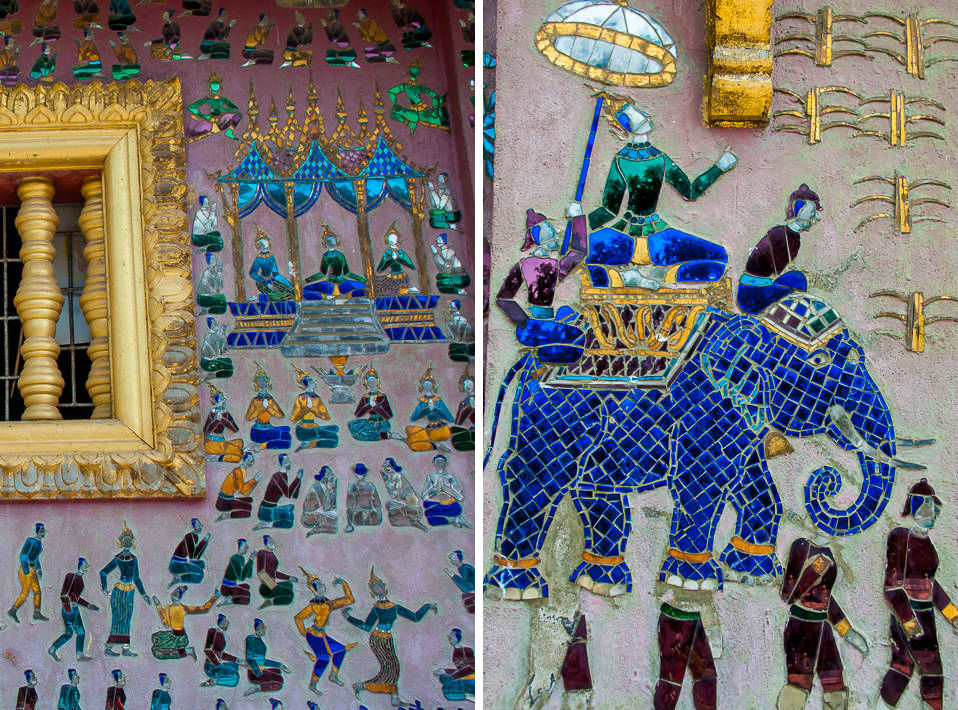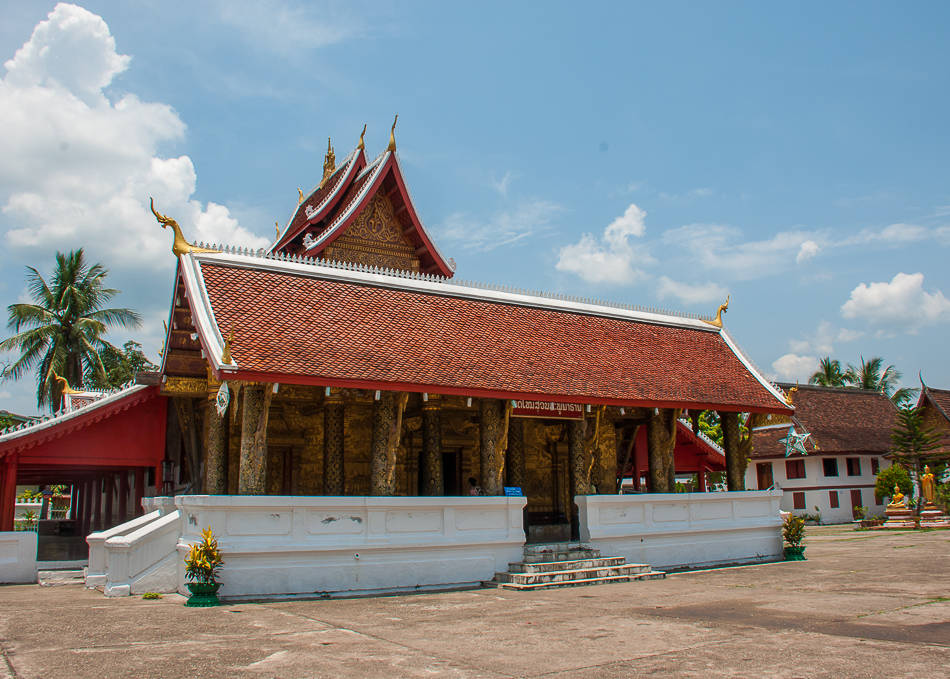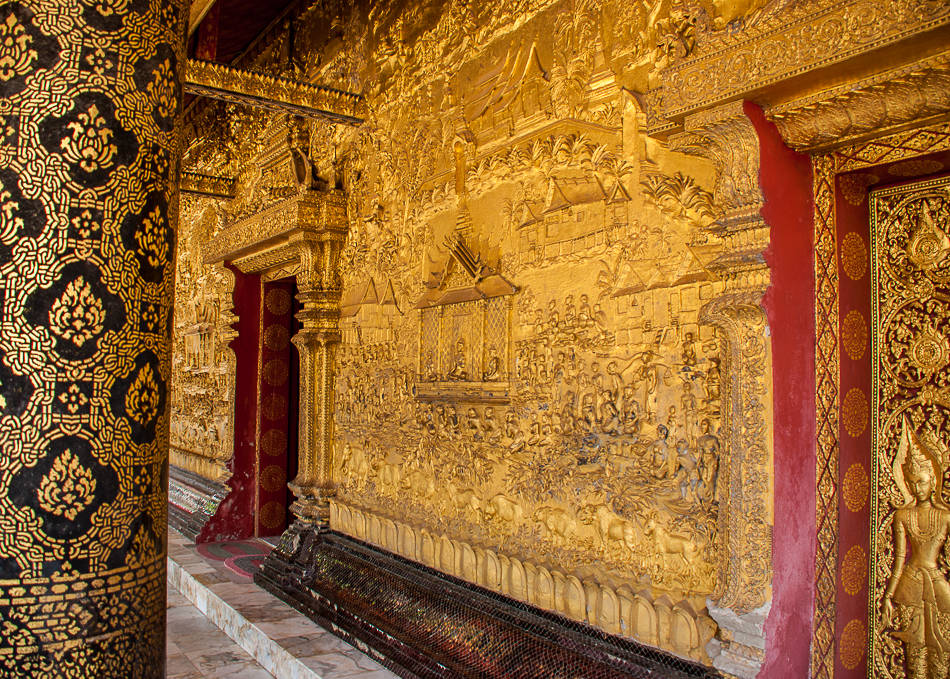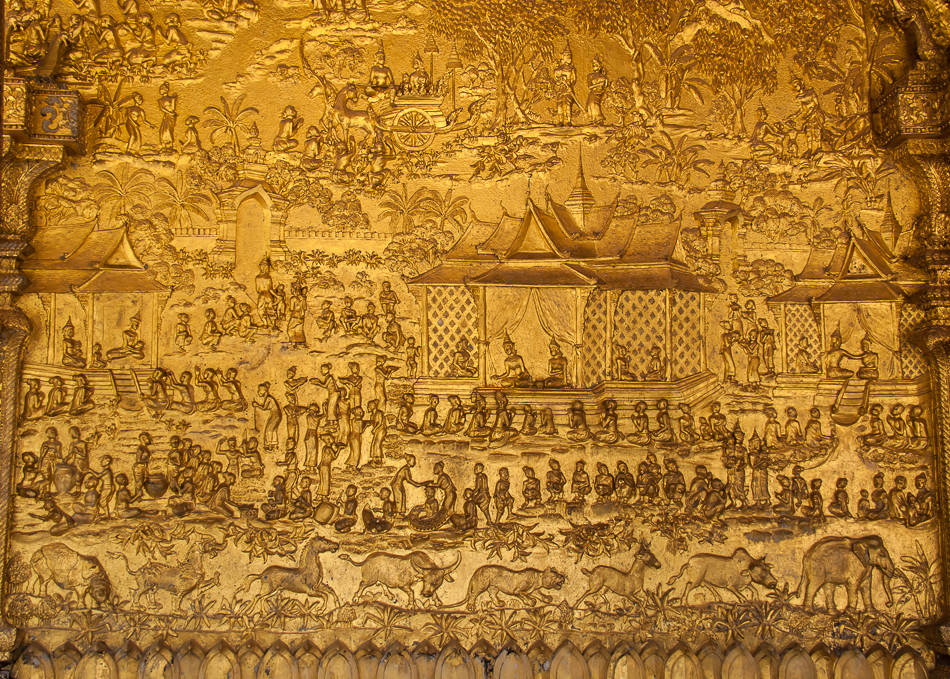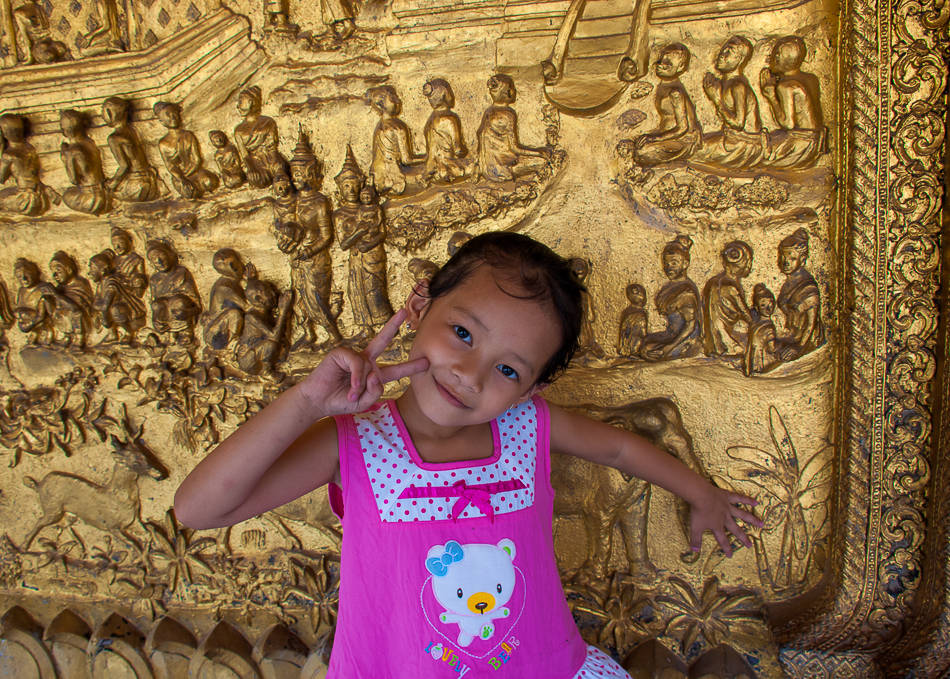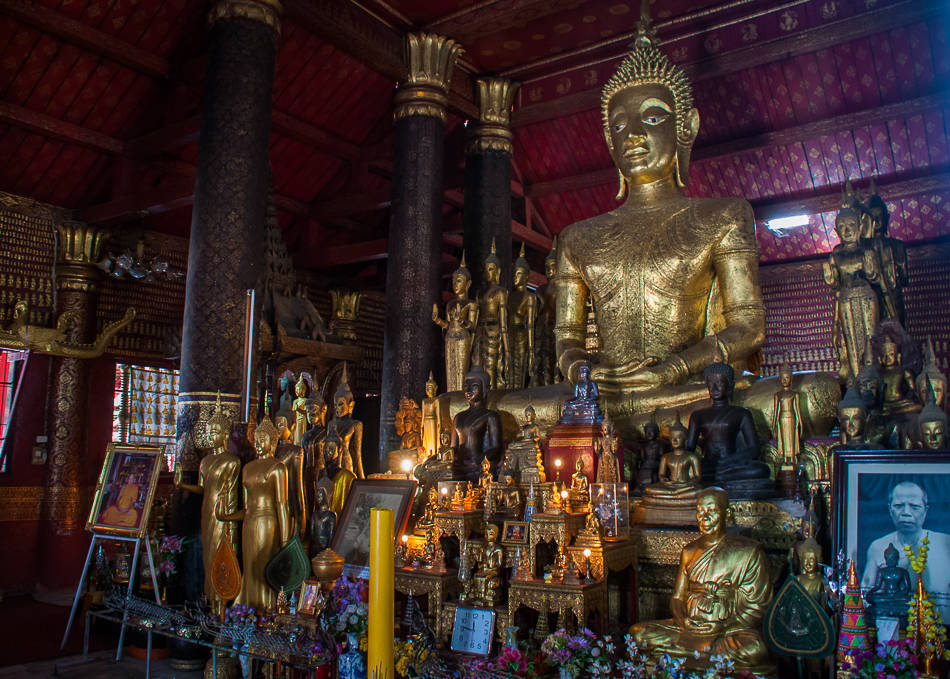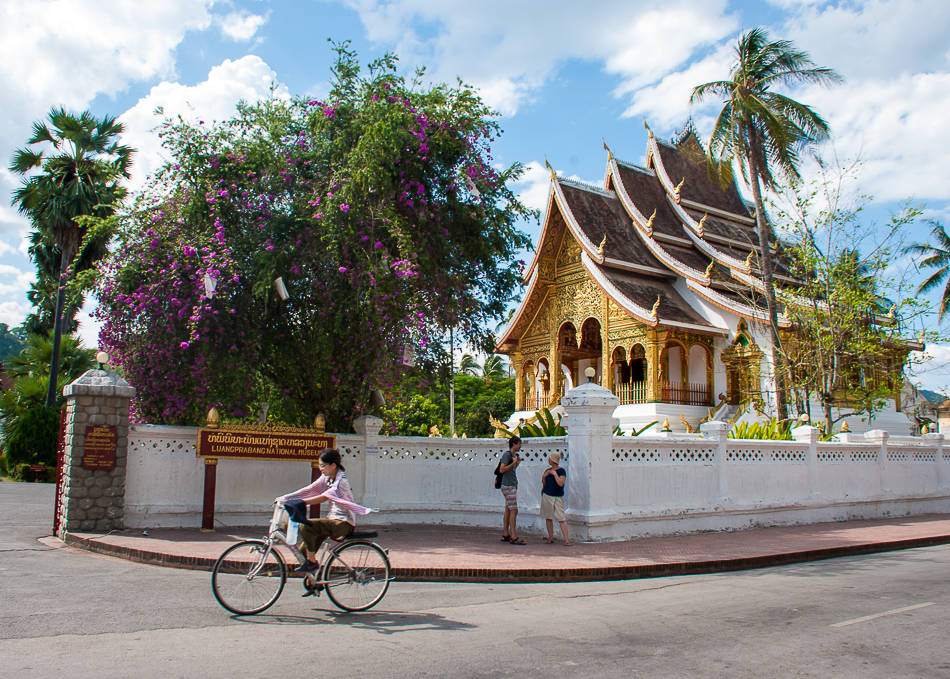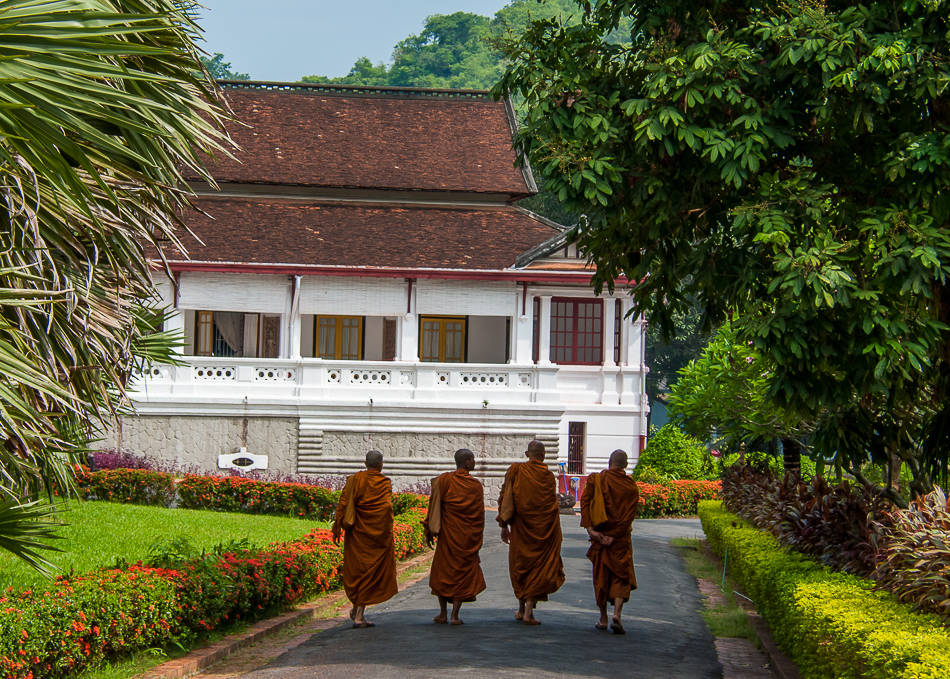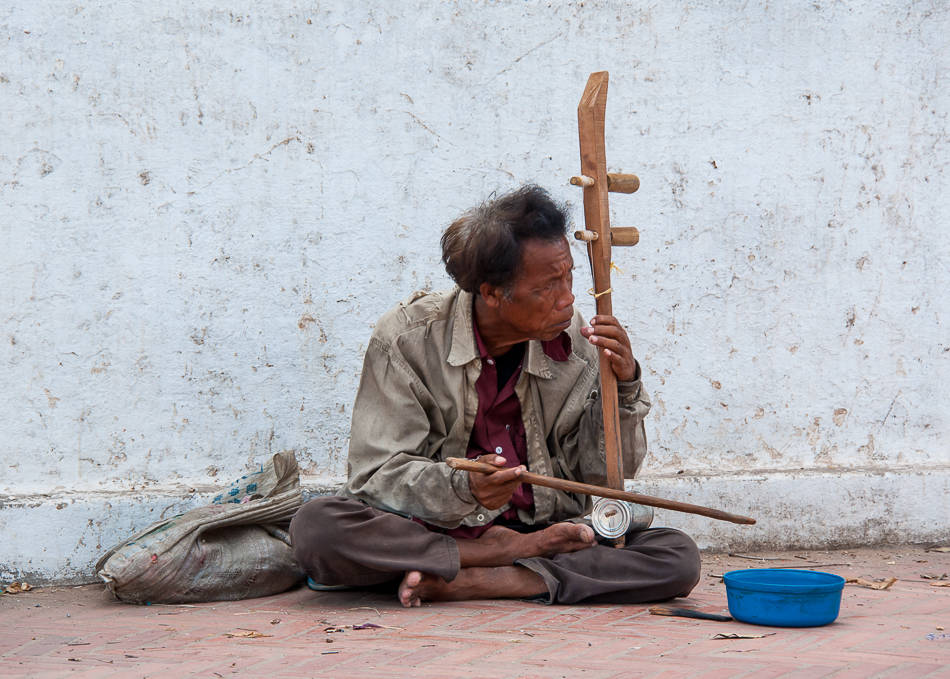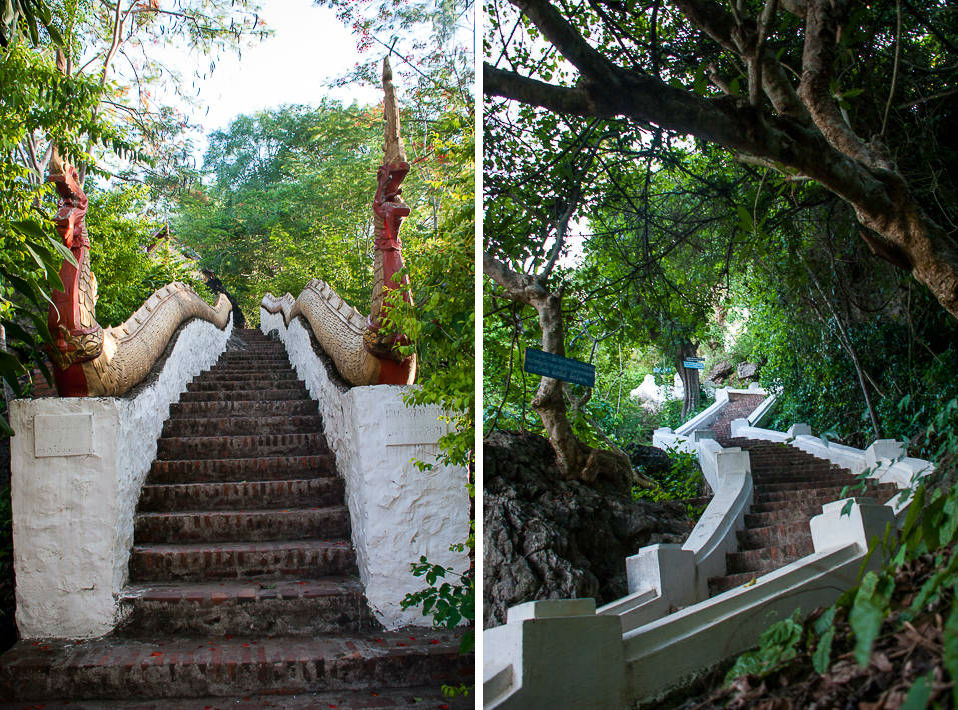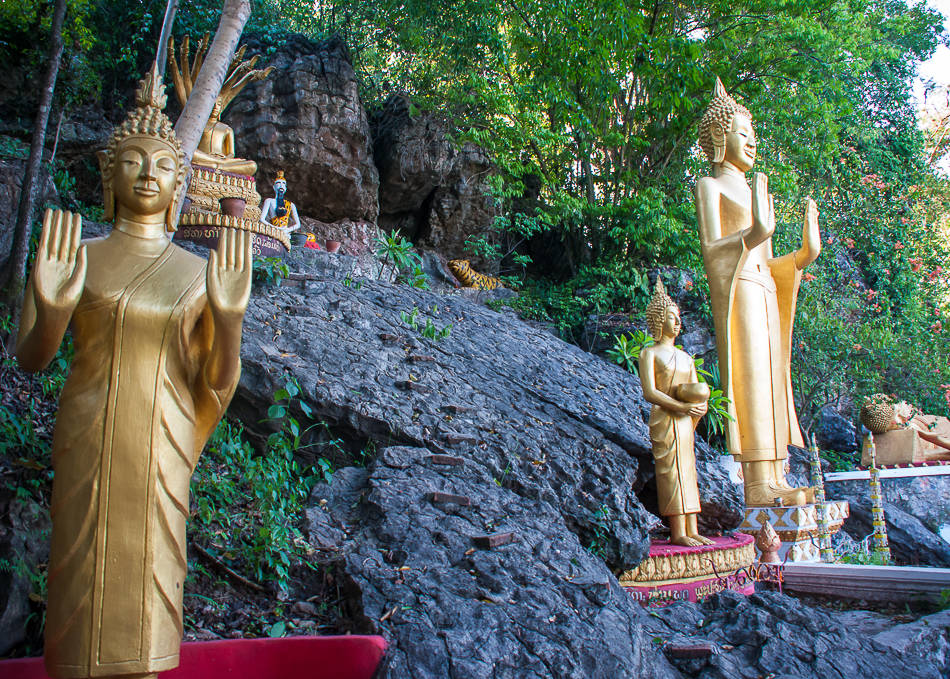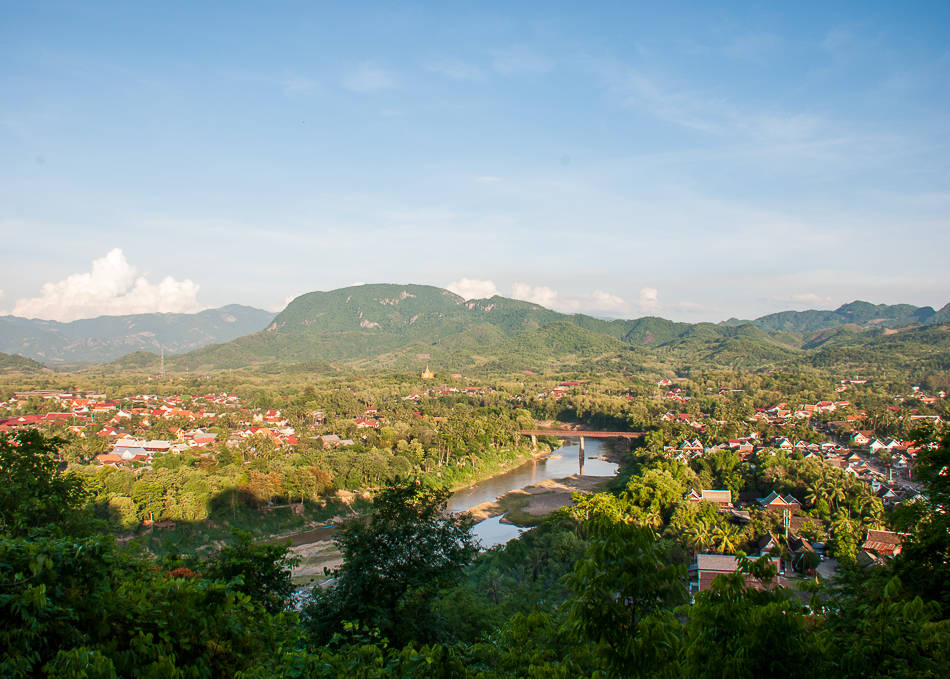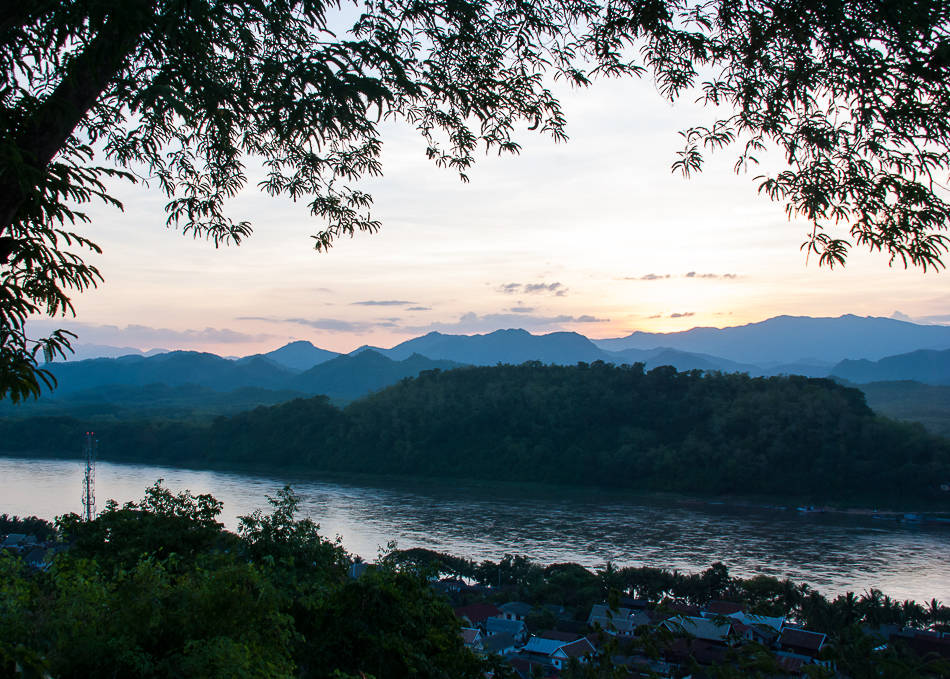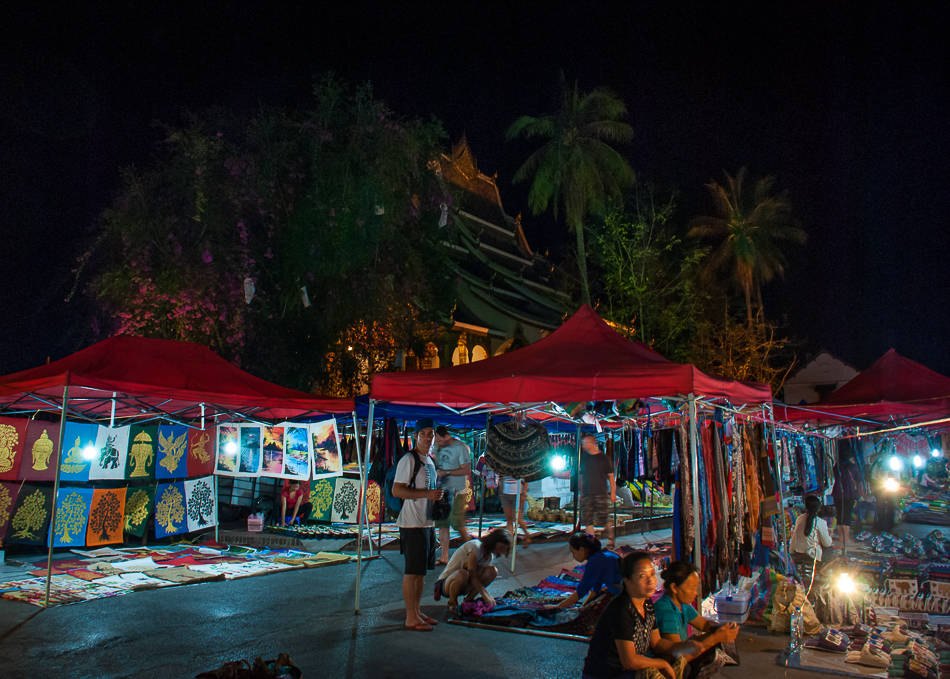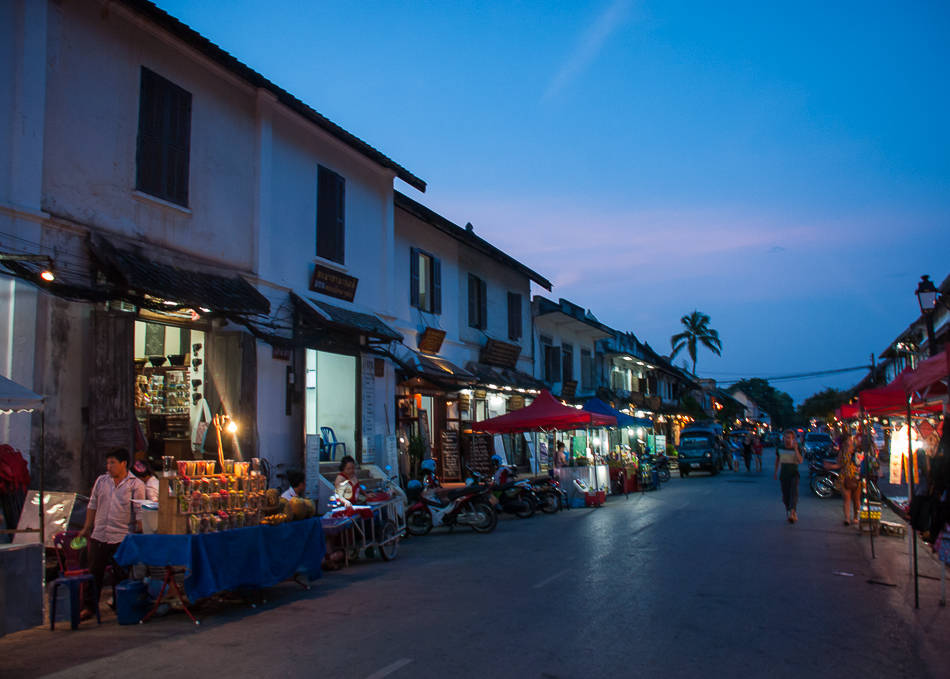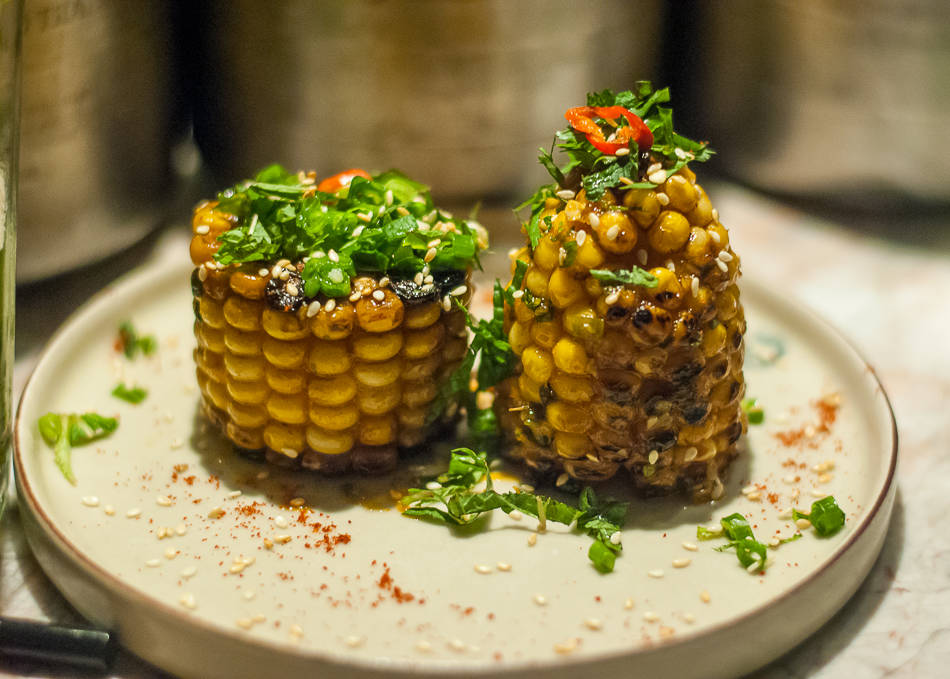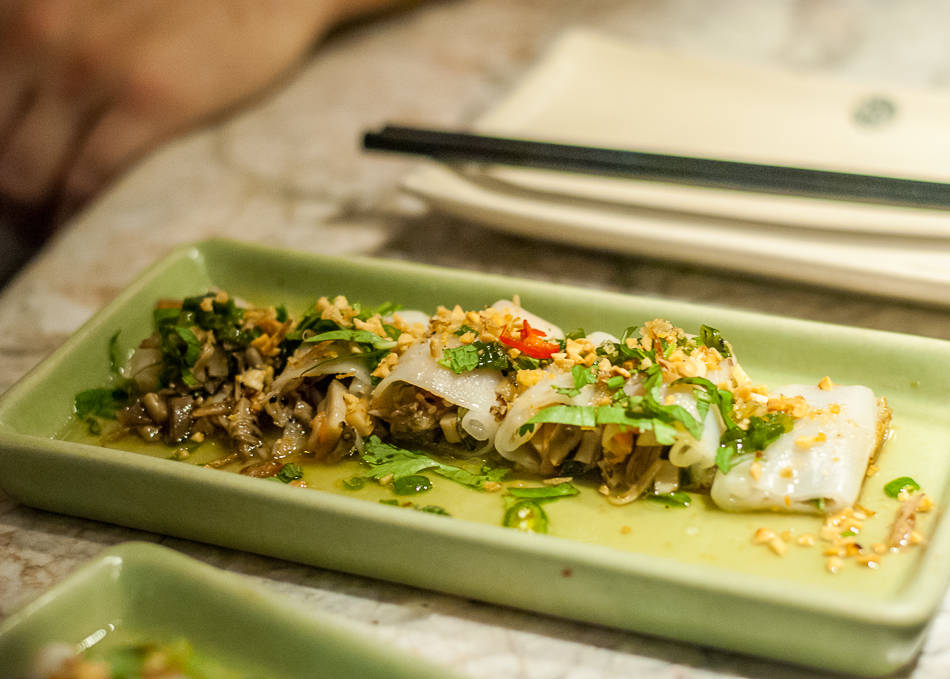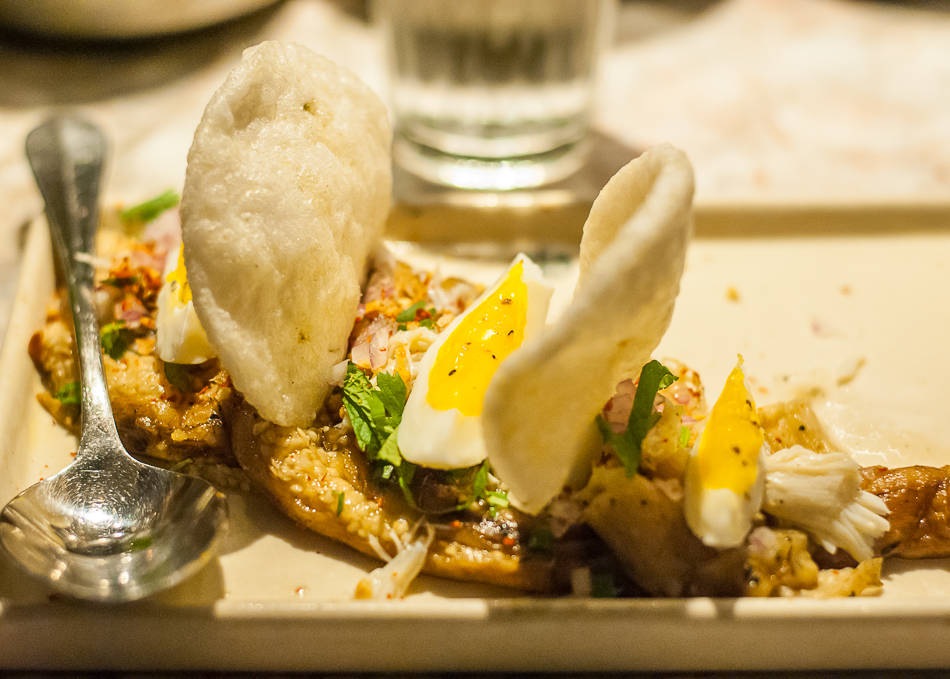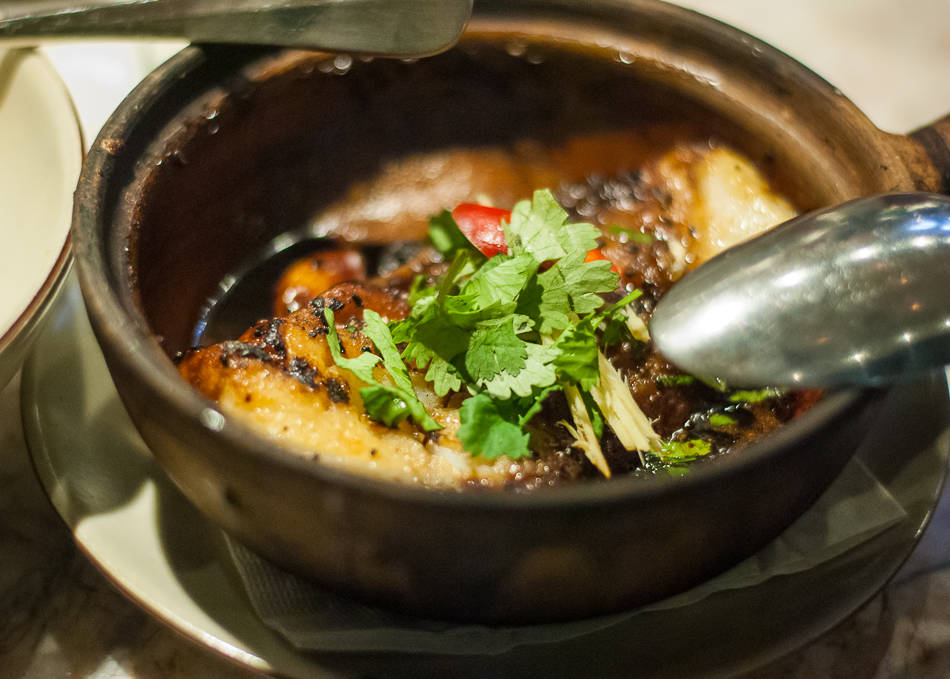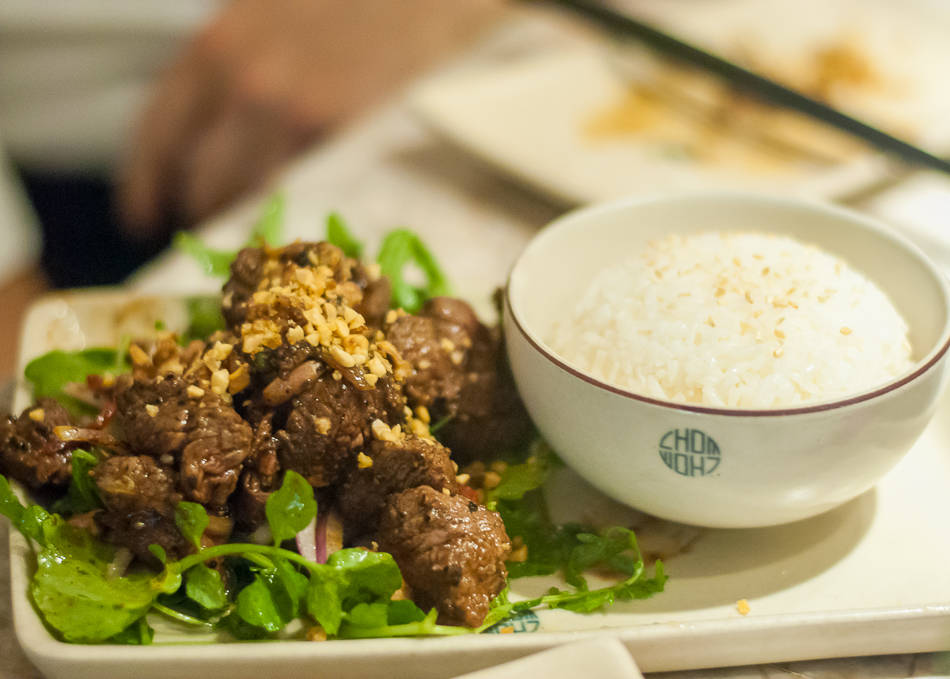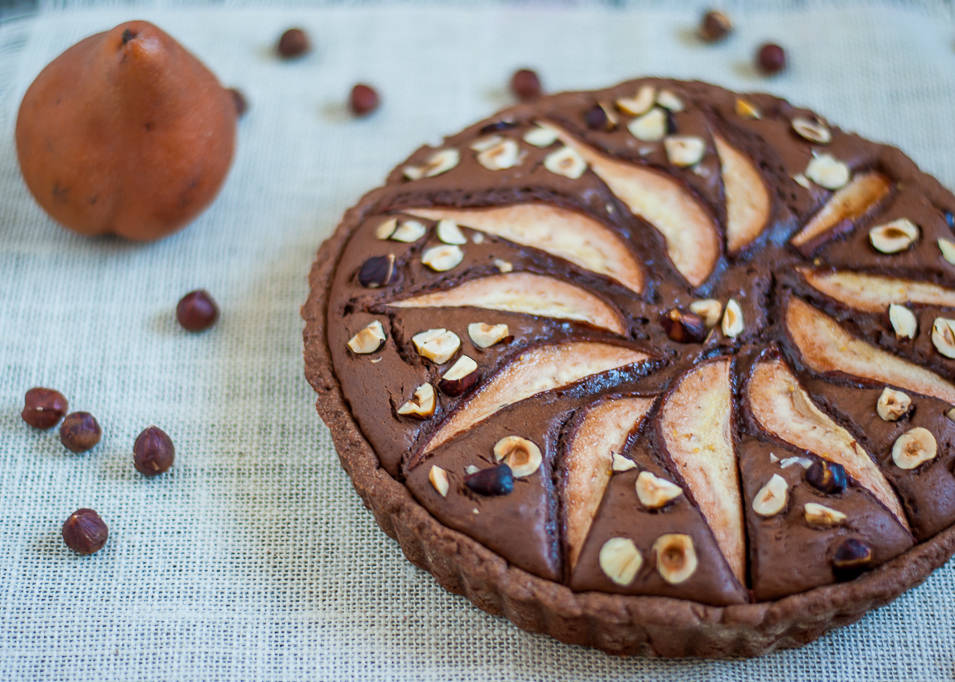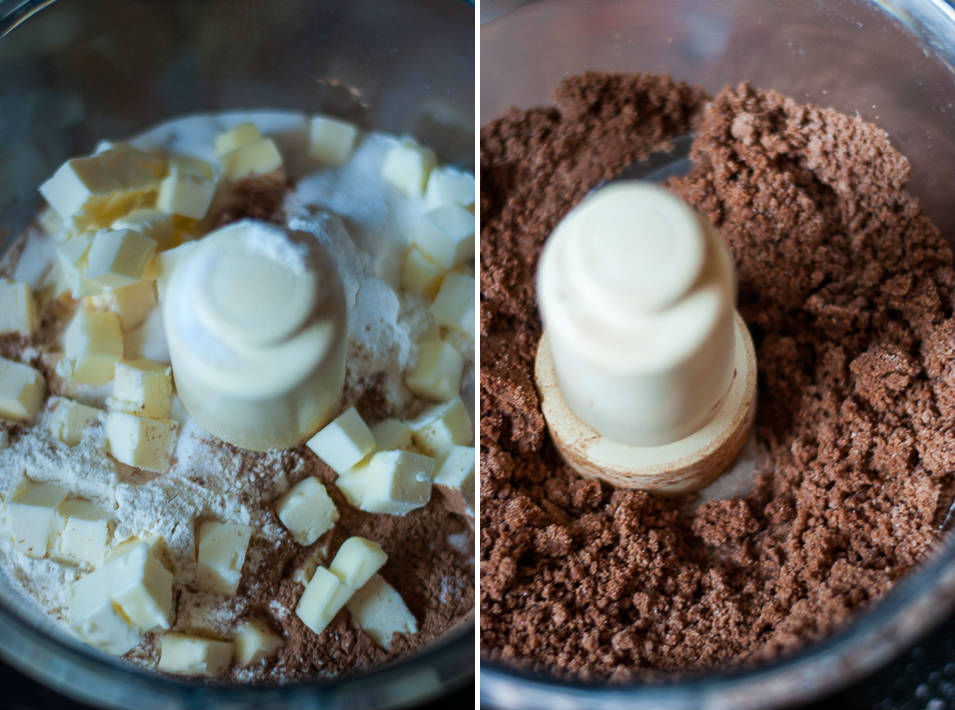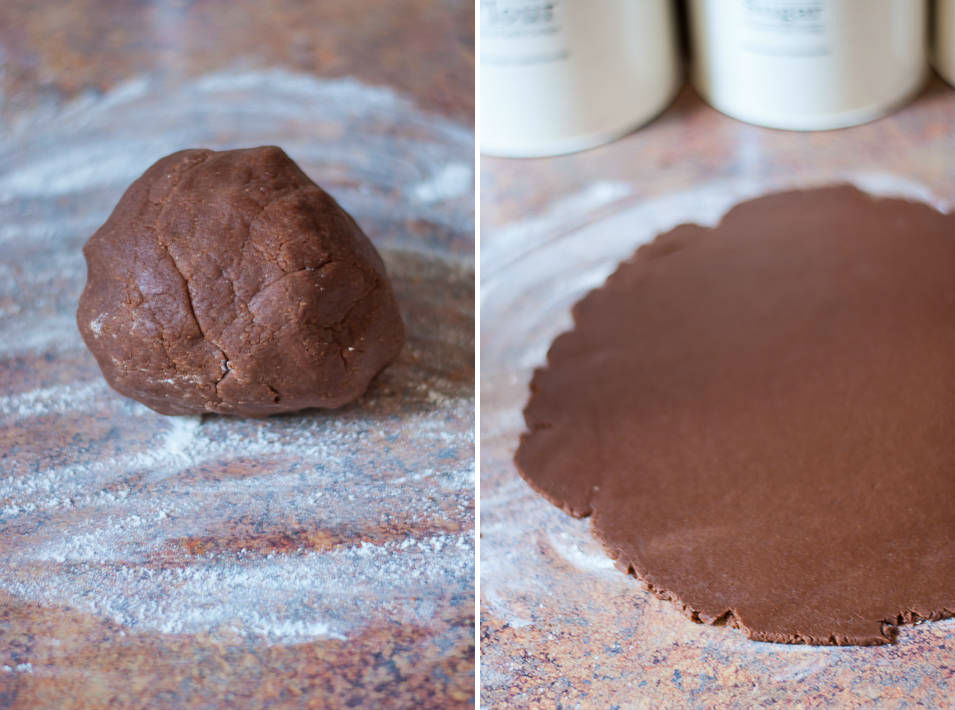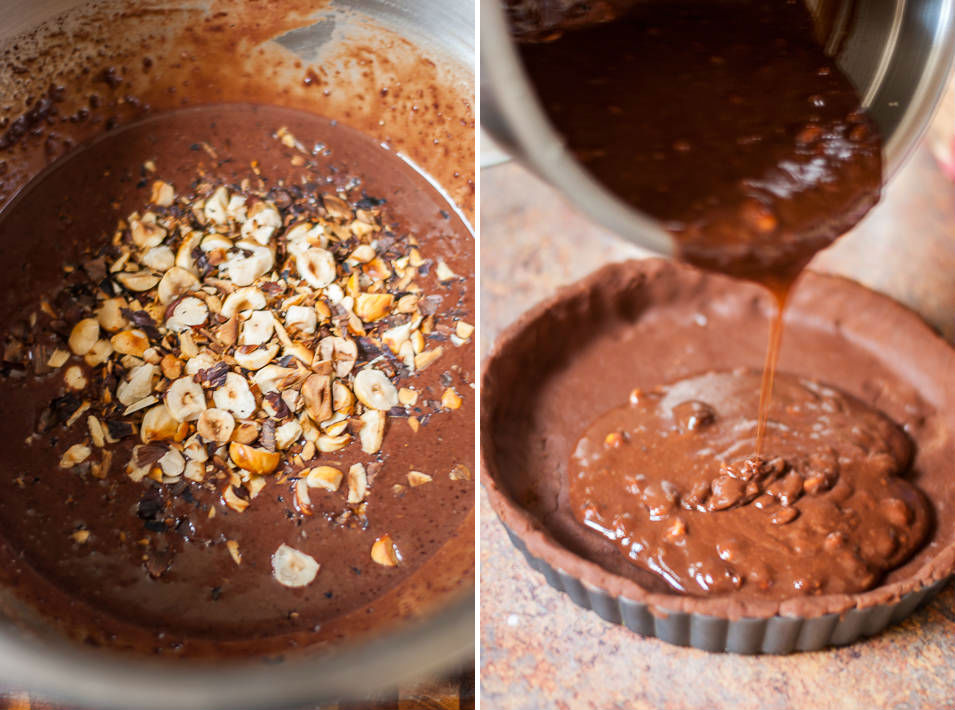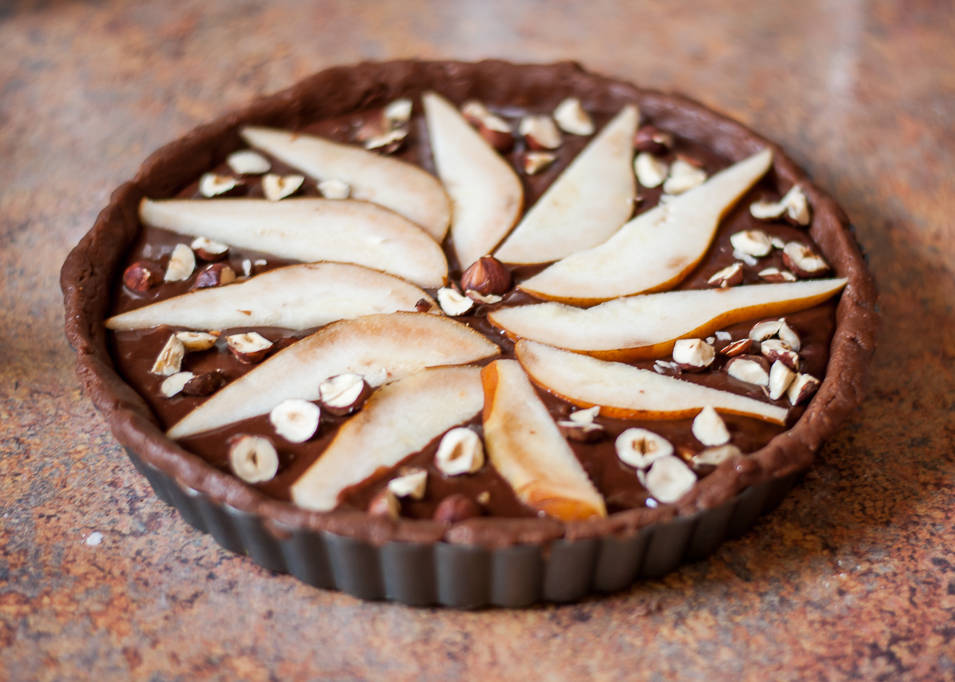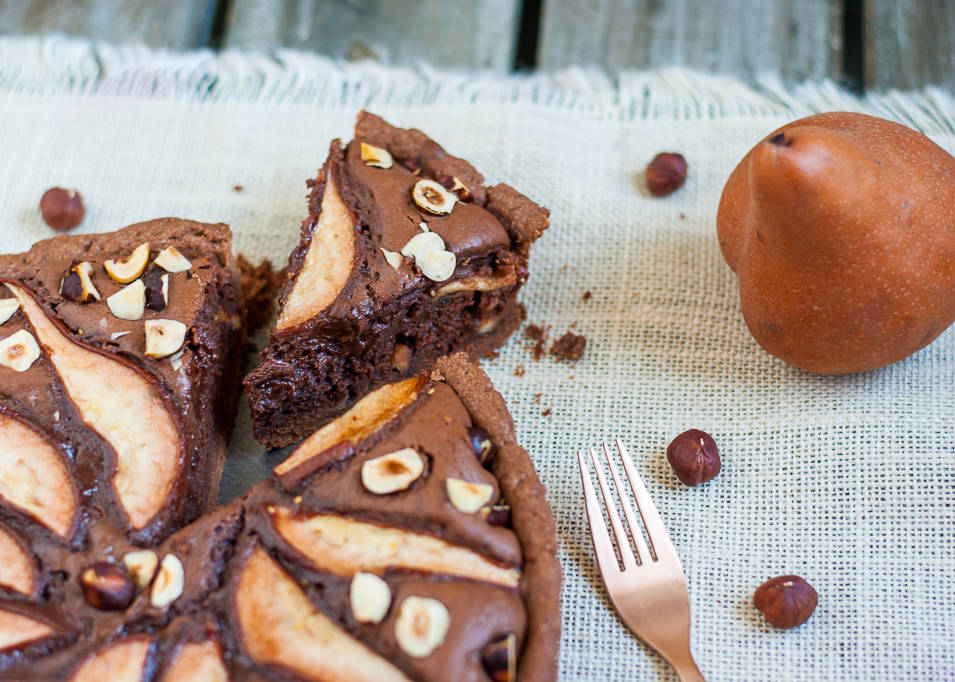It is true that an international airport and an increasing number of glowing reviews of the jewel that is Luang Prabang no longer classify Northern Laos as ‘undiscovered’, but there are still plenty of reasons to venture outside its magnificent capital to explore less visited places – they surely will be the true highlights of your trip.
An easy day trip out of Luang Prabang and a must on many visitors list is Kuang Si Waterfalls. Located about 30km south of the city, you’ll enjoy a scenic ride passing through rice fields and cute villages on the way before witnessing the natural marvel of the falls in all their turquoise splendor.
You can hike all the way to the top to see the source, a 50m waterfall tumbling down from the jungle and feeding a series of stunning cascades and pools in which you can swim and just enjoy the refreshingly cool water. Nature’s very own infinity pools…
Very popular with both tourists and locals who come here with their family and a picnic, it’s the ideal place to escape the heat and cool off for the afternoon. The shade provided by the surrounding lush tropical jungle cools off the water of the swimming holes nicely.
Before leaving, you can also visit the Asiatic Black Bear rescue centre at the entrance of the park which houses a few animals rescued from poachers and traffickers.
For true adventure travel though, you’ll want to head north to experience what I consider some of the best ‘off the beaten path’ locations in Southeast Asia. The north of Laos receives far fewer visitors than its neighbors so you’ll get the incredible mountain scenery and remote hill tribe villages practically all to yourself.
A 3 hours ride from Luang Prabang (don’t worry, there’s plenty to see en route!) will bring you to Nong Kiau (or Nong Khiaw), a small town on the banks of the Nam Ou river which is as much a destination in itself as a stepping stone to a more in-depth journey further north.
The town straddles the river with the bus station, tour companies, and boats on the western side and a handful of guesthouses and restaurants on the eastern side. The bridge is at the center of life here and doubles as one of the best vantage point for taking shots of the most picturesque river views you’re likely to see…
… definitely one of the most scenic spot in northern Laos (looking north).
And looking south…
Once you’re here, there are really only two possibilities to fill up your days: go trekking through the untouched forests and minority villages, or relax on the river. For the latter, you couldn’t pick a better spot than Nong Kiau Riverside Ecolodge which stretches over 300 meters along the river.
The 15 large bungalows are comfortably laid out with 4 poster beds, mosquito nets,…
…and most importantly a huge balcony looking out over the coffee colored waters and stunning jagged limestone mountains – magnificent.
You’ll want as I did to simply absorb the tranquil and remarkable scenery, soaking up every sunrise and sunset, never tiring of the views and chilled atmosphere of what remains one of the most laid back places in Laos.
If you itch for a bit of activity though, there is plenty to do whether you want to borrow a bike and go explore some famous caves, go tubing down the river, or simply take one of the trails near the resort for a morning walk after a hot Lao tea.
The gentle hike will have you walk past isolated farms and remote villages all with the gorgeous backdrop of the river and imposing mountains.
Keep your eyes open for butterflies as they are incredibly numerous and quite stunning around here.
rA journey to northern Laos wouldn’t be complete without stepping in a boat which is often the only way to get around. The Nam Ou river offers some of the most breathtaking panoramas in the country and a real insight into the lives of the local tribes established on its shores.
Water buffalos can be seen bathing all along the river.
Stopping at a village en route, I was able to witness a bit of the local life.
The Khmu tribe is one of the largest minority ethnic groups in Northern Laos.
Traditional bamboo basket weaving is one of the tribe’s craft specialty.
Late afternoon, I partake in a favorite ritual in Laos – drinking homemade Lao Lao with a local family while chatting up the village gossips (they were talking, I couldn’t understand!). Lao Lao is the local rice whiskey, one of the cheapest alcohol in the world and, at over 40% alcohol content, a quick way to feel comfortable and engage with the locals…
Back in the boat, we continued gliding amidst the ever so pleasant vistas for a while… has to be one of my favorite commutes in all my past travels.
The next stop, and the end of my Northern Laos journey, is the gorgeous and sleepy riverside village of Muang Ngoi. A true hideaway, the ‘no wifi’ zone has only a few hours of electricity in the evenings and hammocks on almost every guesthouses balcony so you can practice what you should really be doing here: chilling out. Without any cars or motorbikes, the silence is shocking at first but deeply gratifying afterwards.
Tell your family and friends you’ll be incommunicado for a few days and spend the days swinging and appreciating the most spectacular stretches of the Nam Ou river on either side of the village.
Village children spend their days splashing in the water and will be more than happy to include you in their games. The people of Laos are in general really friendly but those of Muang Ngoi win hands down. They are accustomed to hosting backpackers, of which you’ll surely meet a few, and eager to practice their English over a Beerlao.
The only street, or path, is a 500m long dirt road linking the monastery towards a dramatic craggy green limestone mountain towering above.
While I unfortunately had to take the river back down towards Luang Prabang, more adventures await to the North in one of the last frontiers of true adventure travel in Asia. The roads may be rough and the rivers slow but I can’t think of a more wonderfully relaxed, friendly, and easy to get around part of the world.

